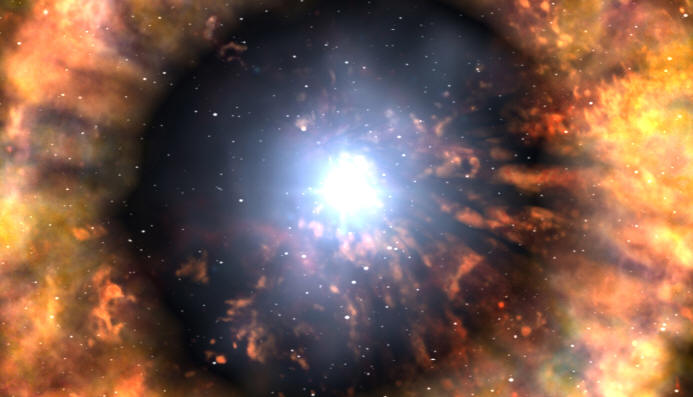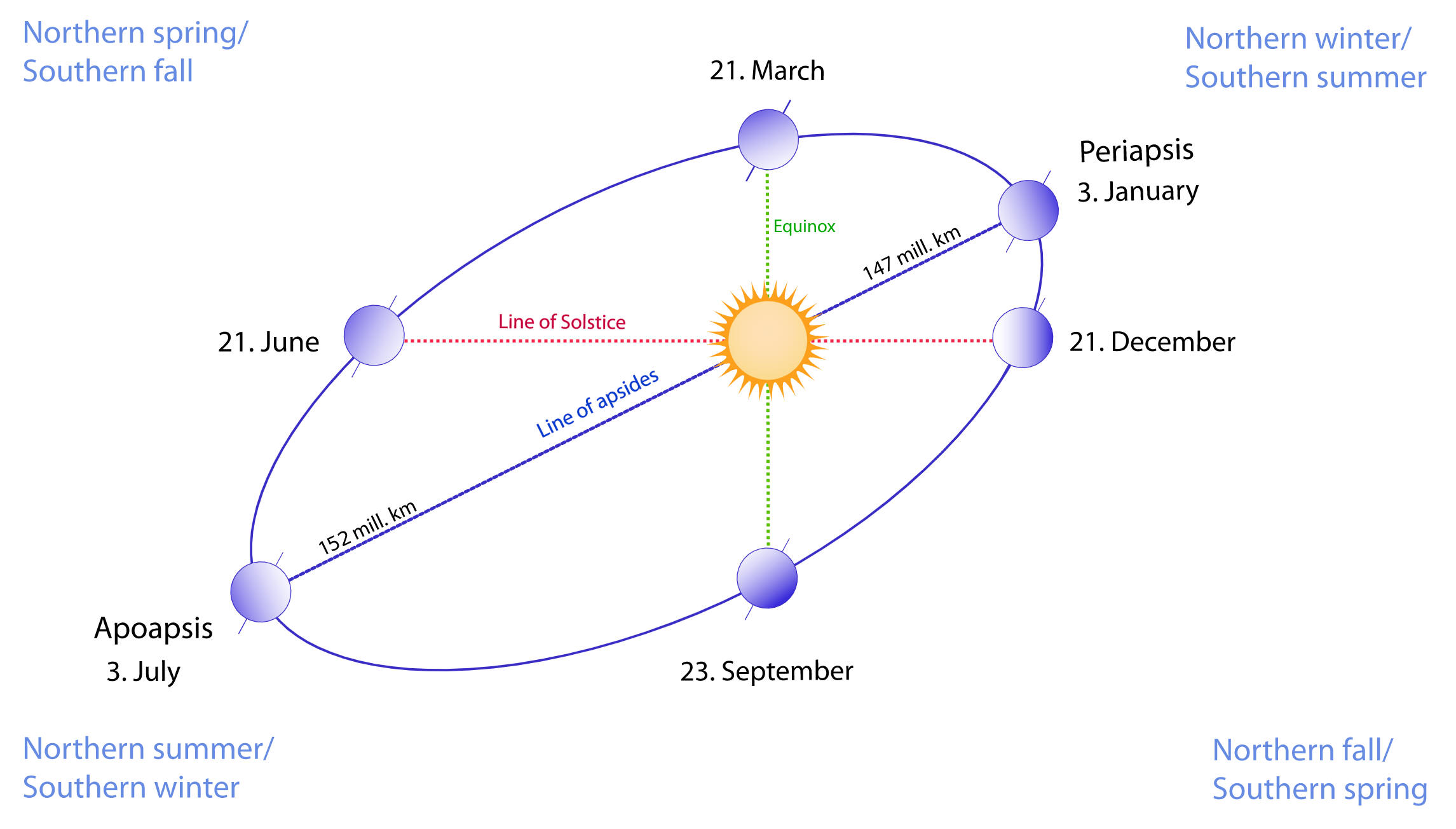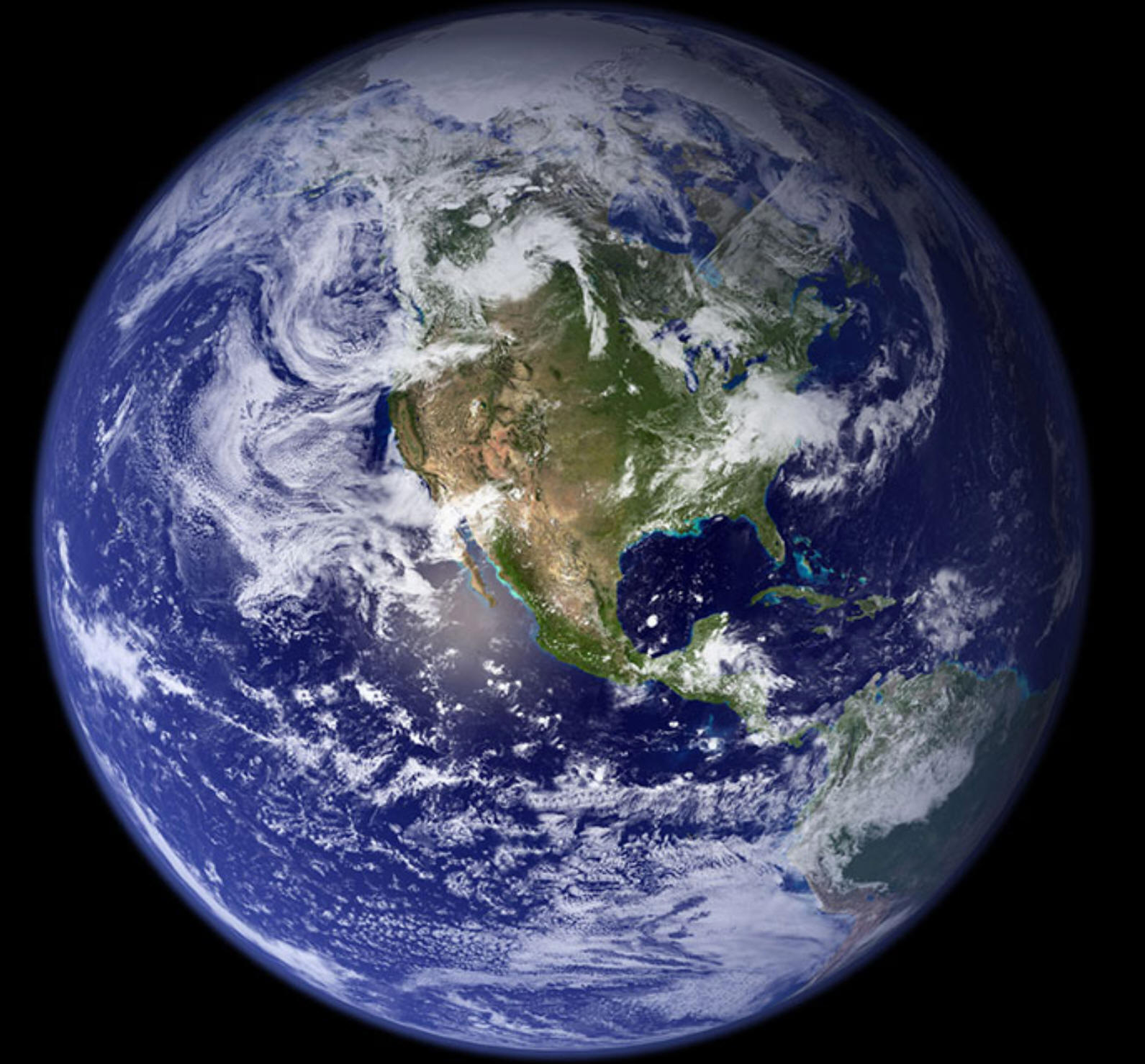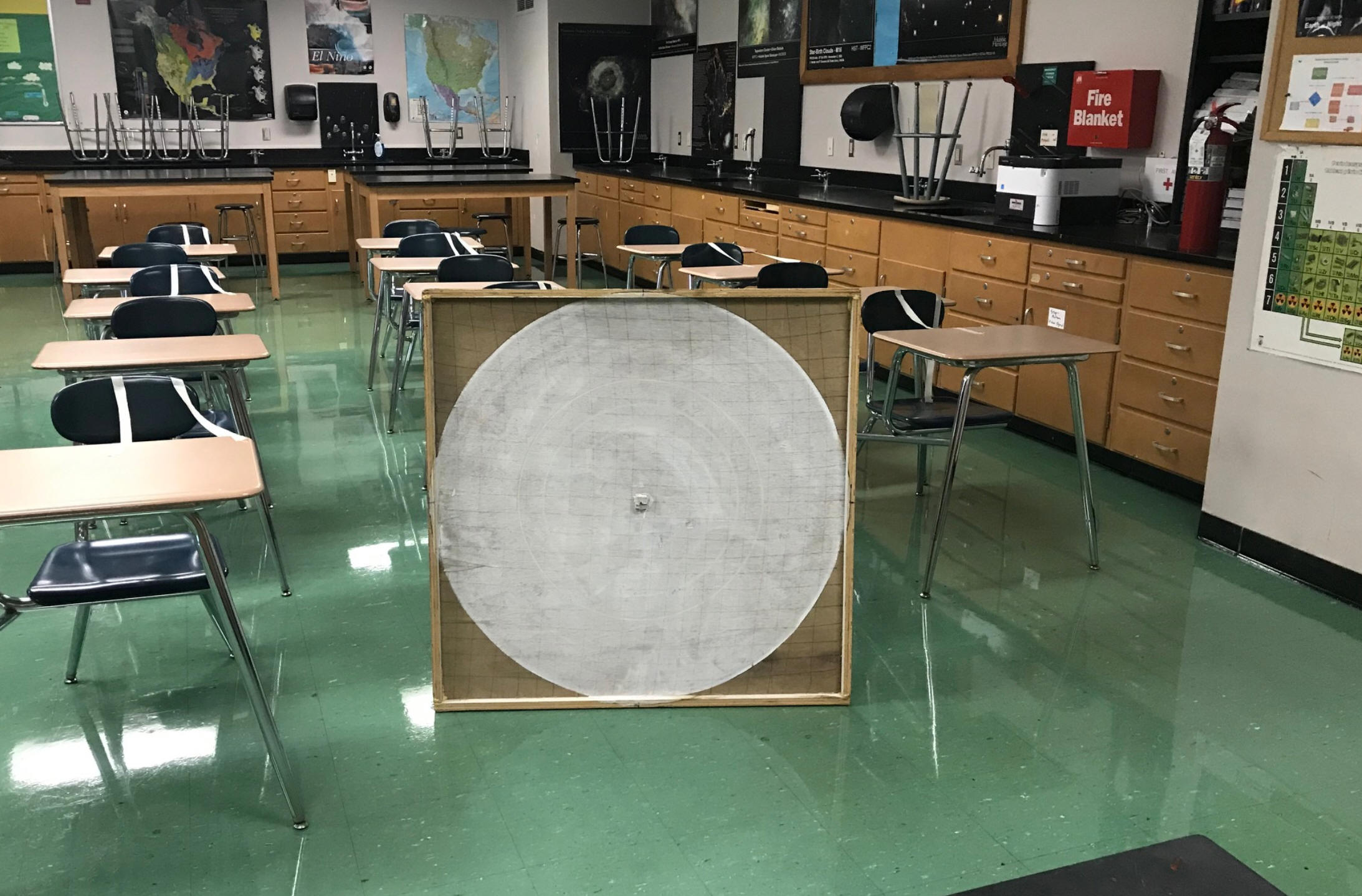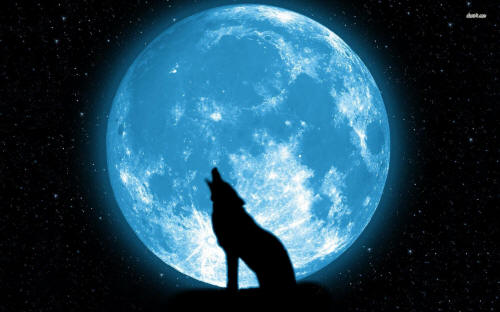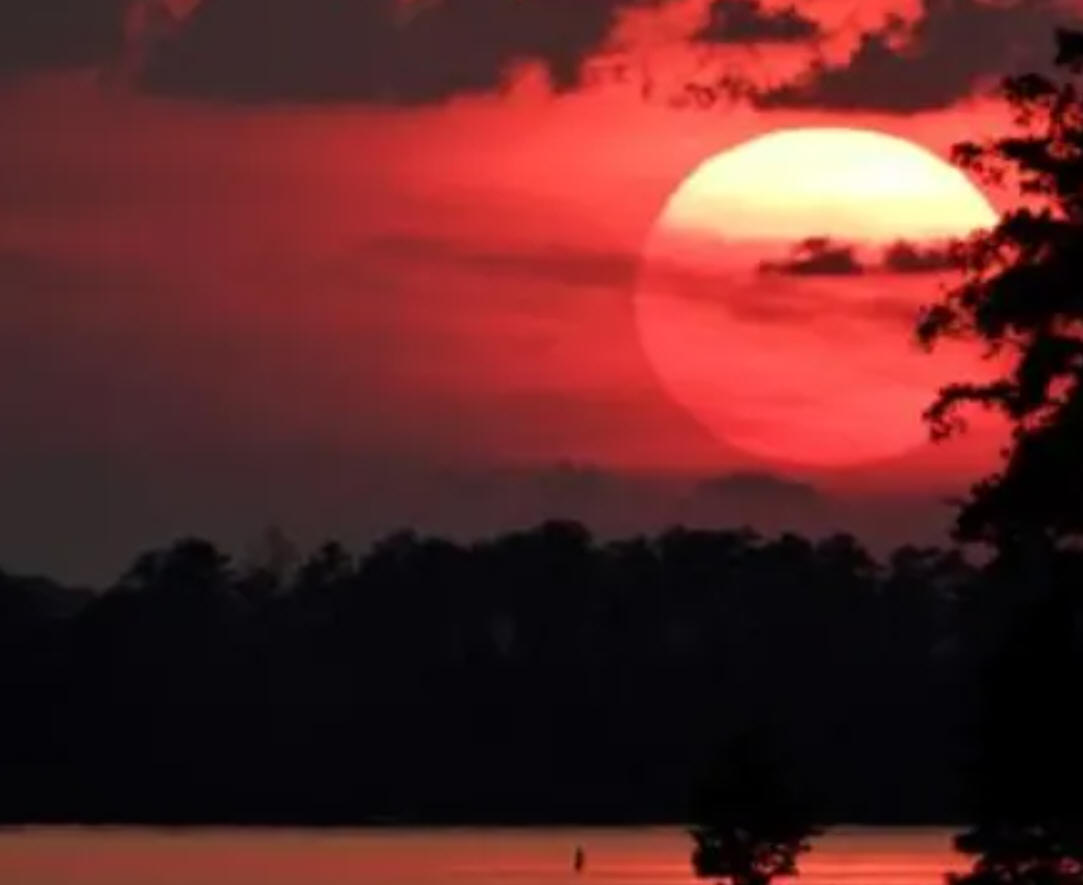The rest of Term 2...
- Class 76 Wednesday, 1/20 -- Greenhouse Effect and Global Warming
- Class 77 Thursday, 1/21 -- Make hot air balloons
- Class 78 Friday, 1/22 -- Fly hot air balloons
- Class 79 Monday, 1/25 -- Make hot air balloons
- Class 80 Tuesday, 1/26 -- Fly hot air balloons
- Wednesday, 1/27 -- No Class! I hope you have a great 2nd Semester!
Warm Up: A few review questions...
1. Where, in the United States, is there a famous transform plate boundary?
2. Which way does a comet's tail point?
3. What is the Sun's primary fuel?
4. What keeps planets from flying away from the Sun, and what keeps them from falling into the Sun?
5. What's the name of the Earth layer between the crust and the outer core?
6. What's the word for "turning from a gas to a liquid?"
7. When we see clouds, which of the following are we not seeing: solid water, liquid water, water vapor (gas).
8. Identify a science concept that has come up again and again this year.
Today:
- Google Meet:
- Do the Gold people have any questions?
- 6 people still have not turned in the climate map project in PowerSchool that grade is a zero, and it is bringing down your overall grade for this class. Finish it and turn it in!
- Blue Group:
- Check in regarding quizzes
- Check in regarding project
- Make hot air balloons
Warm Up: A few review questions...
1. What's a synonym (another word) to describe density?
2. What color has the longest wavelength?
3. What color are the most massive stars?
4. Give one reason why the Earth is hot on the inside.
5. At divergent plate boundaries, are there rising mantle currents or sinking mantle currents?
6. What type of lava can be found in a volcano at an ocean/continent convergent plate boundary -- mafic, felsic, or both?
7. What's the difference between a meteor and a meteorite?
8. If the volume of an object increases, what needs to happen to that object's mass in order for its density to also increase?
Today:
- Google Meet:
- Do the Gold people have any questions?
- 8 people still have not turned in the climate map project in PowerSchool that grade is a zero, and it is bringing down your overall grade for this class. Finish it and turn it in!
- Blue Group:
- Check in regarding quizzes
- Check in regarding project
- Make hot air balloons
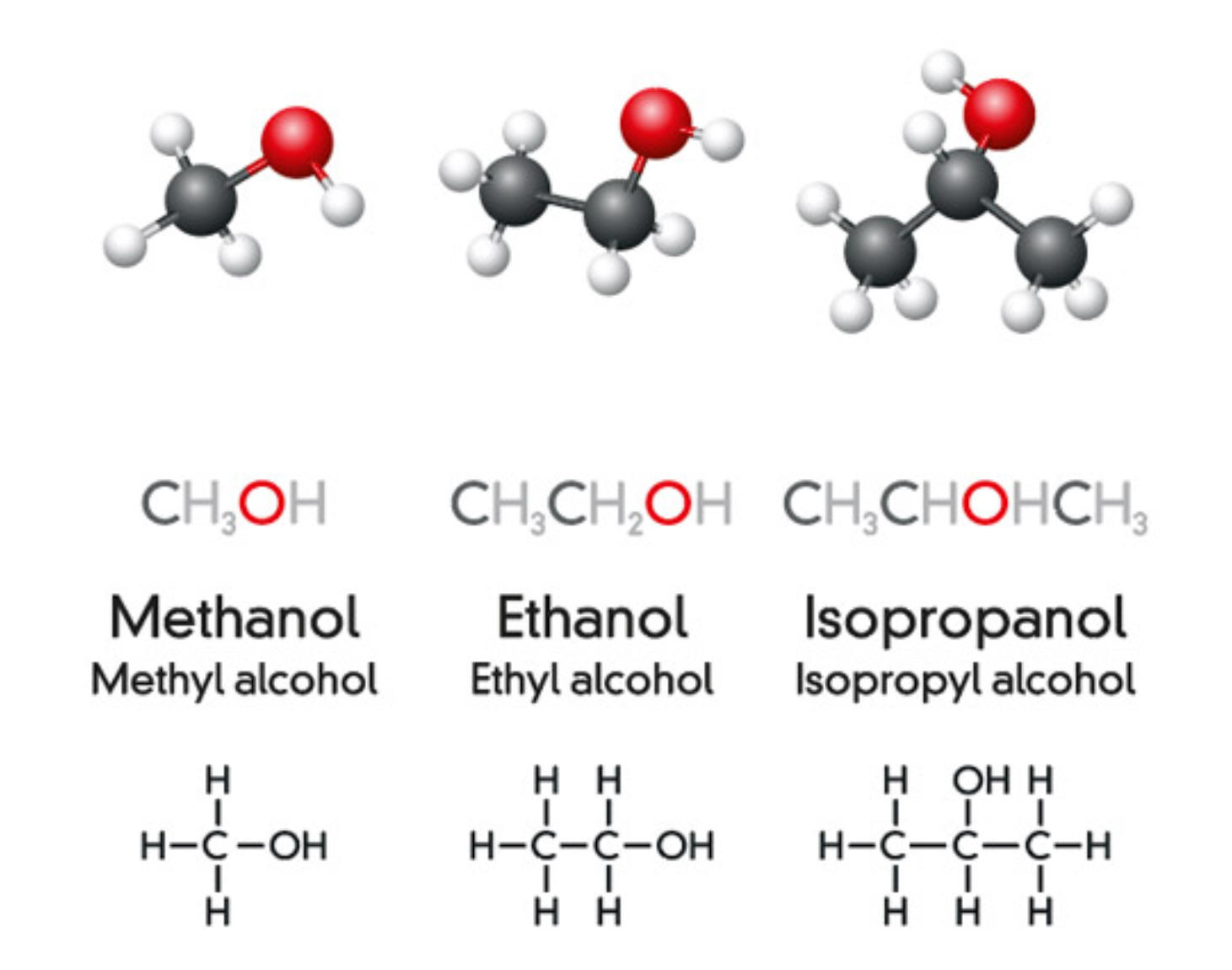 Class
78:
Friday,
1/22/2021
Class
78:
Friday,
1/22/2021Warm Up:
There seem to be three common types of alcohol that I encounter: ethanol, methanol, and isopropyl alcohol. Do you know the difference?
Article
Today:
- Google Meet:
- Google Classroom was acting up last night, so I couldn't finish the grading.
- Meets on Monday and Tuesday are optional.
- If you want extra help with the project, I can sign you up for AST today. If no one elects to come, I may just choose some of the people who haven't turned in the climate map project. So turn it in if it's done!
-
Let's rehearse what you have to tell me as your balloon
levitates. When the balloon heats up, what happens to
its...
- Volume? Why?
- Mass? Why?
- Density? Why?
- Gold Group:
- Today
- Optional Quiz Retake (climate mapping)
- Make hot air balloons and test with hot air
- Tomorrow -- fly hot air balloons with fire -- 5 points added to your Climate Mapping Project grade if you make a working hot air balloon and tell me (correctly) how it works when you fly it. "How it works" will be based on the answers to 1-3 of the warm-up above.
- Today
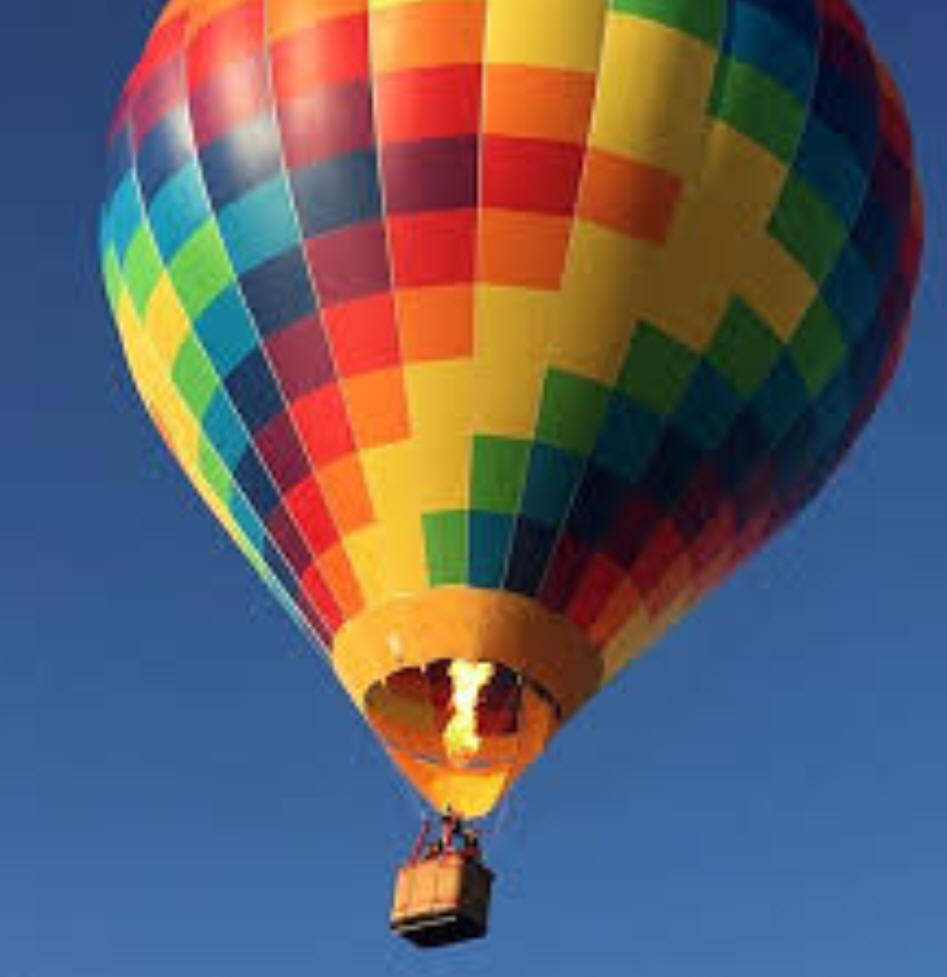 Class
77:
Thursday,
1/21/2021
Class
77:
Thursday,
1/21/2021Warm Up:
How does a hot air balloon work? As it heats up, what happens to each of the following characteristics of the balloon? Why?
1. Volume?
2. Mass?
3. Density?
4. Weight?
Today:
- Google Meet:
- Things to do or make up...
- Climate project
- Climate Change Google Quiz
- Course Request form
- Other???
- Things to do or make up...
- Gold Group:
- Today
- Optional Quiz Retake (climate mapping)
- Make hot air balloons and test with hot air
- Tomorrow -- fly hot air balloons with fire -- 5 points added to your Climate Mapping Project grade if you make a working hot air balloon and tell me (correctly) how it works when you fly it. "How it works" will be based on the answers to 1-3 of the warm-up above.
- Today
Warm Up:
A positive feedback loop occurs when an effect increases the cause that created the effect. A positive feedback loop causes change and instability.
Negative feedback occurs when an effect decreases the cause that created the effect. Negative feedback results in stability.
1. Which of these is an example of positive feedback, and which is negative?
A) A room gets hotter. The thermostat senses this and turns off the heater, causing the room to get cooler.
B) The Earth gets hotter. This melts snow. As the snow disappears, the darker ground below is better able to absorb sunlight, causing the Earth to get hotter.
2. Can you think of another example of positive or negative feedback
Air conditioning/refrigerants, methane, permafrost, and swamps
Today:Today:Today:
- Google Meet:
- The Greenhouse Effect and Global Warming
- How does the Greenhouse Effect work?
- What are the predictions? How do we know the predictions are valid?
- How do we know humans are causing global warming?
- What can we do about it?
- Rocket thrust spreadsheet
- The Greenhouse Effect and Global Warming
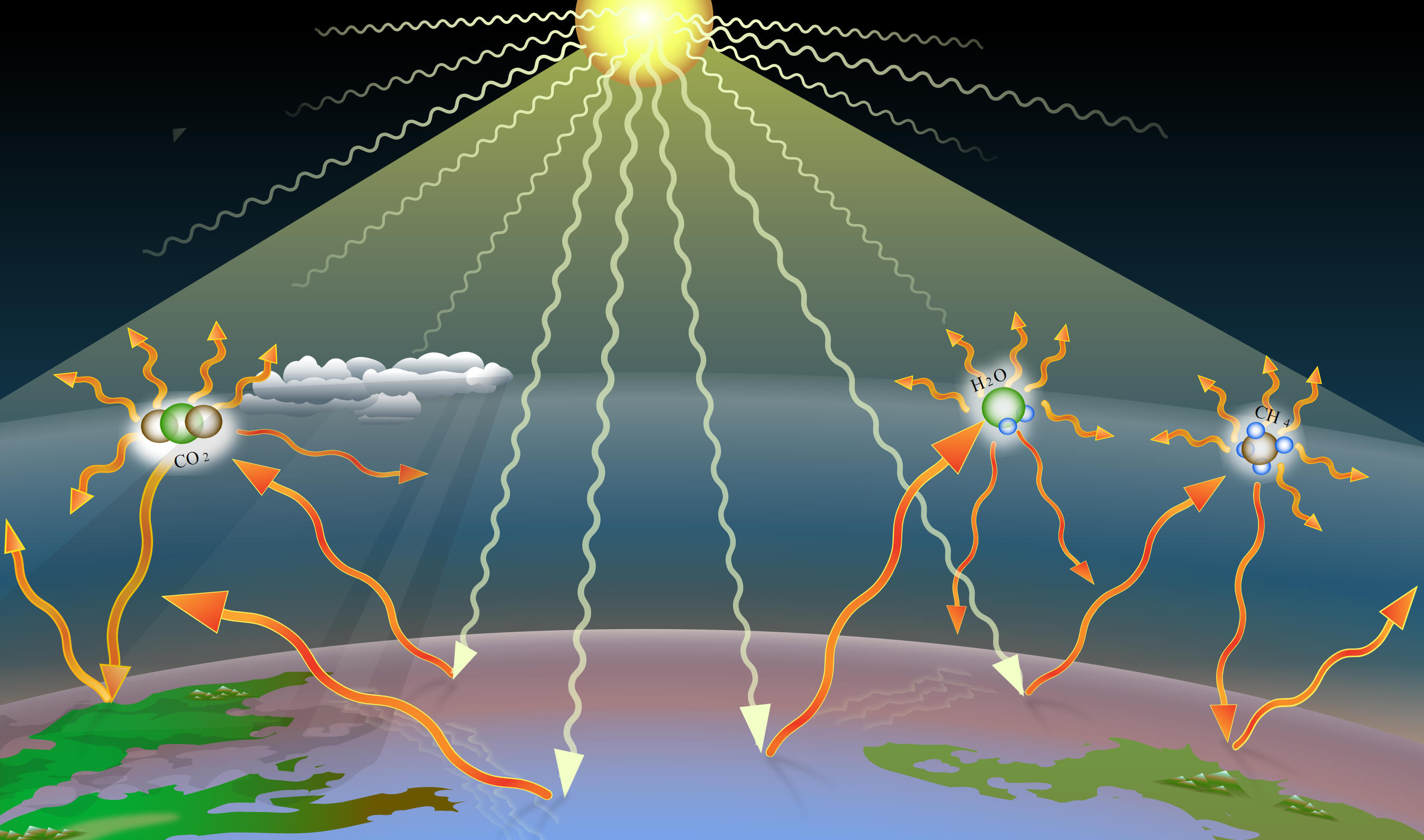
 Class
75:
Tuesday,
1/19/2021
Class
75:
Tuesday,
1/19/2021Warm Up:
What is the greenhouse effect? How does it work?
Today:Today:Today:
- Google Meet:
- Science courses for next year -- Course requests and Course recommendations
- The Greenhouse Effect and Global Warming
- Today -- How does the Greenhouse Effect work?
-
Tomorrow --
- What are the predictions of climate models? How do we know the predictions are valid?
- How do we know humans are causing global warming?
- What can we do about it?
- Climate Mapping Projects are due today. But if it is not finished, don't turn it in -- yet! Do turn it in before the end of the semester!! Make sure that you have submitted your project in Google Classroom.
- Blue:
- Climate Mapping Quiz
- Rising air/Sinking Air Quiz
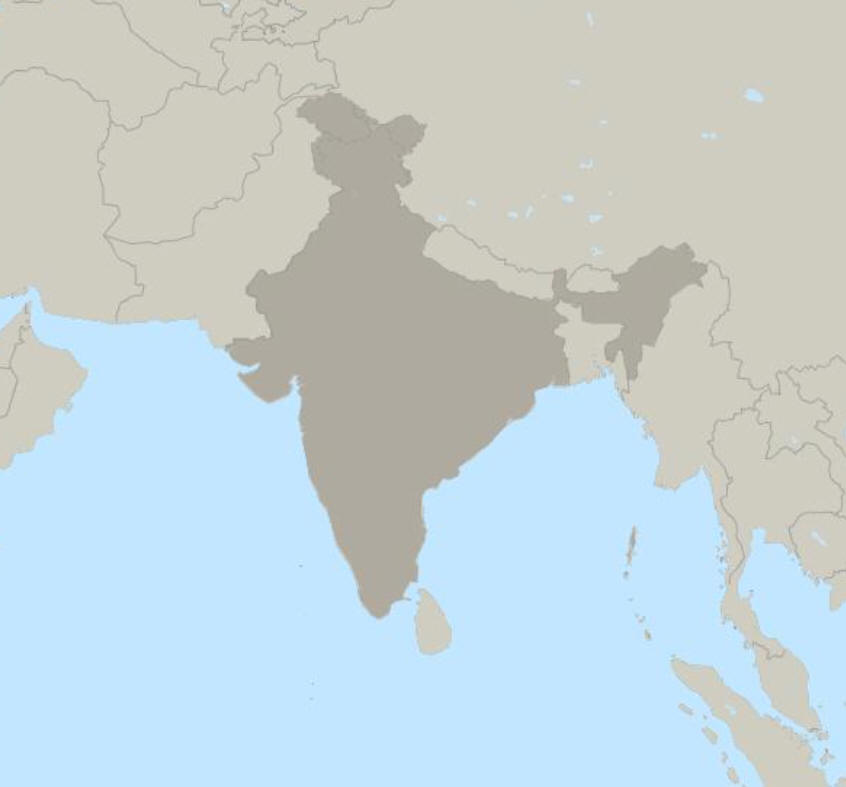 Class
74:
Friday,
1/15/2021
Class
74:
Friday,
1/15/2021Warm Up:
A monsoon is a "seasonally reversing wind" that can cause changes in precipitation and weather in general.
1. The point of yesterday's warm-up is that oceans (water) has a higher specific heat than continents. What does that mean?
2. During which seasons will India's monsoons cause wet weather? When will they cause dry weather? Why?
Today:Today:Today:
- Google Meet:
- Check-in, regarding the project -- attach your slideshow so that I can see it, but you don't have to turn it in yet.
- What to do if you don't have the paper map template, and you don't have a printer...
- Project Work Time
- Climate Mapping Projects are due next Tuesday (1/19/21). Submit your project in Google Classroom.
- Gold:
- Climate mapping quiz
- Opportunity to retake the rising air/sinking air quiz
 Class
73:
Thursday,
1/14/2021
Class
73:
Thursday,
1/14/2021Warm Up:
Suppose we shine equally powerful lights on a tray of soil and a tray of water. If there are equal amounts of soil and water...
1. Which one do you think will heat up fastest?
2. After we turn off the lights, which one will cool down fastest?
Today:Today:
- Google Meet:
- Check-in, regarding the project.
- Project Work Time
- Gold:
- Climate Mapping Quiz tomorrow.
- Rising Air/Sinking Air Quiz
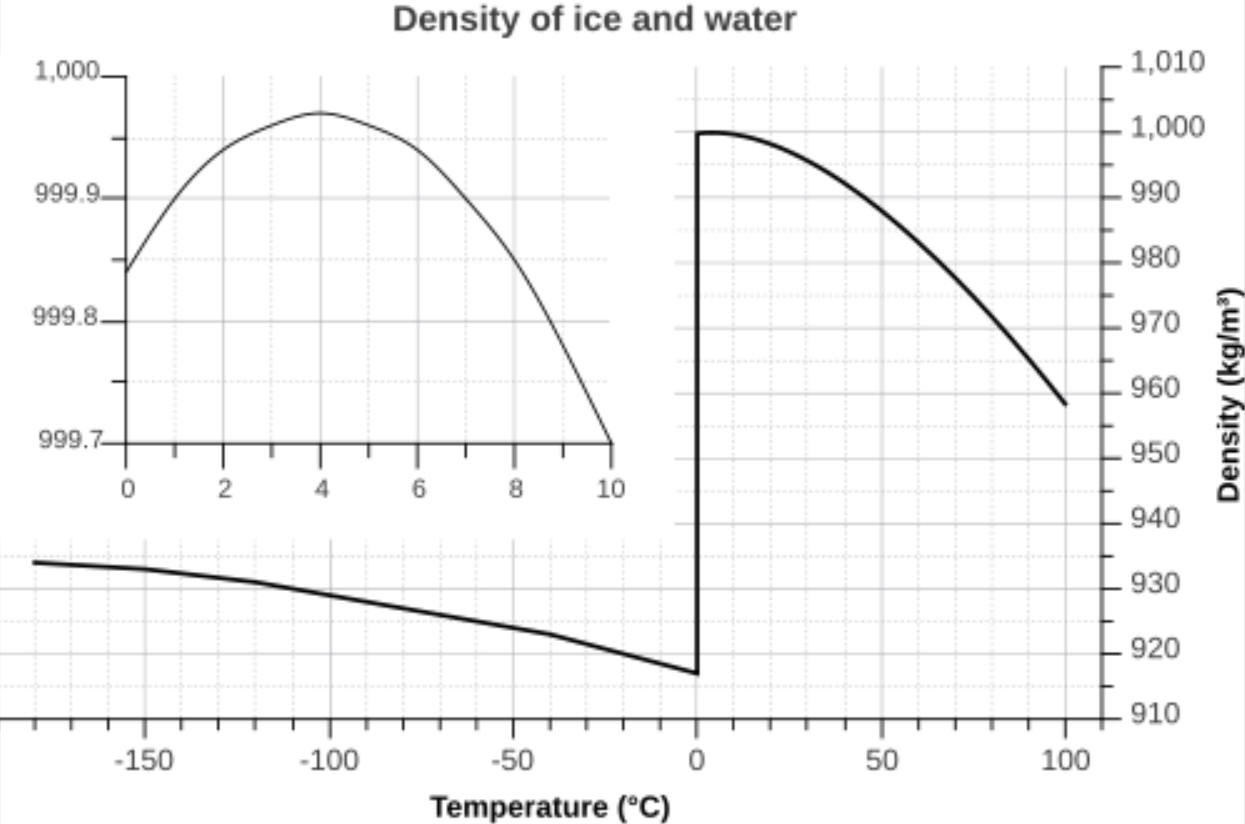
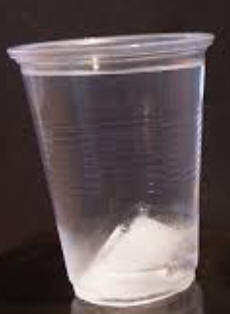 Class
72: Wednesday,
1/13/2021
Class
72: Wednesday,
1/13/2021Warm Up:
1. Why does my ice cube sink?
The graphs on the right show how water's density varies with temperature. How is water's varying density important...
2. For roads in Vermont?
3. In the rock cycle?
4. For fish?
5. With regard to global warming?
Today:
- Google Meet:
- Check-in, regarding the project.
- Project Work Time
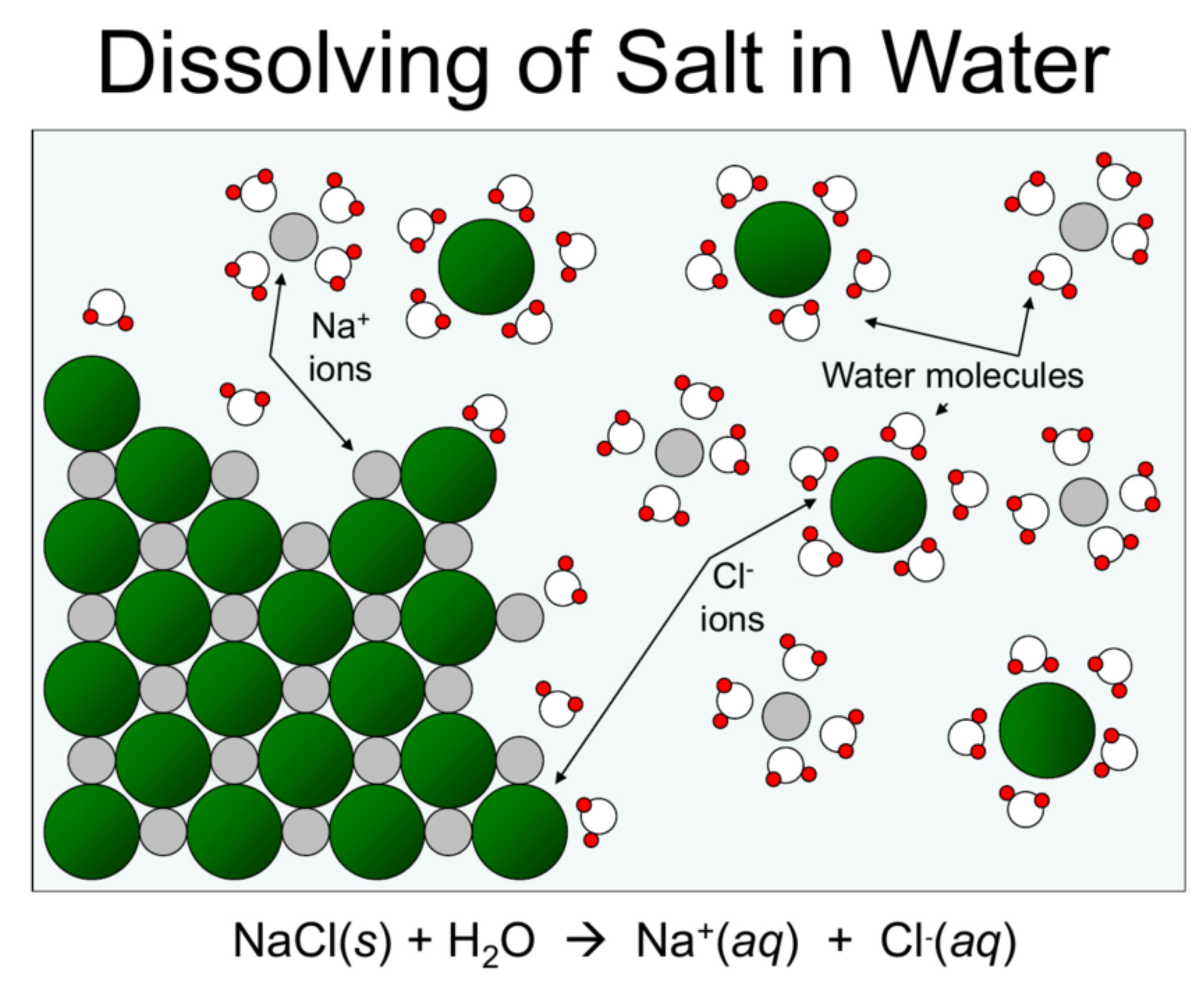 Class
71:
Tuesday,
1/12/2021
Class
71:
Tuesday,
1/12/2021Warm Up: The diagram on the right shows how water dissolves table salt. Table salt is made of sodium atoms (Na) and chlorine atoms (Cl). It's formula is NaCl. In the diagram, sodium atoms are grey, and chlorine atoms are green.
1. What are the red dots in the diagram?
2. What are the white circles?
3. What part of a water molecule grabs sodium atoms? Why?
4. What part of a water molecule grabs chlorine atoms? Why?
Today:
- Google Meet:
- Begin the Climate Map Project pdf version
- Project work time
- Gold Group: Prepare for your quiz tomorrow over rising air/sinking air. Here is the quiz with the answers.
 Class
70:
Monday,
1/11/2021
Class
70:
Monday,
1/11/2021Warm Up:
1. What will happen if I sprinkle pepper on the surface of some water and then touch the water with a soapy finger?
2. Why does this happen?
3. What if I covered a paper clip in soap and tried to make it float?
Today:Today:
- Google Meet:
- Review the homework -- climate mapping quiz
- Complete the Rising Air - Sinking Air Practice Quiz
- Gold Group
- Climate mapping quiz on Friday
- Blue Group
- Climate mapping quiz next Tuesday
 Class
69:
Friday,
1/8/2021
Class
69:
Friday,
1/8/2021Warm Up:
1. Which is more dense -- a steel paper clip or liquid water?
2. How can I make a paper clip float on water?
3. In order for this to work, does the paper clip need to be hydrophobic or hydrophilic?
4. Can I alter the paper clip to help it float?
Today:Today:
- Google Meet:
- Review the homework.
- Practice Maps -- Africa, North America
- Practice for all:
- Practice Quiz 2
- Blue:
- Climate Mapping Quiz on Monday.
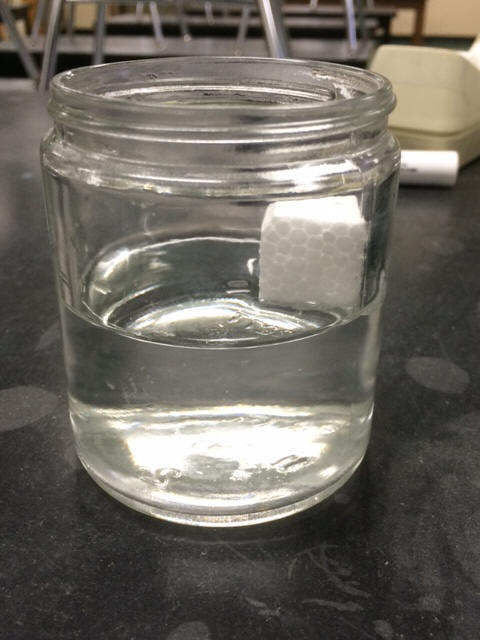 Class
68:
Thursday,
1/7/2021
Class
68:
Thursday,
1/7/2021Warm Up:
1. I have a glass of water with a piece of foam floating in it. The foam "wants" to move to the edge of the glass. Why? How can I make it stay in the middle?
2. Hydrophilic describes something that "likes" water. Hydrophobic things "dislike" water. Name something that is hydrophobic and something that is hydrophilic.
Today:Today:
- Google Meet:
- Check out some homework slides (coastal wet climates). Troubleshoot problems.
- Practice Maps -- Australia, South America
- Gold:
- Quiz retake (atmosphere circulcation, pressure belts, and winds) today or tomorrow?
- Practice for everyone:
- Practice Quiz 1 from this handout... practice maps. pdf version
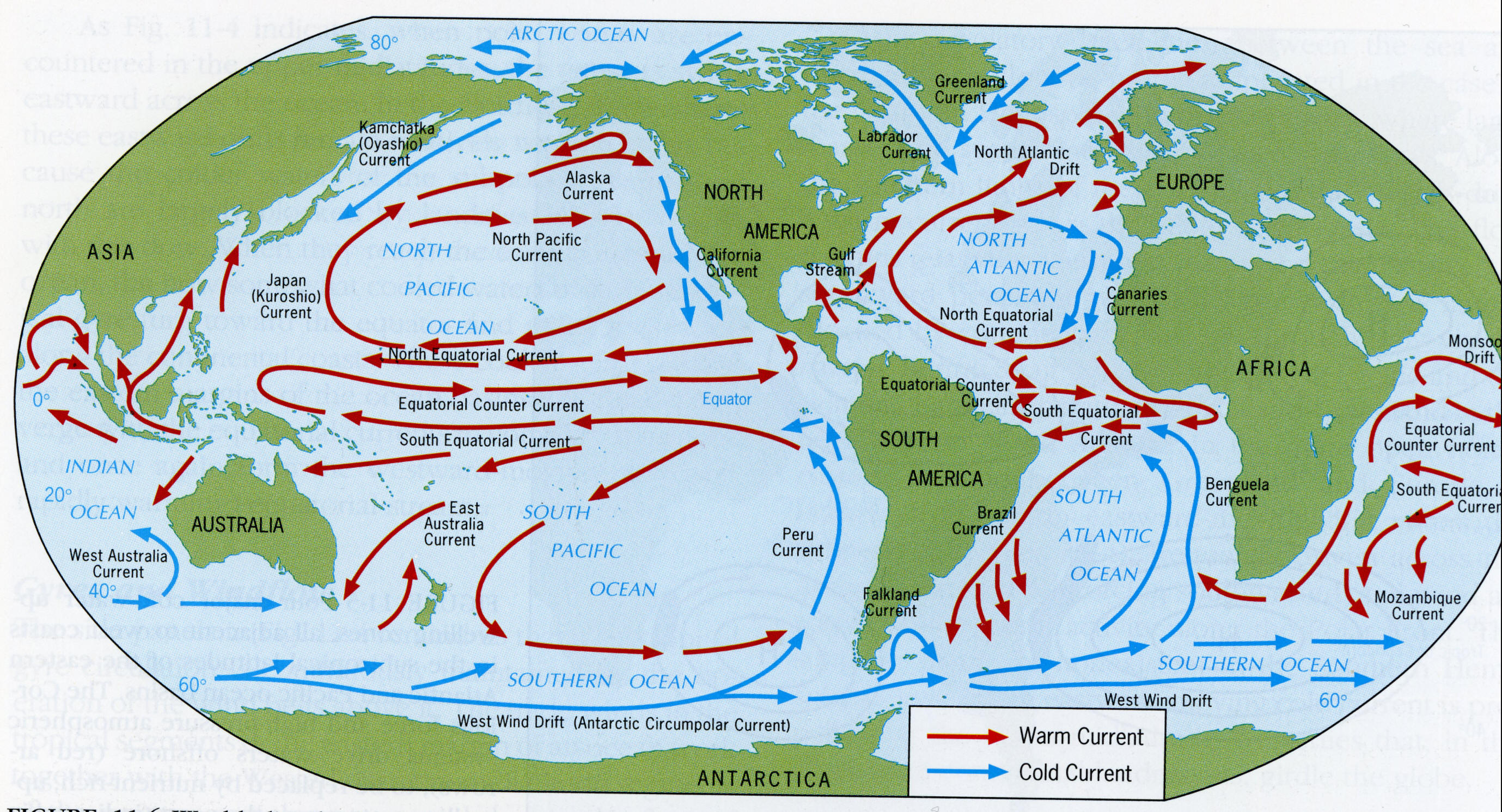 Class
67:
Wednesday,
1/6/2021
Class
67:
Wednesday,
1/6/2021Warm Up:
What are gyres? What causes them? How can the concept of gyres help you draw ocean currents?
Today:Today:
- Google Meet:
- How to create a slide in the project slideshow. Mr. Stapleton will demonstrate, using a Chromebook.
- Practice:
- Make a copy of Slideshow Template. Rename it with your name. Use Screencastify to create a screencast explaining what causes Coastal Wet climates, and insert the video into slide 2 of your slideshow. Turn the slideshow in to Mr. Stapleton in Google Classroom.
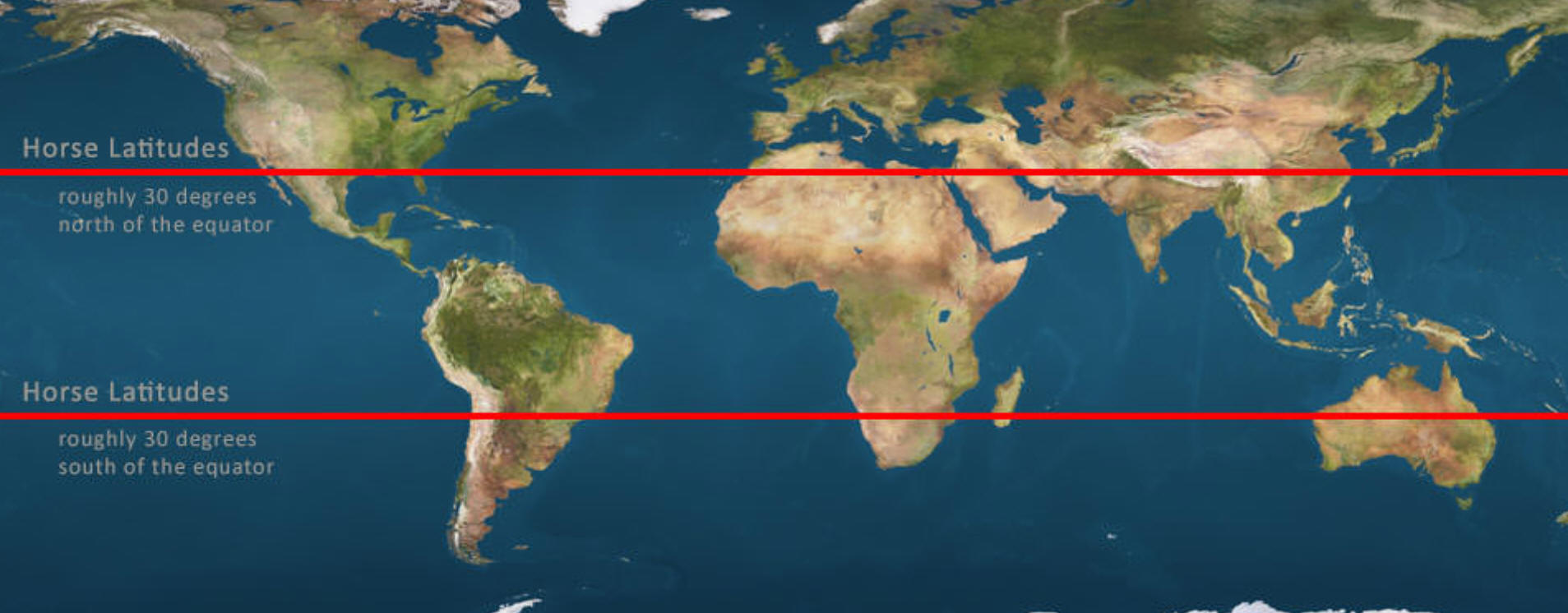 Class
66:
Tuesday,
1/5/2021
Class
66:
Tuesday,
1/5/2021Warm Up:
1. What are the Horse Latitudes? How did they get their name?
2. What is(are) The Doldrums? Where did the name come from? What's another name for The Doldrums?
Today:
- Google Meet:
- What's the goal here? Look at some satellite maps.
- Finish the climate map -- add new stuff: 1) rain shadow, 2) coastal wet, 3) humid climates
- Here is a scan of my completed map and notes.
- Hand out practice maps. pdf version
- No homework
 Class
65:
Monday,
1/4/2021
Class
65:
Monday,
1/4/2021Warm Up:
1. What types of air pressure are associated with dry and wet climates?
2. What type of air motion are associated with dry wet climates?
Today:
- Google Meet:
- Review the Google Quiz over winds and pressure
- Climate Mapping Project preview -- Slideshow Template Stapleton Example
- Climate Mapping Practice -- do an example that spans both hemispheres, and do an example in one hemisphere.
- Map Template My notes from class
- Draw the starting point for today's homework.
- Practice:
- Do an example that lies in the hemisphere that we did not do in class.
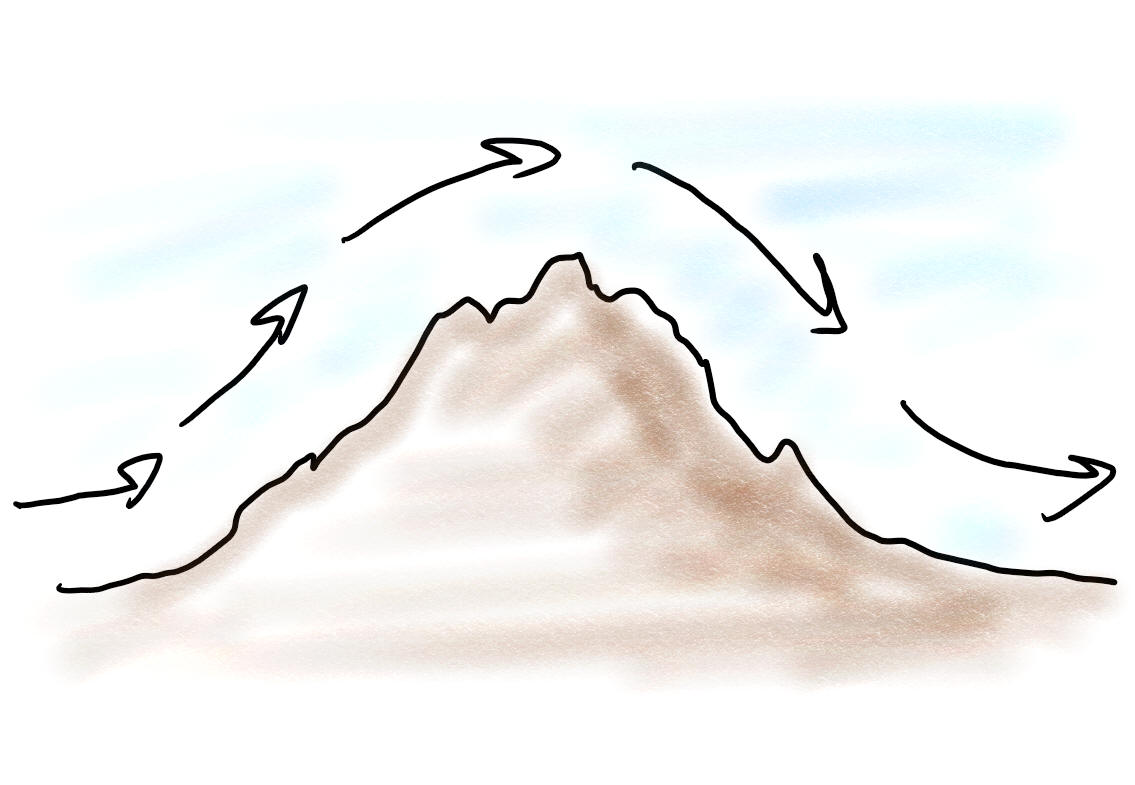 Class
64:
Tuesday,
12/22/2020
Class
64:
Tuesday,
12/22/2020Warm Up:
1. When we make a cloud in a bottle, does the cloud appear when we squeeze or when we release? Why?
2. When winds pass over mountain ranges, which side of the mountains is wetter, and which is drier?
3. When winds pass over an ocean, which coast is wetter, and which is drier?
Today:
- Google Meet:
- Warm-up, then assign the Google Quiz.
- Blue: 2 quizzes
- Winds and Pressure -- on paper
- Atmospheric Circulation, pressure belts, and Prevailing Winds
- Gold:
- Google quiz: Atmospheric Circulation, pressure belts, and Prevailing Winds
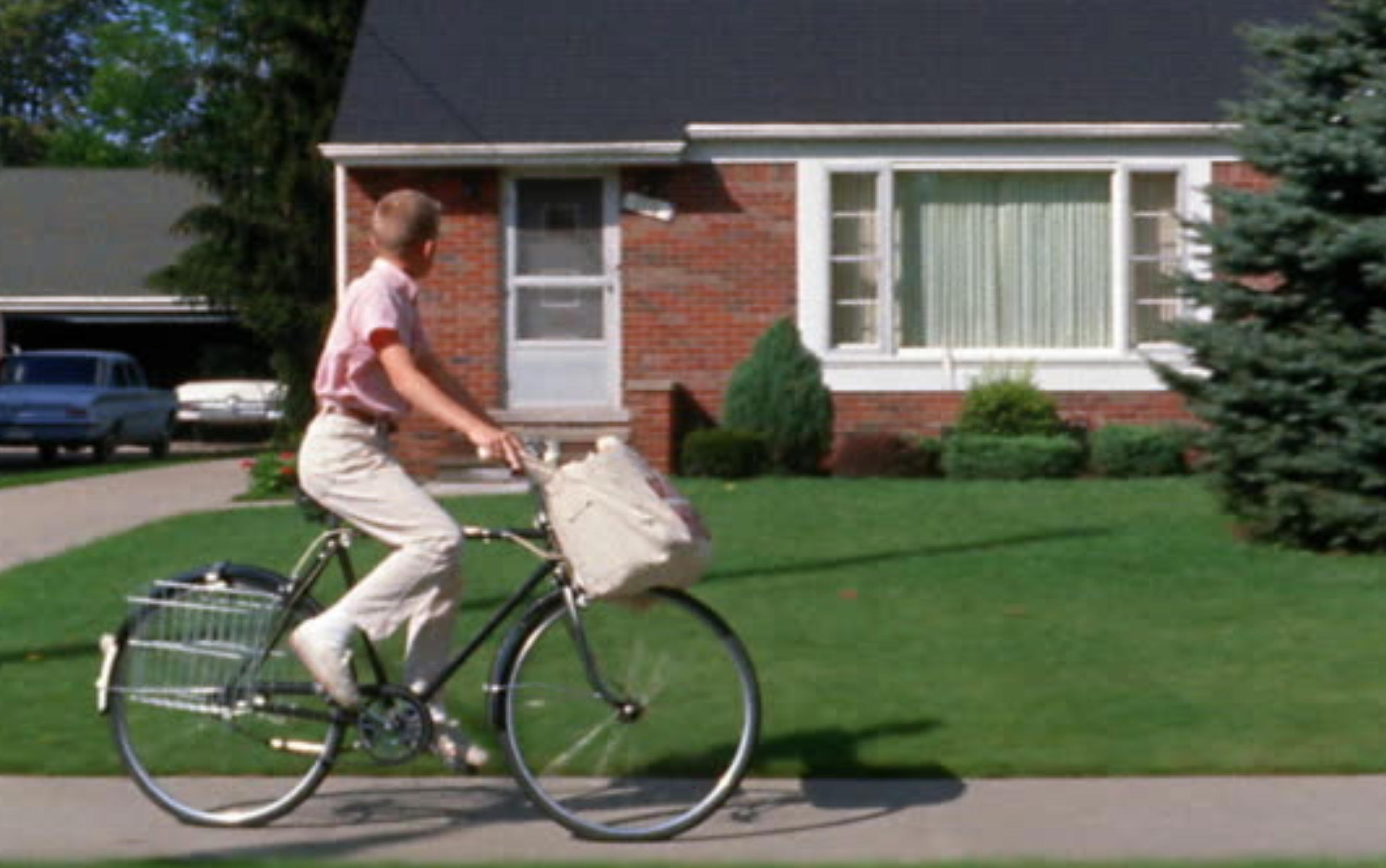 Class
63:
Monday,
12/21/2020
Class
63:
Monday,
12/21/2020Warm Up:
1. This photograph from the 1960s shows a "paper boy" delivering newspapers from his moving bicycle. Where should the paper boy aim his paper if he wants to throw it on the doorstep of the house? Explain why.
2. Where does our weather usually come from, in Vermont?
Today:
- Google Meet:
- After break, we are going to apply all of this
- Notes: Prevailing Winds and the Coriolis Effect pdf version
- Video Clips:
- Blue:
- Quiz today over Winds and Pressure.
- Practice Google quiz tonight over pressure belts and prevailing winds.
- Real Google quiz tomorrow over pressure belts and prevailing winds.
- Gold:
- Practice Google quiz tonight over pressure belts and prevailing winds.
- Real Google quiz tomorrow over pressure belts and prevailing winds.
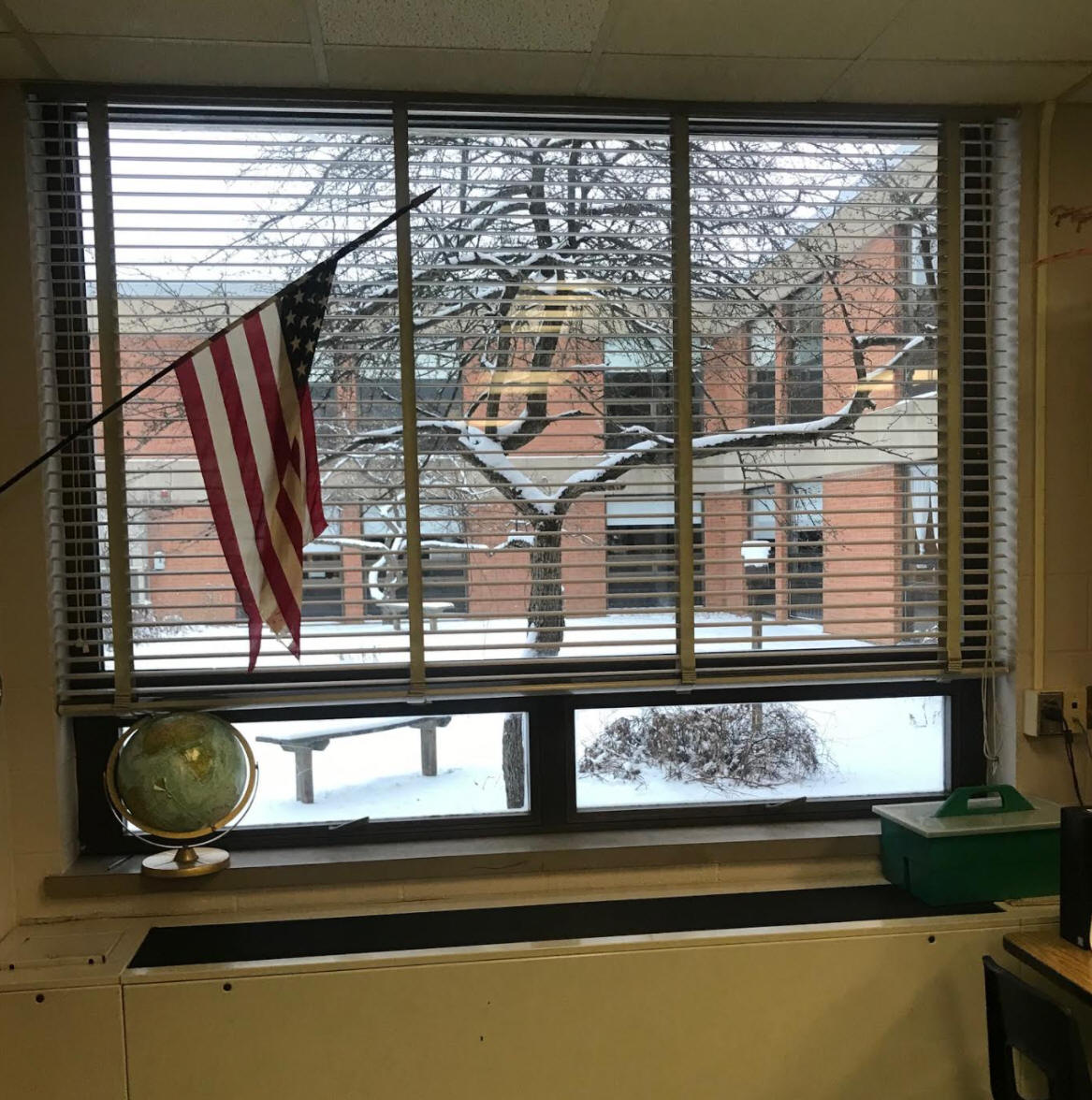 Class
62:
Thursday,
12/17/2020
Class
62:
Thursday,
12/17/2020Warm Up:
1. Is it winter yet?
2. What is the definition of "desert?"
3. Where are some of the world's biggest deserts?
Today:
- Google Meet:
- Bill Nye Water Cycle
- Notes: Water Cycle and Cloud Formation pdf version filled-in version (plus winds and pressure)
- Why are there clouds at the equator, in this picture?
- Blue: Quiz on Monday over the practice Winds and Pressure practice quiz
- Gold: Quiz -- Winds and Pressure
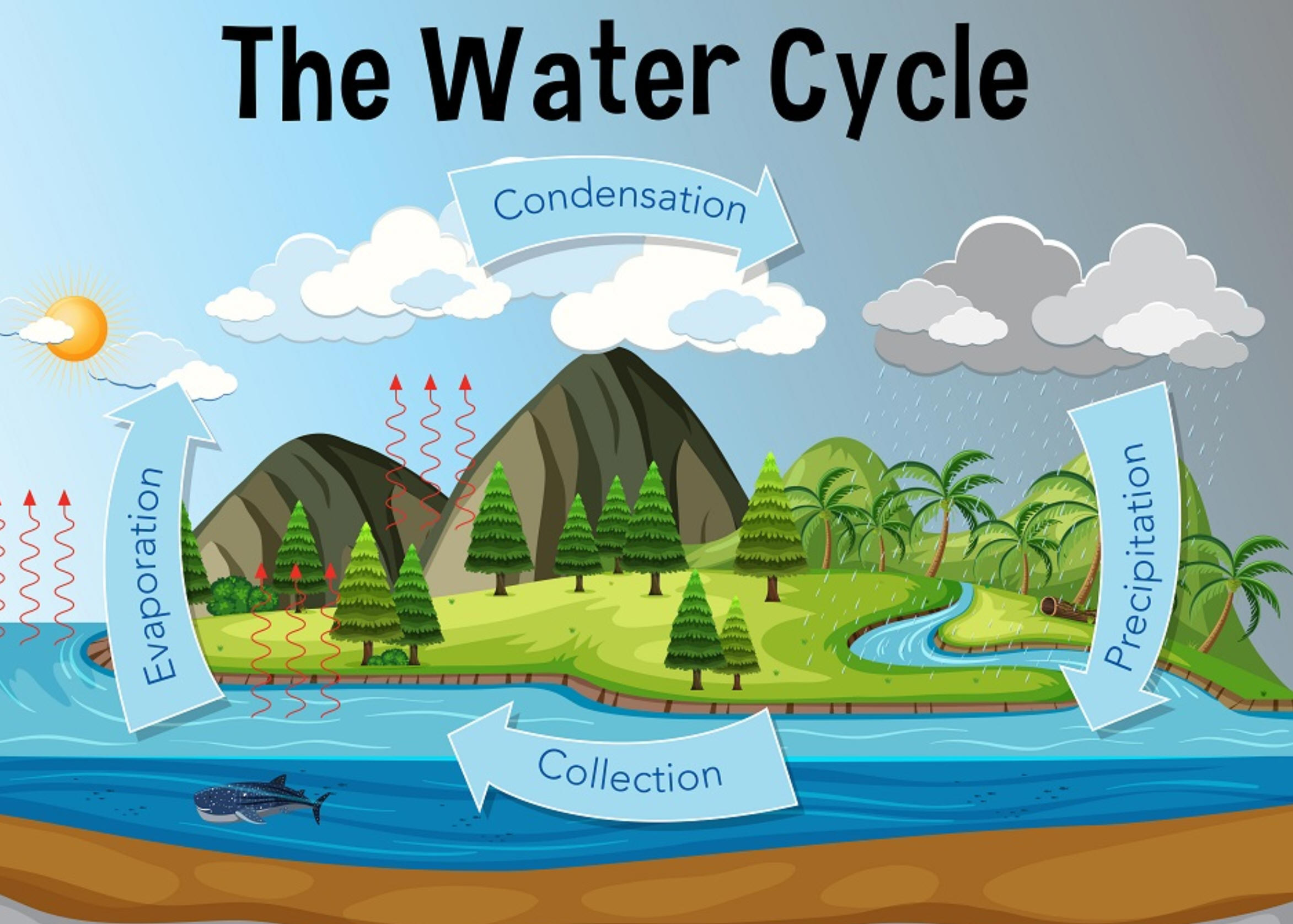 Class
61:
Thursday,
12/17/2020
Class
61:
Thursday,
12/17/2020Warm Up: In the diagram on the right...
1. When is water a liquid?
2. When is it a gas?
3. What causes each of the events in the water cycle?
4. Briefly revisit the class #15 warm-up?
5. Take a quick look at this week's air pressure and temperature? In general, will the air pressure be higher when the air is colder, or when it's warmer?
Today:
- Google Meet:
- Blue: review today's notes
- Gold: Quiz retake -- Relative dating and the rock cycle
 Class
60:
Wednesday,
12/16/2020
Class
60:
Wednesday,
12/16/2020Warm Up: A better answer to the question about circulation in the upper atmosphere:
1. What would happen to the atmosphere if it were heated at area B and cooled at area A?
2. How would this result in pressure differences and winds?
3. On the surface of the Earth, winds blow from high pressure to low pressure. If the atmosphere were heated at B and cooled at A, there is one place where air would move from lower pressure to higher pressure. Where would that happen, and how does it happen?
Today:
- Google Meet:
- Individual quizzing over the notes, plus a practice quiz pdf version
 Class
59:
Tuesday,
12/15/2020
Class
59:
Tuesday,
12/15/2020Warm Up: Why does the bird keep drinking?
Today:
- Google Meet:
- Atmospheric pressure, winds, and buoyancy
- Continue Notes (starting with #14) -- Winds, Atmospheric Pressure, and Buoyancy pdf version filled-in version (plus cloud formation)
- Blue:
- Return Quizzes
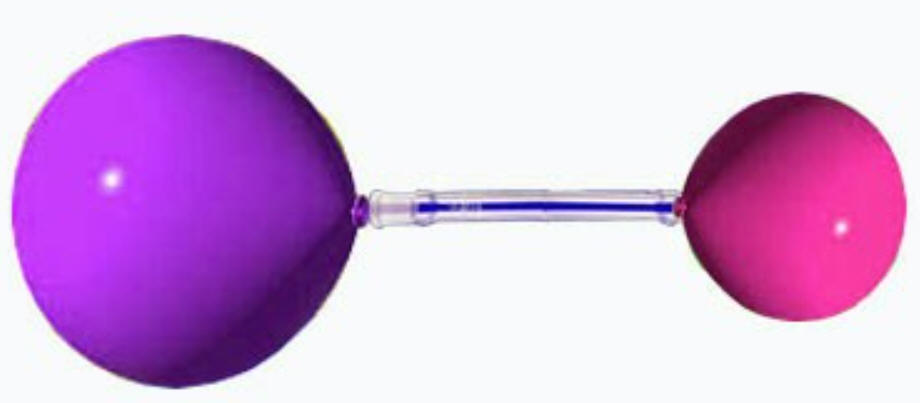 Class
58:
Monday,
12/14/2020
Class
58:
Monday,
12/14/2020Warm Up: If I half inflate one balloon and 1/4 inflate another, what will happen if I connect the two balloons with a straw and let air flow between them?
Today:
- Google Meet:
- Change of plans -- we're starting
meteorology (weather and climate) instead of properties of
water.
Here's what's next...
- Atmospheric Pressure and Winds
- Cloud formation/Wet & Dry climates
- Coriolis Effect
- Climate Mapping
- Notes -- Winds, Atmospheric Pressure, and Buoyancy pdf version filled-in version (plus cloud formation)
- Change of plans -- we're starting
meteorology (weather and climate) instead of properties of
water.
Here's what's next...
- Blue:
- Quiz over rock dating and the rock cycle
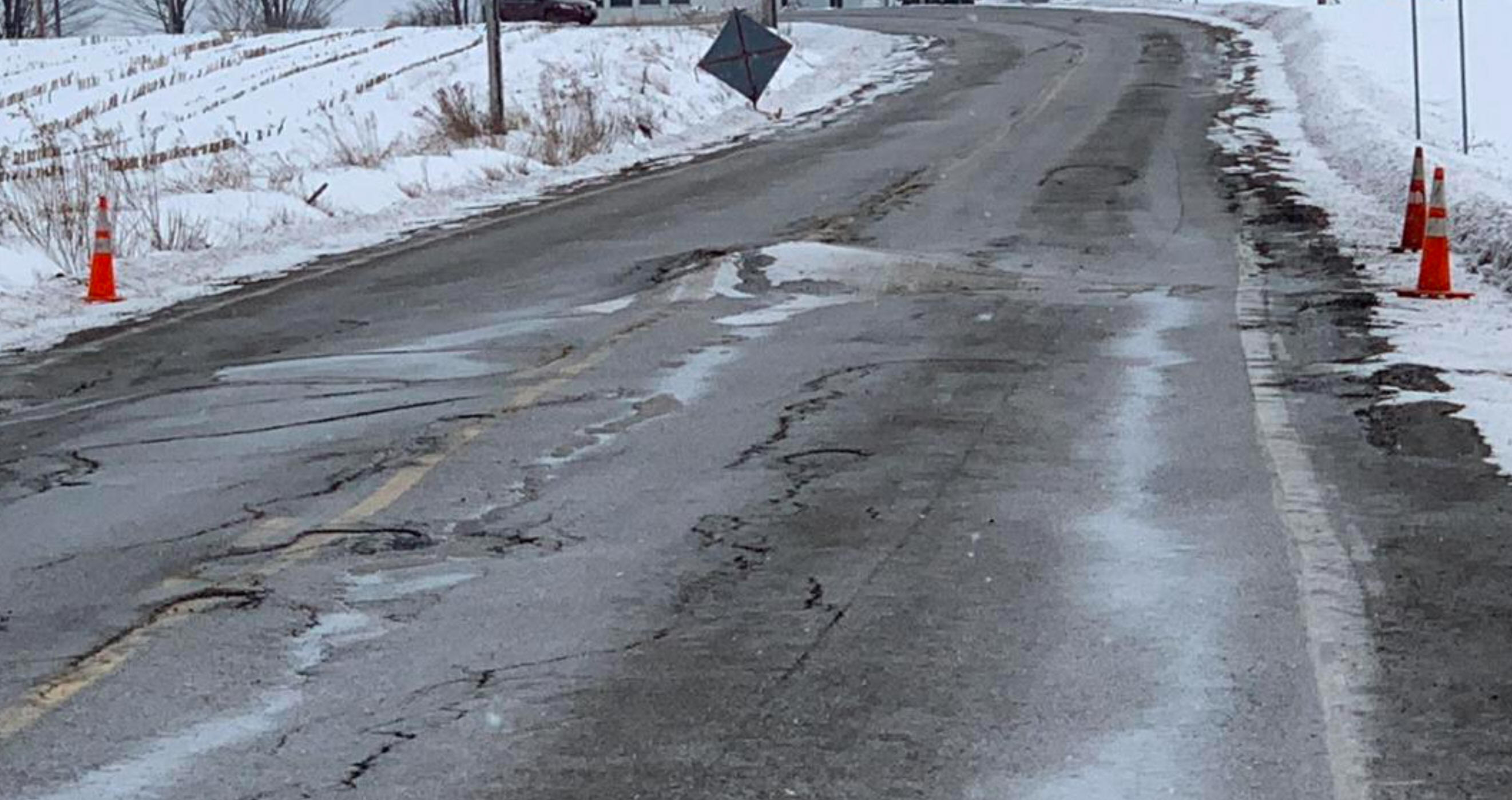 Class
57:
Friday,
12/10/2020
Class
57:
Friday,
12/10/2020Warm Up:
Why are so many Vermont roads in bad shape?
Today:
- Google Meet:
- New Topic: Properties of Water
- Design a 3-D printed (or laser cut) snowflake
- Gold Class: Quiz -- Rock Dating and the Rock Cycle
- Blue:
- Quiz on Monday over rock dating and the rock cycle
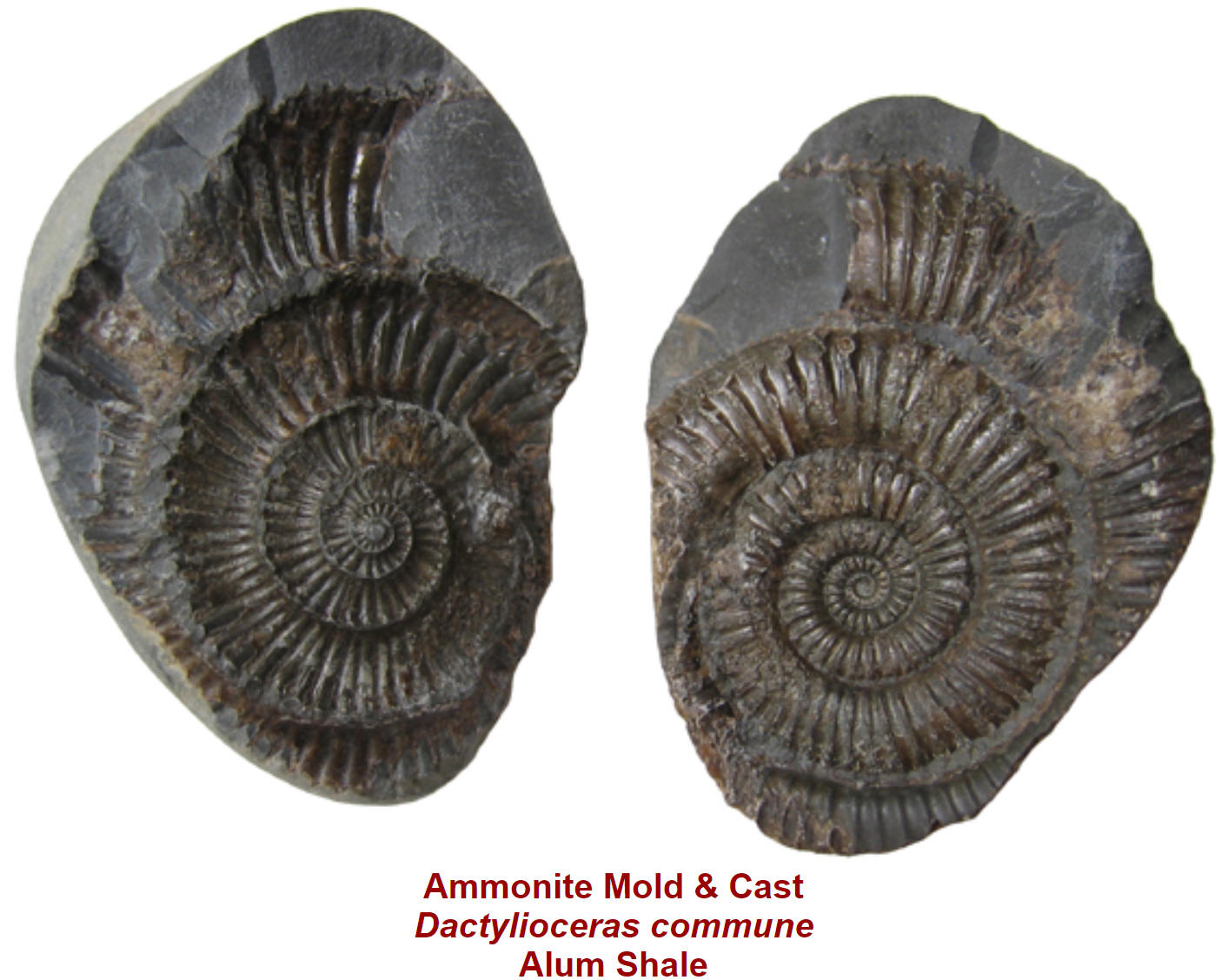
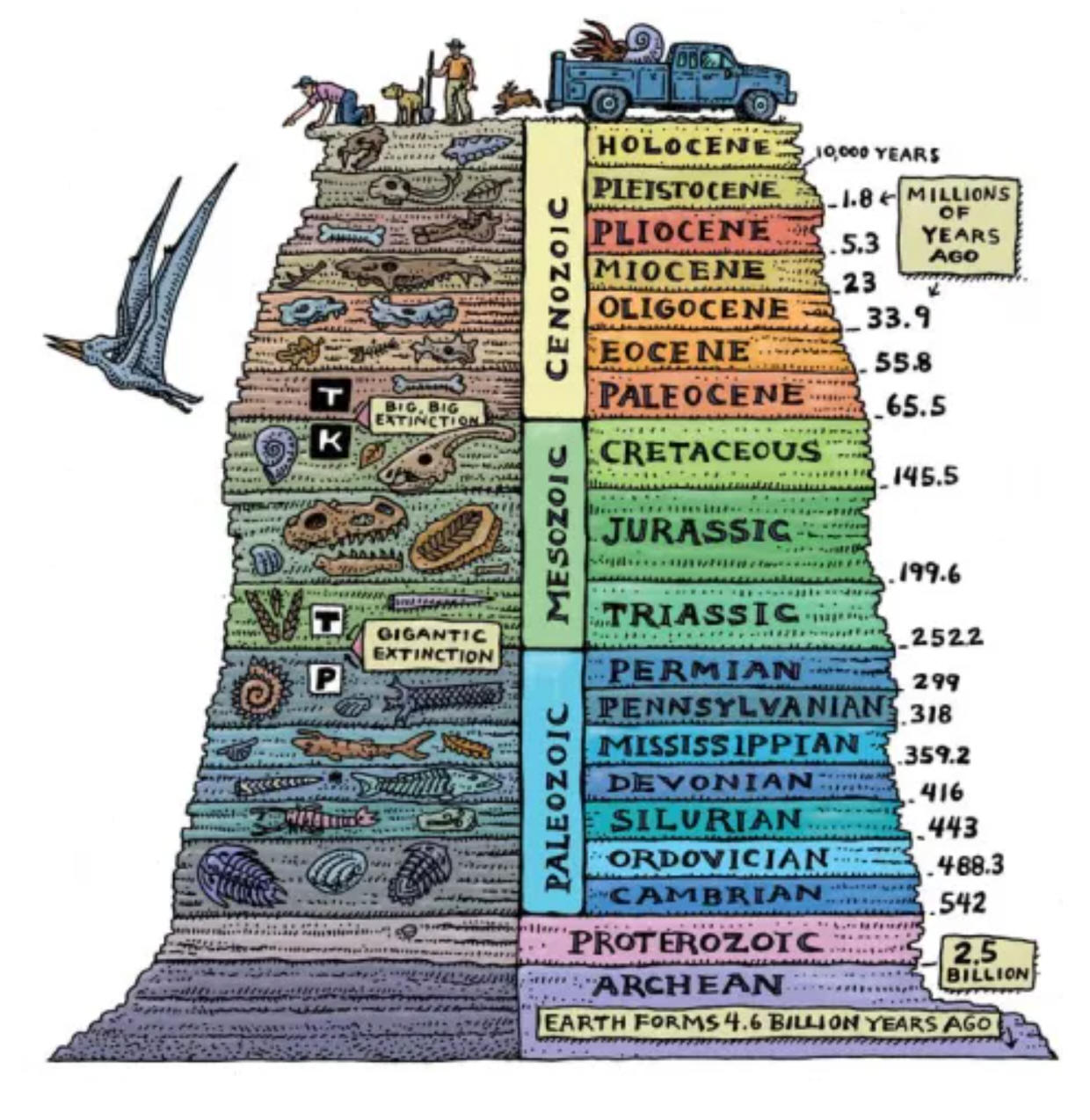 Class
56:
Thursday,
12/10/2020
Class
56:
Thursday,
12/10/2020Warm Up:
1. What does the colorful diagram on the right represent?
2. What are molds and casts, and how do they relate to fossils?
3. What is petrified wood, and how does it form?
4. Why don't you want your camera on? [Note: I don't really care if you're not paying attention during a Meet. I just want to know if you're not paying attention, so that I don't waste everyone's time talking to you.]
Today:
- Google Meet:
- Review the homework
- One last practice.
- Gold Class: Plate Tectonics Test
- Everyone -- Blue and Gold:
- Practice -- Another Rock Dating Practice Quiz -- see assignment in Google Classroom.
- Study!
- Blue: Quiz on Monday over rock dating and the rock cycle
- Gold: Quiz tomorrow over rock dating and the rock cycle.
Warm Up:
The diagrams on the right show some rock layers in two different parts of the world.
1. What do the buried fish, snail, plant, bug, and human represent?
2. Which layer is probably older, Layer S (in diagram A) or layer H (in diagram B)?
3. Which layer is probably the oldest of all? Why?
4. Which layer is probably the youngest of all? Why?
Today:
- Google Meet:
- Review the homework
- Rock dating with faunal succession.
- Everyone -- Blue and Gold:
- Practice -- Rock Dating Practice Quiz -- see assignment in Google Classroom.
-
Study!
- Blue: Rock cycle quiz on Monday
-
Gold:
- Plate Tectonics Test tomorrow! (unless you already took it and like your score)
- Rock cycle quiz on Friday
Warm Up:
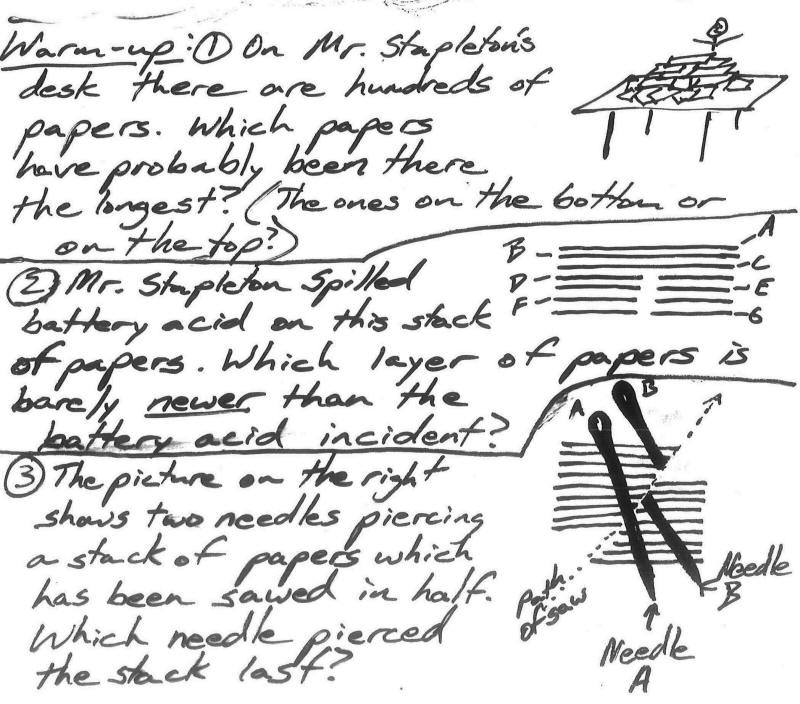
Today:
- Google Meet:
- Review the homework
- Introduction to Relative Dating -- How we put rocks in order, according to their ages.
- Rock Dating (Relative Dating) Notes, part 1 pdf handout
- Everyone -- Blue and Gold:
- Practice -- Relative Dating Google Quiz -- see Classroom.
- Study -- There will be
a short quiz over the rock cycle (igneous, metamorphic, and
sedimentary) -- similar to last night's homework.
- Blue -- rock cycle quiz on Monday
- Gold -- rock cycle quiz on Thursday
 Class
53:
Monday,
12/7/2020
Class
53:
Monday,
12/7/2020Warm Up:
The diagram on the right illustrates the "Rock Cycle." In the rock cycle, there are three types of rocks: igneous, sedimentary, and metamorphic. Based on this diagram...
1. How is an igneous rock made?
2. How is a sedimentary rock made?
3. How is a metamorphic rock made?
Today:
- Google Meet: Warm-up. The plan for the week.
- Blue:
- Test!
- Rock Cycle homework (Google Classroom)
- Gold:
- Rock Cycle assignments in Google Classroom -- Video and Quiz.
- Coming Up: Rock dating
 Class
52:
Friday,
12/4/2020
Class
52:
Friday,
12/4/2020Warm Up:
In 1904 scientists discovered that the Earth's magnetic field has reversed in the past. At times in the past, our Magnetic North Pole has been the South Magnetic Pole.
Magnetic materials in magma align with the Earth's magnetic field, but when the magma hardens to form rock, those magnetic materials are stuck that way forever. In the 1960s, scientists studying the ocean crust near the Mid-Atlantic Ridge discovered the pattern of rocks shown in the diagram on the right. The alternating bands of crust have opposite magnetic directions, and they make a symmetric pattern on opposite sides of the Mid-Atlantic Ridge.
What do you think the scientists concluded from this discovery?
Today:
- Google Meet: Another quick one. Let's grade an example test -- or two.
- Blue: Practice the test. I suggest going through the entire process at least one more time. Make sure that you are using this time to practice! Your test will be on Monday.
- Gold: You can take the test today or you can practice some more and take the test next Thursday.
- Coming Up: On Monday, we will start something new.
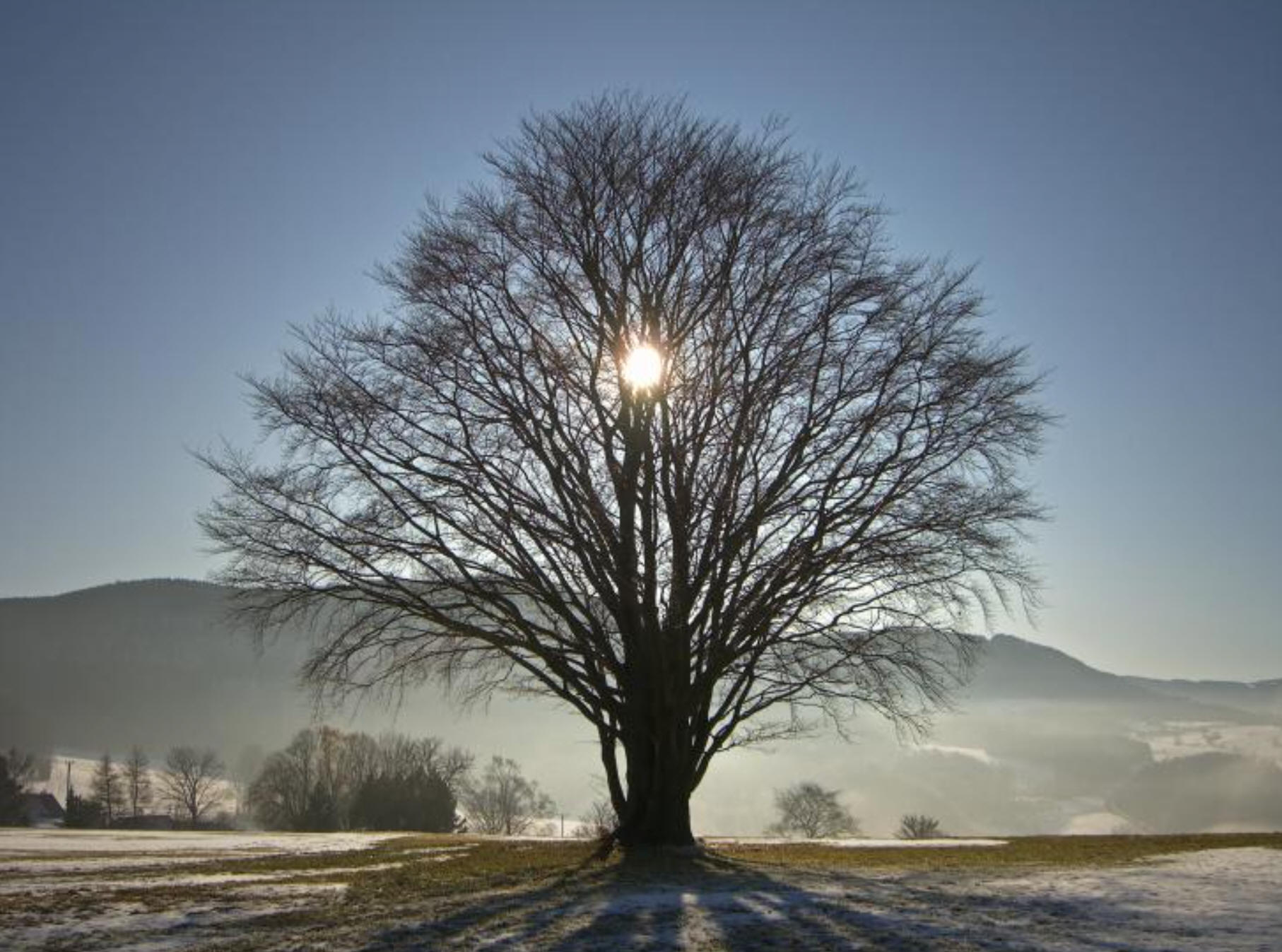
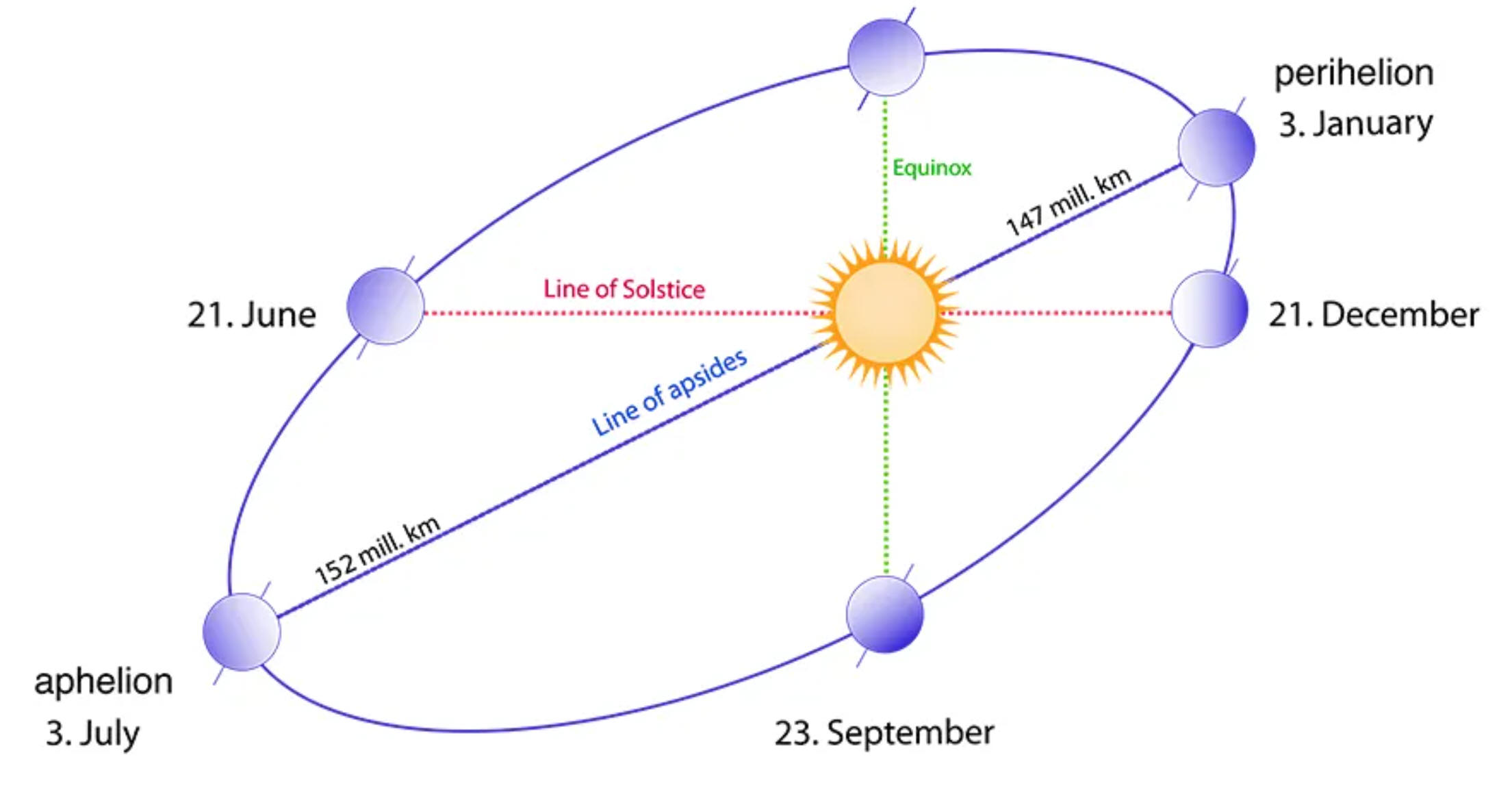 Class
51:
Thursday,
12/3/2020
Class
51:
Thursday,
12/3/2020Warm Up:
1. What is the winter solstice?
2. When is the winter solstice?
3. Why is the winter solstice significant?
Today:
- Google Meet: This
will be a quick one.
-
Clarification about the grading of these three options.
-
Hardest Version (earn up to 100%)
- Solution -- the medium solution, below, would be acceptable, but there are several ways to arrange the plate boundaries
- +2 bonus points for arranging your plate boundaries in a way that is different from the solutions below and also different from my example from class.
-
Medium Version (earn up to 95%)
- Medium Version Diagram
- Here's what the blank diagram looks like,
assembled --

- Here's the medium version solution
-
Easier Version (earn up to 80%)
- Easier Version Diagram
- Here's what it looks like, assembled --

- Here's the easier version solution
-
Hardest Version (earn up to 100%)
-
Clarification about the grading of these three options.
- Blue: Choose your test option. Try it and grade yourself.
- Gold:
- Do a little quiz review before the retake. Take a look at some of the real-life example locations.
- Quiz retake
- Choose the test version that you want to try. Complete it and be ready to have it graded by another student tomorrow. The grade won't count; this will just be a practice exercise.
- If you want to take the test tomorrow, for real, you can. (If you can get it done before class ends today, you can take it today).
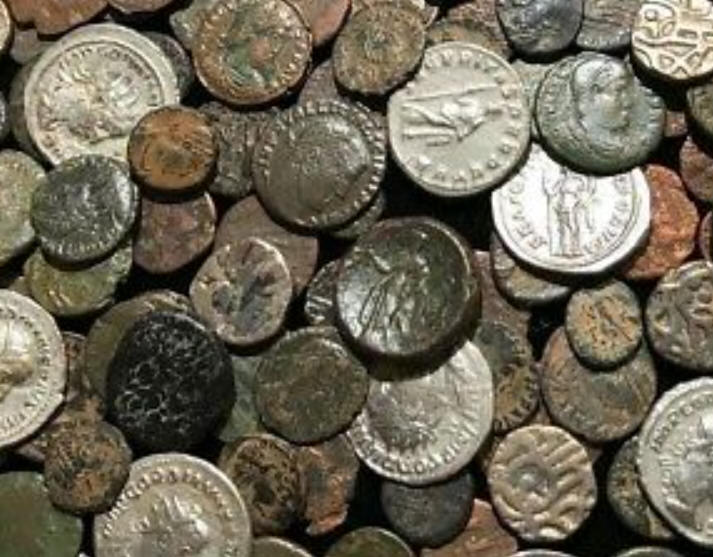 Class
50:
Wednesday,
12/2/2020
Class
50:
Wednesday,
12/2/2020Warm Up: An archaeologist dug up a coin that was dated 500BC. Immediately, the archaeologist knew it was a fake. How?
Today:
- Google Meet:
-
Check out the three versions of the test
- Hardest Version (earn up to 100%)
-
Medium Version (earn up to 95%)
Medium Version Diagram Here's what it looks like,
assembled --

-
Easier Version (earn up to 80%) Easier
Version Diagram Here's what it looks like, assembled --

-
Check out the three versions of the test
- Blue and Gold Homework: Think about which test you would like to take.
- Gold Cohort
Homework: prepare for tomorrow's quiz
retake -- plate boundary names and real world examples.
- Here's the practice quiz, from class #47 pdf version
- Answers are... 1. F 2.C 3.D 4.B 5.E 6.G 7.A 8.E 9.C 10.A 11.F 12.D 13.G 14.B
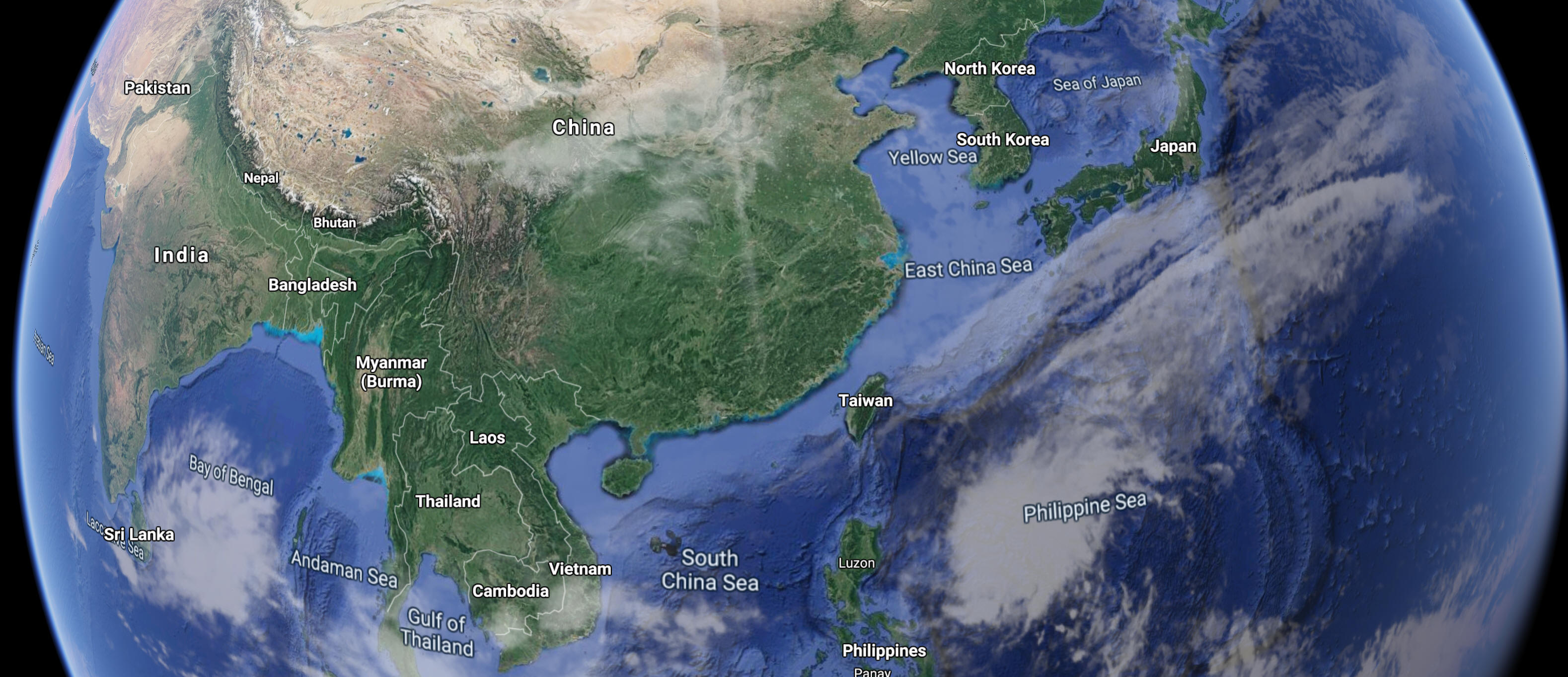 Class
49:
Tuesday,
12/1/2020
Class
49:
Tuesday,
12/1/2020Warm Up:
1. What would each of these features look like from a satellite view?
A. Continent/Continent Convergent
B. Continent/Ocean Convergent
C. Continent/ Continent Divergent
D. Ocean/Ocean Convergent
E. Ocean/Ocean Divergent
F. Ocean Hotspot
G. Transform boundary
Today:
- Google Meet:
- Tomorrow I will clarify what you will need to do for the test. There will be multiple options, depending on the score you would like to try for.
- Finish the Plate Tectonics Test Review together. pdf version My example, through part 3
- Blue Cohort: quiz over plate boundary names and real-world examples.
- Blue and Gold Homework: Practice what we did today. The assignment is in Google Classroom.
-
Gold Cohort: prepare for Thursday's quiz
retake -- plate boundary names and real world examples.
- Here's the practice quiz, from class #47 pdf version
- Answers are... 1. F 2.C 3.D 4.B 5.E 6.G 7.A 8.E 9.C 10.A 11.F 12.D 13.G 14.B
Warm Up:
1. Let's sketch one continuous diagram with all of these plate boundaries and features...
A. Continent/Continent Convergent
B. Continent/Ocean Convergent
C. Continent/ Continent Divergent
D. Ocean/Ocean Convergent
E. Ocean/Ocean Divergent
F. Ocean Hotspot
2. Which type of plate boundary are we missing? Why?
Today:
- Google Meet:
- Warm-up
- Grading announcement -- I will be "turnin off" the 1st term grade in PowerSchool so that you can see your 2nd term grade.
- Begin the Plate Tectonics Test Review together. pdf version My example, through part 3
- Quiz retake over plate boundary names and real-world examples.
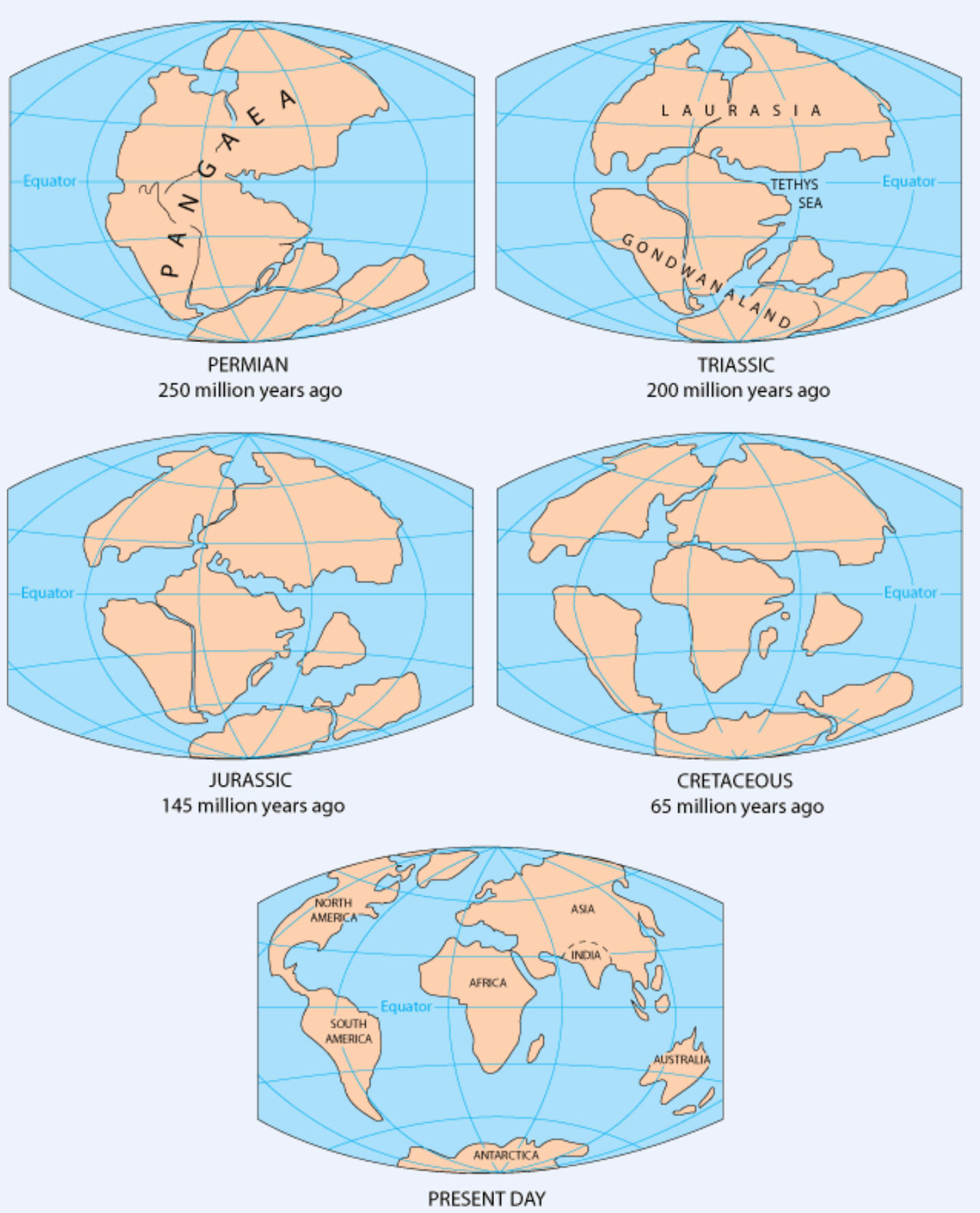 Class
47:
Friday,
11/20/2020
Class
47:
Friday,
11/20/2020Warm Up:
1. When did the scientific community first accept the theory of Plate Tectonics?
2. What was Pangaea?
3. What evidence first convinced the scientific community that Plate Tectonics was a valid theory?
Today:
- Google Meet:
- Warm-up.
- Quiz over plate boundary names and real-world examples.
- Quiz over mafic and felsic properties, for anyone who wants to take or retake it.
- Gold Group:
- Watch National Geographic Volcano!
- All Students:
- No homework! Have a good break! Be smart!
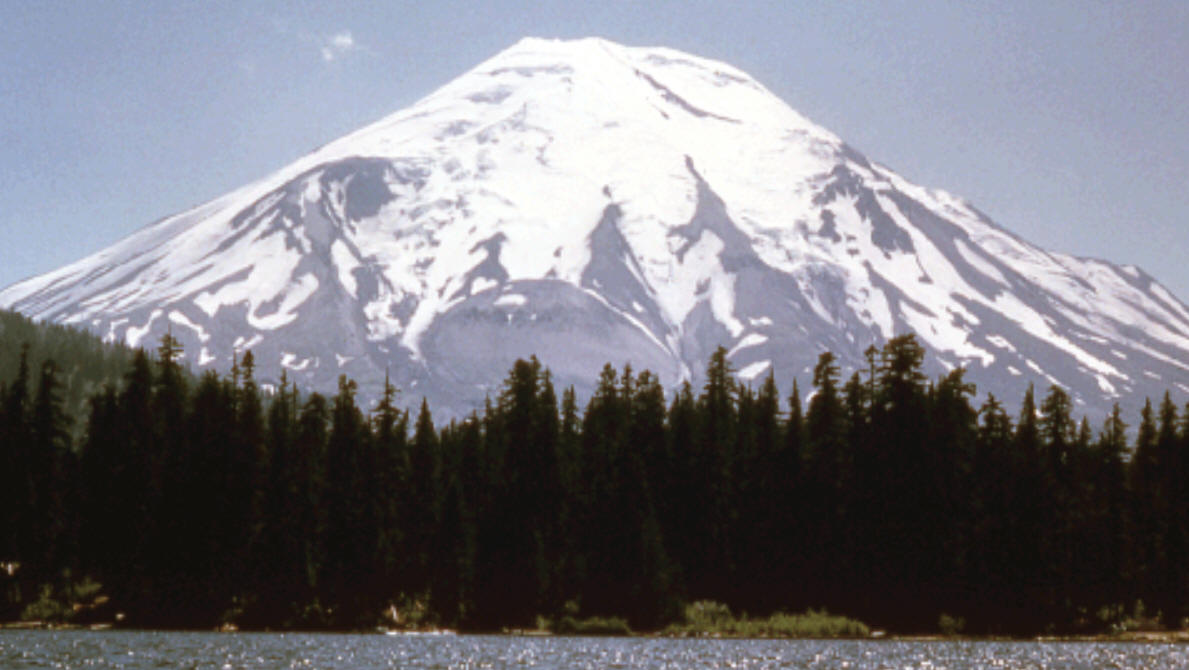
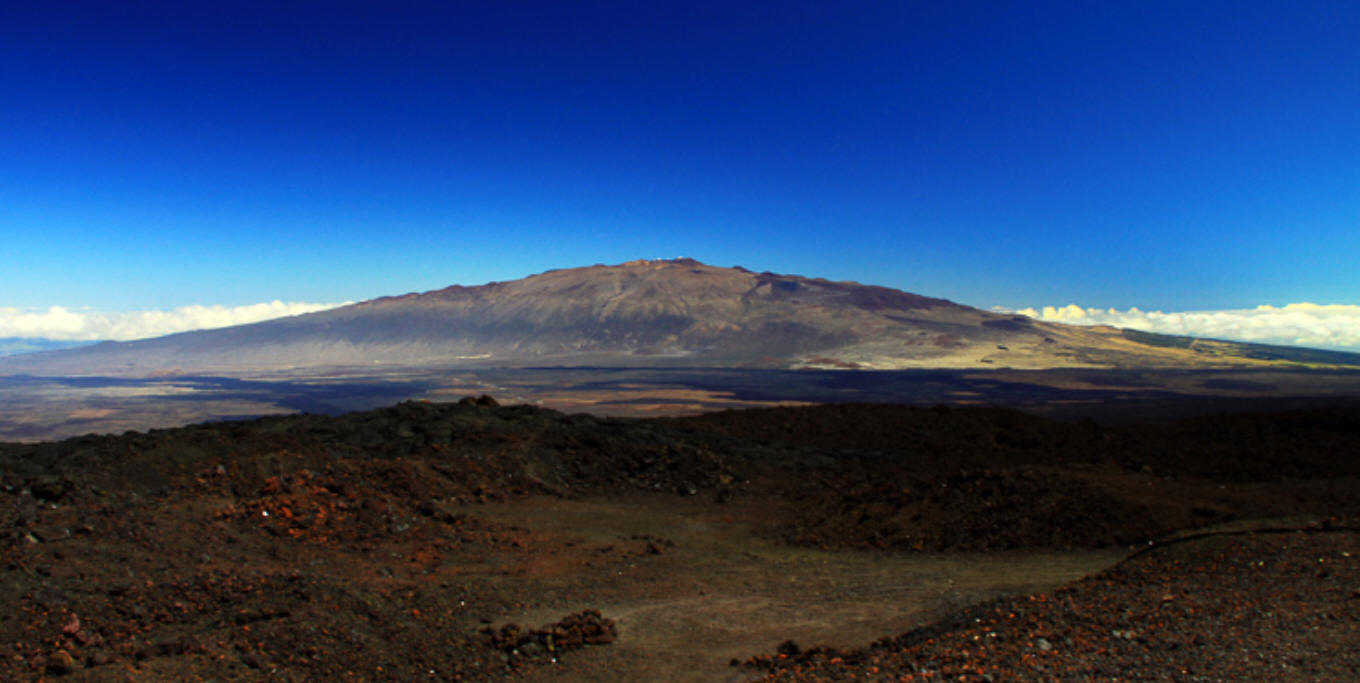 Class
47:
Thursday,
11/19/2020
Class
47:
Thursday,
11/19/2020Warm Up: We have learned about 2 types of volcanoes -- Composite Volcanoes (a.k.a. Stratovolcanoes) and Shield Volcanoes.
1) Where do composite volcanoes form? 1 2 3 4
2) Where do shield volcanoes form? 1 2 3
3) What other kinds of volcanoes are there?
Today:
- Google Meet:
- Go over the homework
- Check out this slide show of the various plate boundaries and real-world examples
- Practice quiz over plate boundary names and real-world examples pdf version
- Gold Group:
- Quiz over mafic and felsic materials
- If there's time, start watching National Geographic Volcano!
- All Students:
- Practice the practice quiz. Blue students will take it virtually, tomorrow. Gold will take it in class.
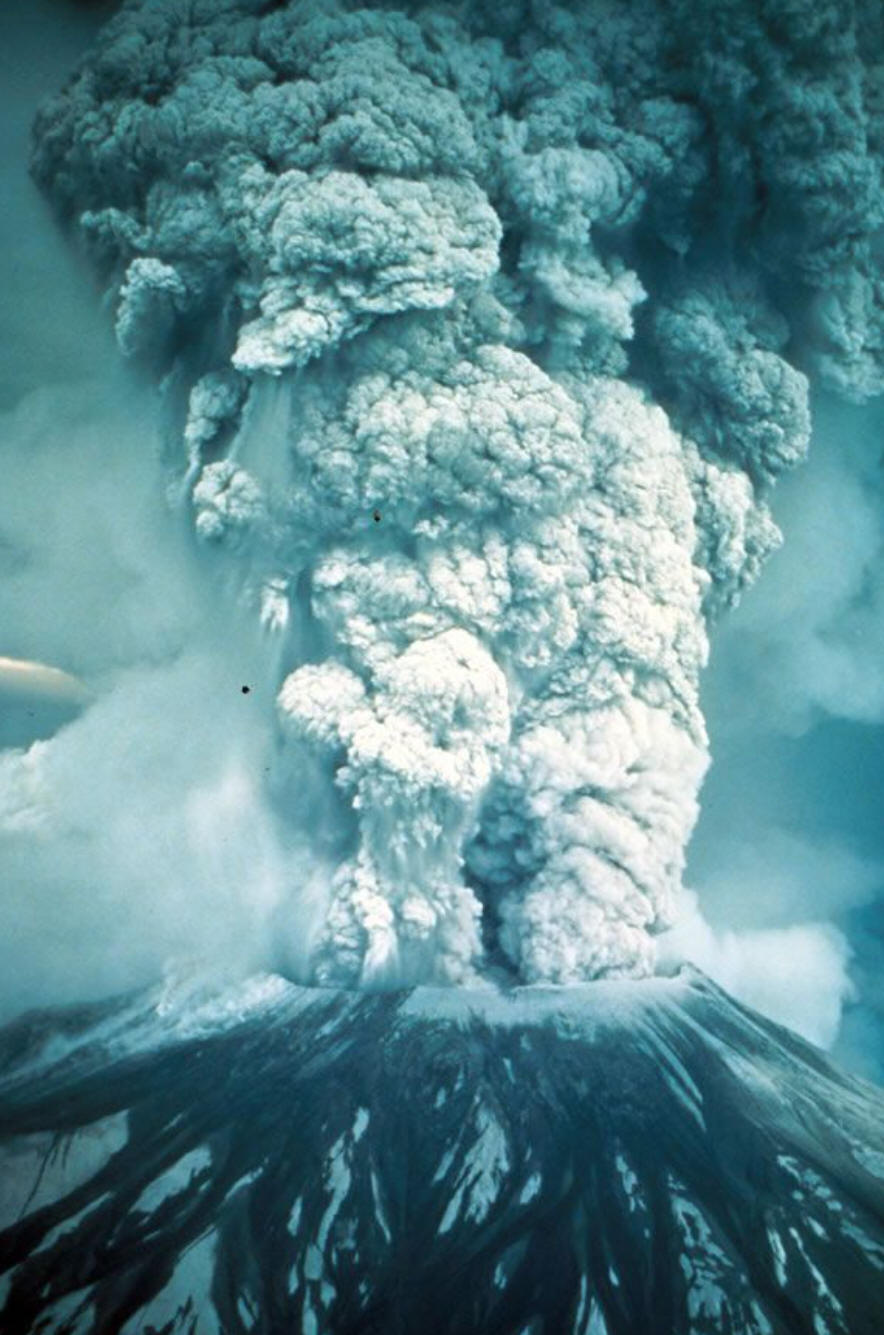
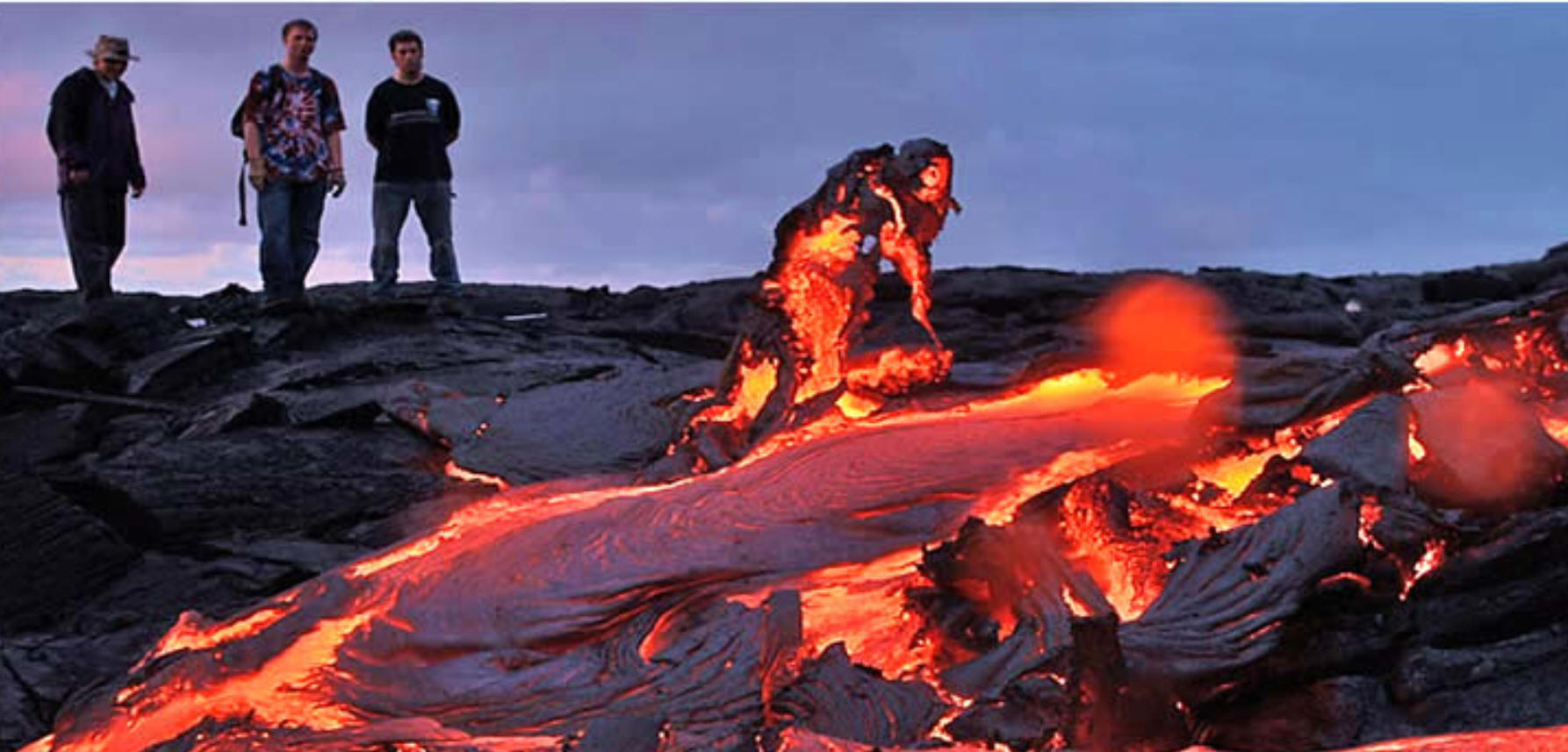 Class
46:
Wednesday,
11/18/2020
Class
46:
Wednesday,
11/18/2020Warm Up:
1. At what type of plate boundary(ies) might each of these eruptions have taken place?
2. What is the difference between magma and lava?
Today:
- Google Meet:
- Plate Boundaries* Google Slides
- Final plate boundary drawings -- Continent/Continent Divergent, Continent/Continent Transform
- plate boundary drawing template
- Gold Group: Quiz tomorrow over mafic and felsic materials
- All students: Homework -- Complete the activity, "Understanding a plate boundary." pdf version
 Class
45:
Tuesday,
11/17/2020
Class
45:
Tuesday,
11/17/2020Warm Up:
1. Which lettered item on the right is not a plate boundary?
2. Name all of the plate boundaries in the diagram on the right.
3. Which of the convergent plate boundaries will be subduction zones?
4. Why won't the other convergent plate boundary be a subduction zone?
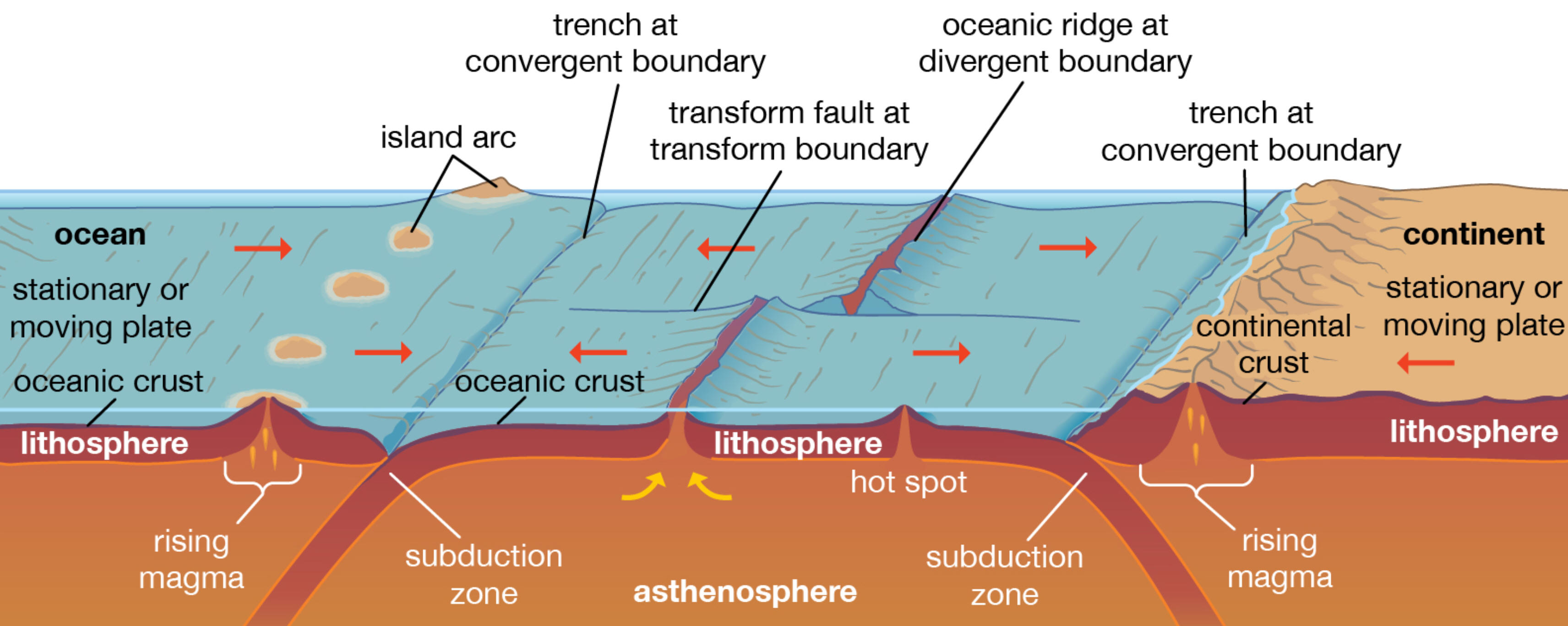
Today:
- Google Meet:
- Plate Boundaries* Google Slides
- More plate boundary drawing practice -- O/O Conv, Ocean Hotspot
- plate boundary drawing template
- Blue Group:
- Quiz over mafic and felsic materials
- No homework
- Gold Group:
- Quiz on Thursday over mafic and felsic materials (study)
- No other homework


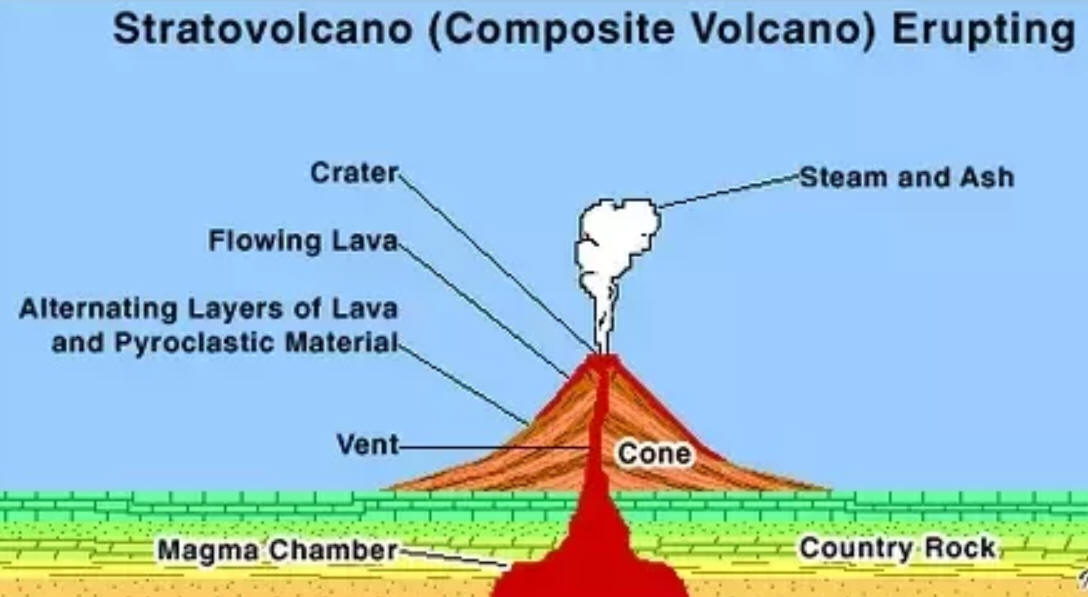 Class
44:
Monday,
11/16/2020
Class
44:
Monday,
11/16/2020Warm Up:
1. How are the items on the right similar? How are they different?
2. In the bottom picture, what makes the "diapirs" rise from the ocean crust in the subduction zone?
Today: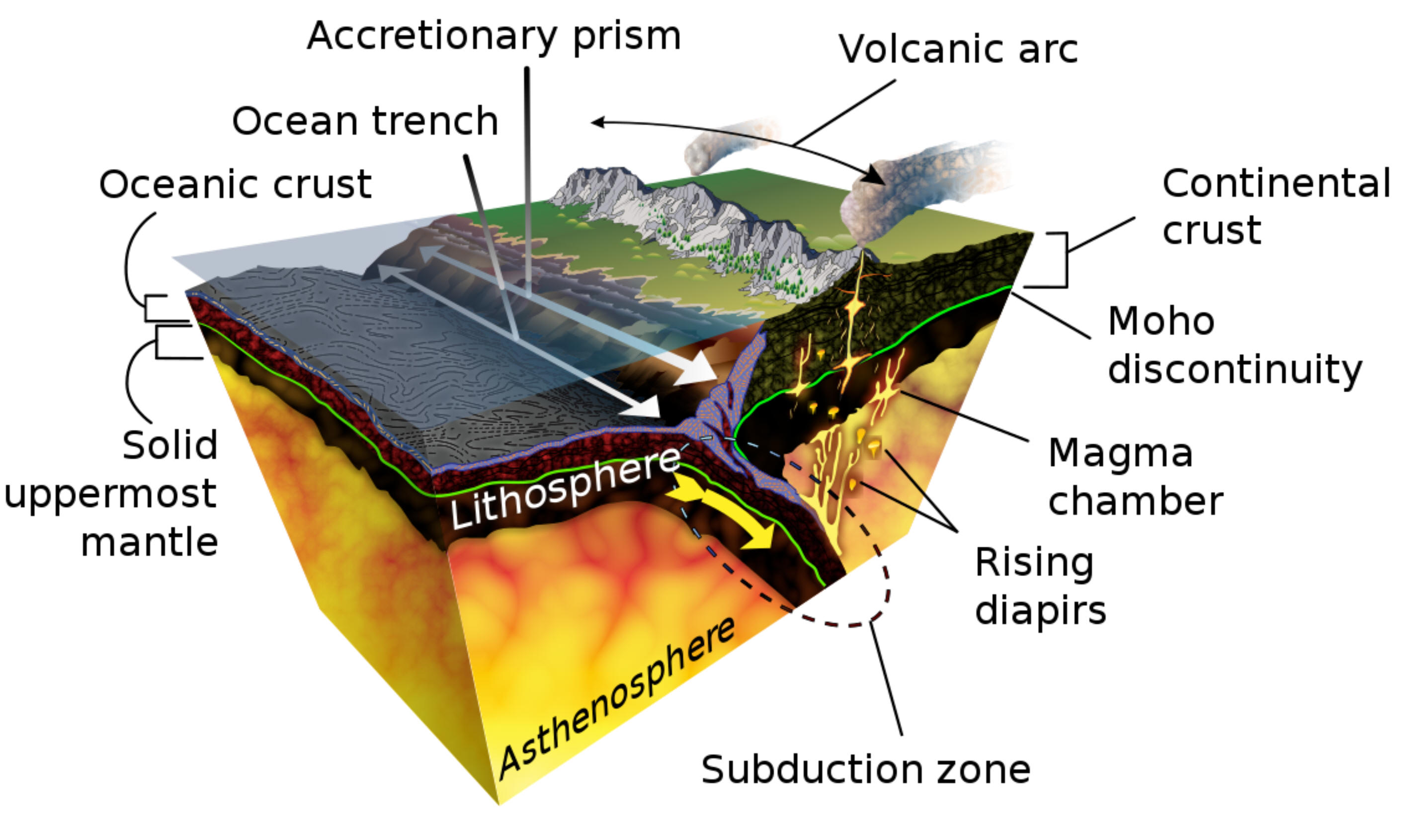
- Google Meet:
- Review the rock types quizlet
- Plate Boundaries* Google Slides
- More plate boundary drawing practice -- Use this plate boundary drawing template if you want
- All students:
- Study for Mafic/Felsic Quiz (study the Quizlet)
- Blue Group:
- Quiz today over the first quizlet and notes (Earth Layers, plate boundaries, and convection currents)
- Quiz tomorrow over the mafic/felsic quizlet -- study the quizlet
- Gold Group:
- Quiz on Thursday over the mafic/felsic quizlet -- study the quizlet
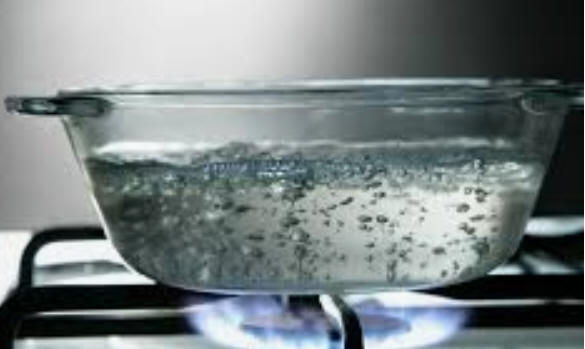
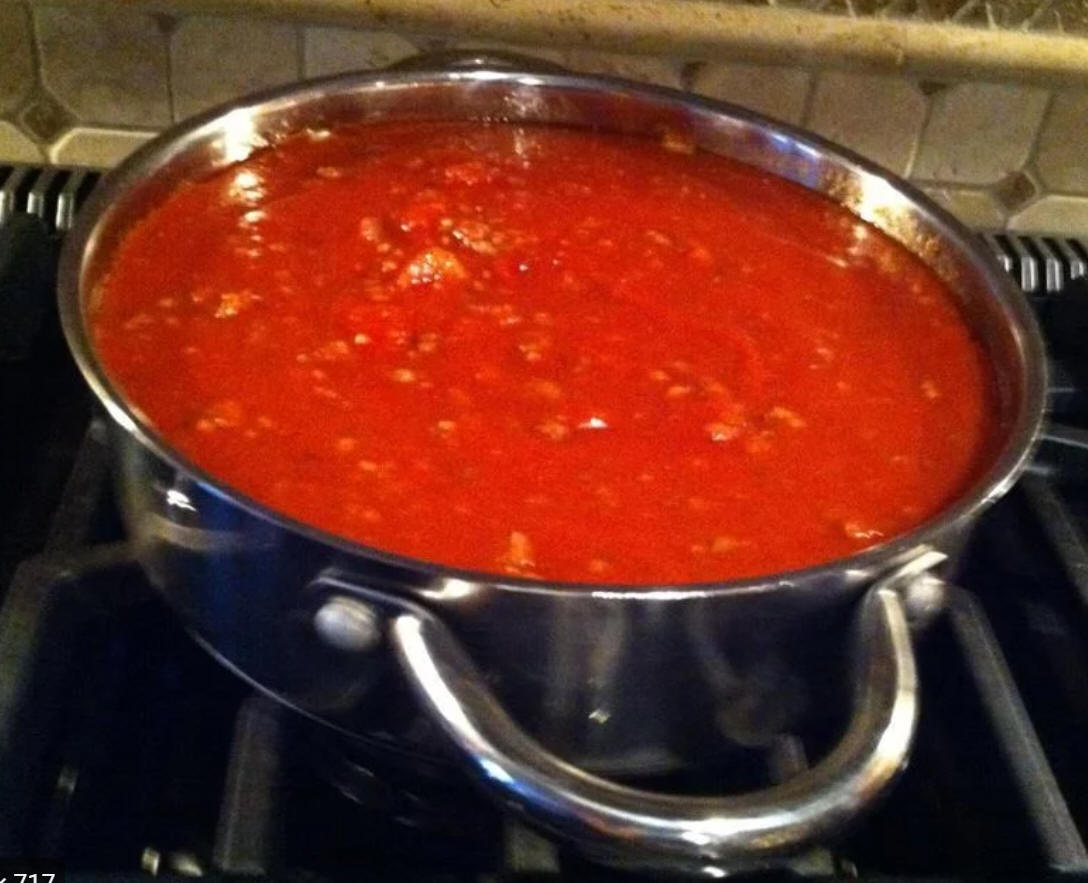 Class
43:
Friday,
11/13/2020
Class
43:
Friday,
11/13/2020Warm Up:
1. If I boil some water and some spaghetti sauce, which one will splatter more? Why?
In the graphic on the right illustrating convection currents...
2. What causes the rising currents? 3. What causes the sinking currents? 4. What causes the sideways currents?
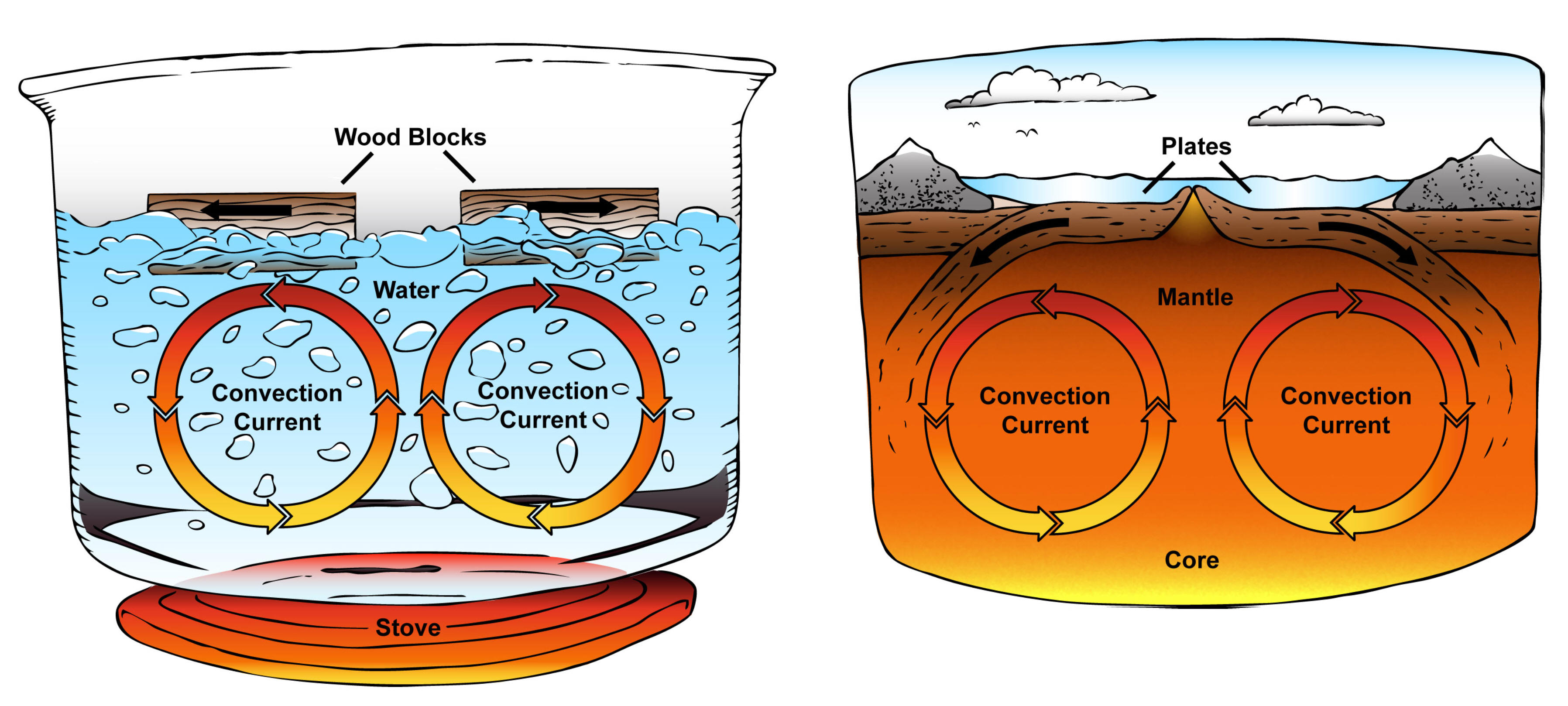 Today:
Today:
- Google Meet:
- Notes: Plate Tectonics Part 2 -- Characteristics of Mafic and Felsic rocks; begin drawing plate boundaries.
- All Students: Study the Rock Types Quizlet. Prepare to be called on in class on Monday!
- Blue Group: Study -- quiz on Monday over the first quizlet and notes (Earth Layers, plate boundaries, and convection currents)
-
Gold Group:
- Quiz -- Earth Layers, Plate Boundaries, Convection Currents
- Quiz next Thursday over the Mafic/Felsic Quizlet
 Class
42:
Thursday,
11/12/2020
Class
42:
Thursday,
11/12/2020Warm Up:
Why do the blobs in a lava lamp rise and sink?
Today:
- Google Meet:
- Discuss using Zoom instead of Meet
- Review the homework -- Study this quizlet -- we will have a short quiz on Friday (Monday for Blue people)
- Tomorrow
- Blue Group: Study.-- quiz on Monday over yesterday's notes, plus the Quizlet.
-
Gold Group:
- Watch part of Cosmos. The Blue group watched it, and it was a good way to cap off astronomy.
- Study for a quiz tomorrow over yesterday's notes, plus the Quizlet.
Warm Up:
Can you identify any of these locations on Earth? Do you know how they formed?
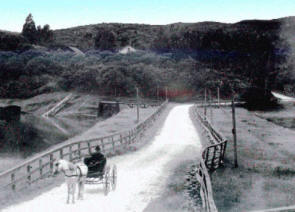
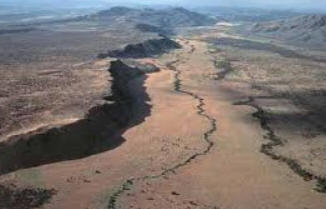


Today:
- Google Meet:
- Term 2...
- Geology
- Plate Tectonics
- Rock Dating
- Meteorology
- Weather/Climate
- Climate Change
- Geology
- Today: start Plate Tectonics -- Notes on Earth's layers, plate boundaries, and convection currents. Plate Tectonics Notes, Part 1 -- Filled-in version
- Term 2...
- Everyone: Study this quizlet -- we will have a short quiz on Friday (Monday for Blue people)
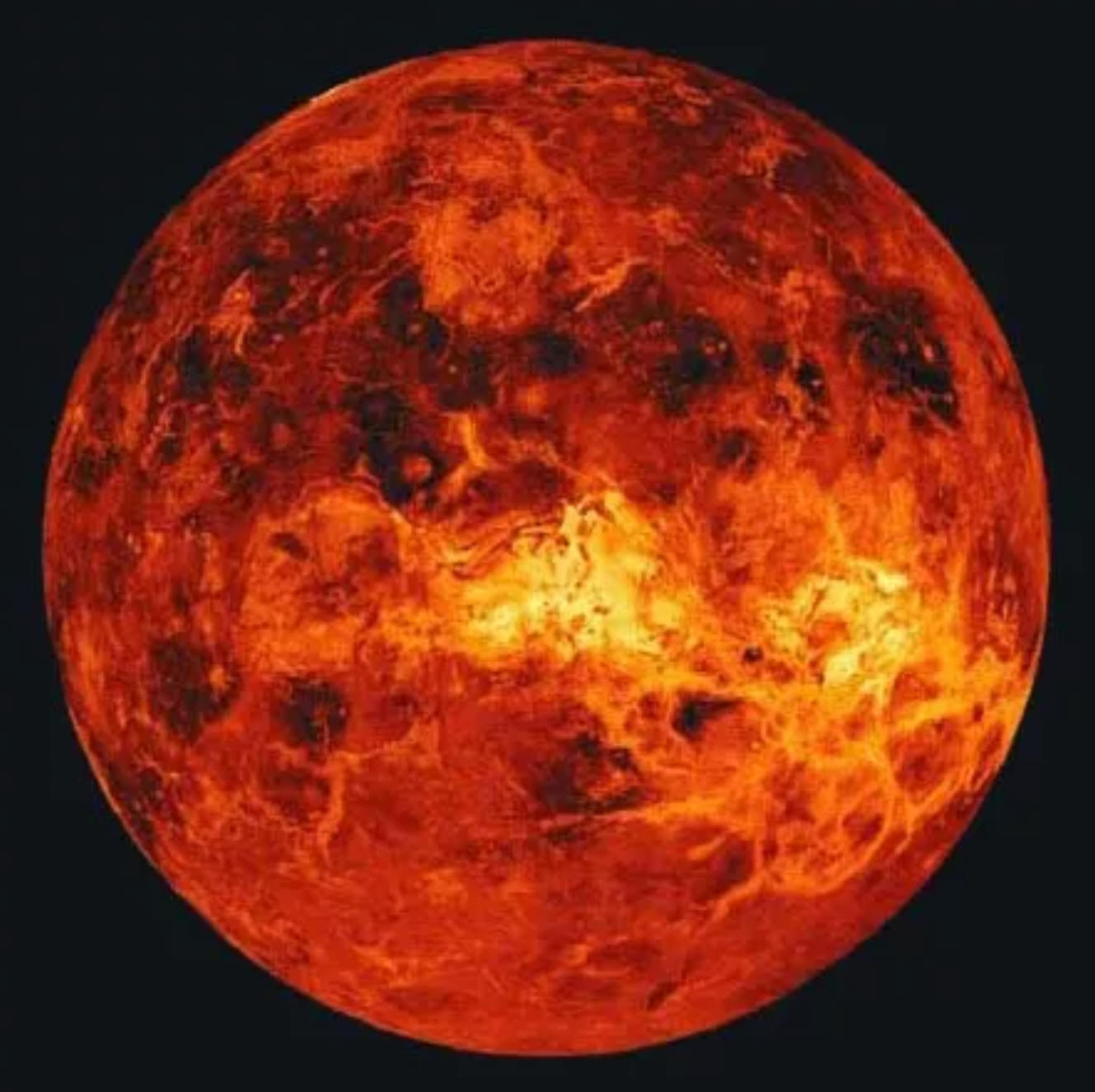 Class
40:
Tuesday,
11/10/2020
Class
40:
Tuesday,
11/10/2020Warm Up:
1. What is the hottest planet?
2. Why is it so hot?
3. Rank the planets according to their hottest and coldest temperatures.
4. How hot and cold does the Moon get?
Today:
- Google Meet Tomoorow (11/11/2020)
- Blue Students: Finish Term 1 Test. Watch Cosmos
Warm Up:
See Class #38
Today:
- No Google Meet until Wednesday (11/11/2020)
- Blue Students: Term 1 Test. Movie?
 Class
38:
Friday,
11/6/2020
Class
38:
Friday,
11/6/2020Warm Up:
1. The flag of Pakistan is, in my opinion, an excellent flag. But it has at least three unrealistic aspects. Can you find them?
2. On a related note, there are three misteaks in thi sentence. Can you find them all?
Today:
- No Google Meet until next Wednesday (11/11/2020)
- Gold Students: Term 1 Test tomorrow. Study Part 2 of the review and #13-16 from Part 1 of the review. **Since the Gold people won't have much time to prepare, you can take the quiz again next Thursday (even though that is technically Term 2)
- Blue Students: Term 1 Test on Monday or Tuesday???. Study Part 2 of the review and #13-16 from Part 1 of the review.
Warm Up: No warm-up today. Let's get right to business.
Today:
- All Students -- 8:00 Google Meet --
- Check the homework (#16 of Term 1 Review, part 1) Answers
- Study the Term 1 Review, part 2 pdf version Here are the answers
- Study! -- Some of you are just below passing. This test can make the difference.
-
How this test will count:
- If your test grade is better than your current class average, I will count the grade as much as all of the rest of your quizzes (5 quizzes).
- If your test grade is worse than your current class average, I will count the grade as much as one quiz.
- Gold Students: Term 1 Test tomorrow. Study Part 2 of the review and #13-16 from Part 1 of the review. **Since the Gold people won't have much time to prepare, you can take the quiz again next Thursday (even though that is technically Term 2)
- Blue Students: Term 1 Test on Monday or Tuesday???. Study Part 2 of the review and #13-16 from Part 1 of the review.
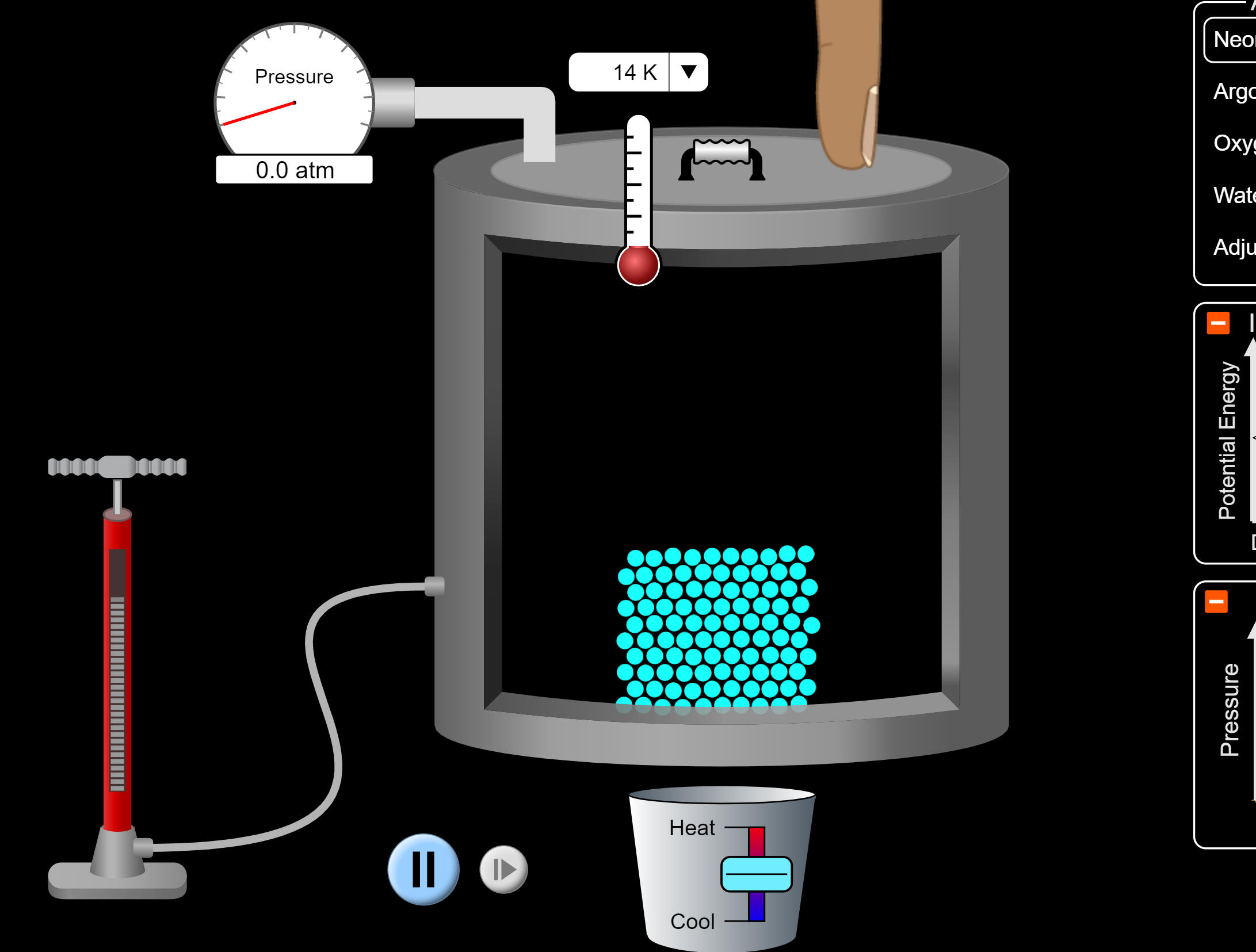 Class
37:
Wednesday,
11/3/2020
Class
37:
Wednesday,
11/3/2020Warm Up:
1. If you heat something up, what happens to its volume, density, pressure, and temperature?
2. If you compress something, what happens to its volume, density, pressure, and temperature?
3. How are these situations different?
Today:
- All Students -- 8:00 Google Meet --
- Check the homework (#13) and finish the Term 1 Review, part 1
- No homework.
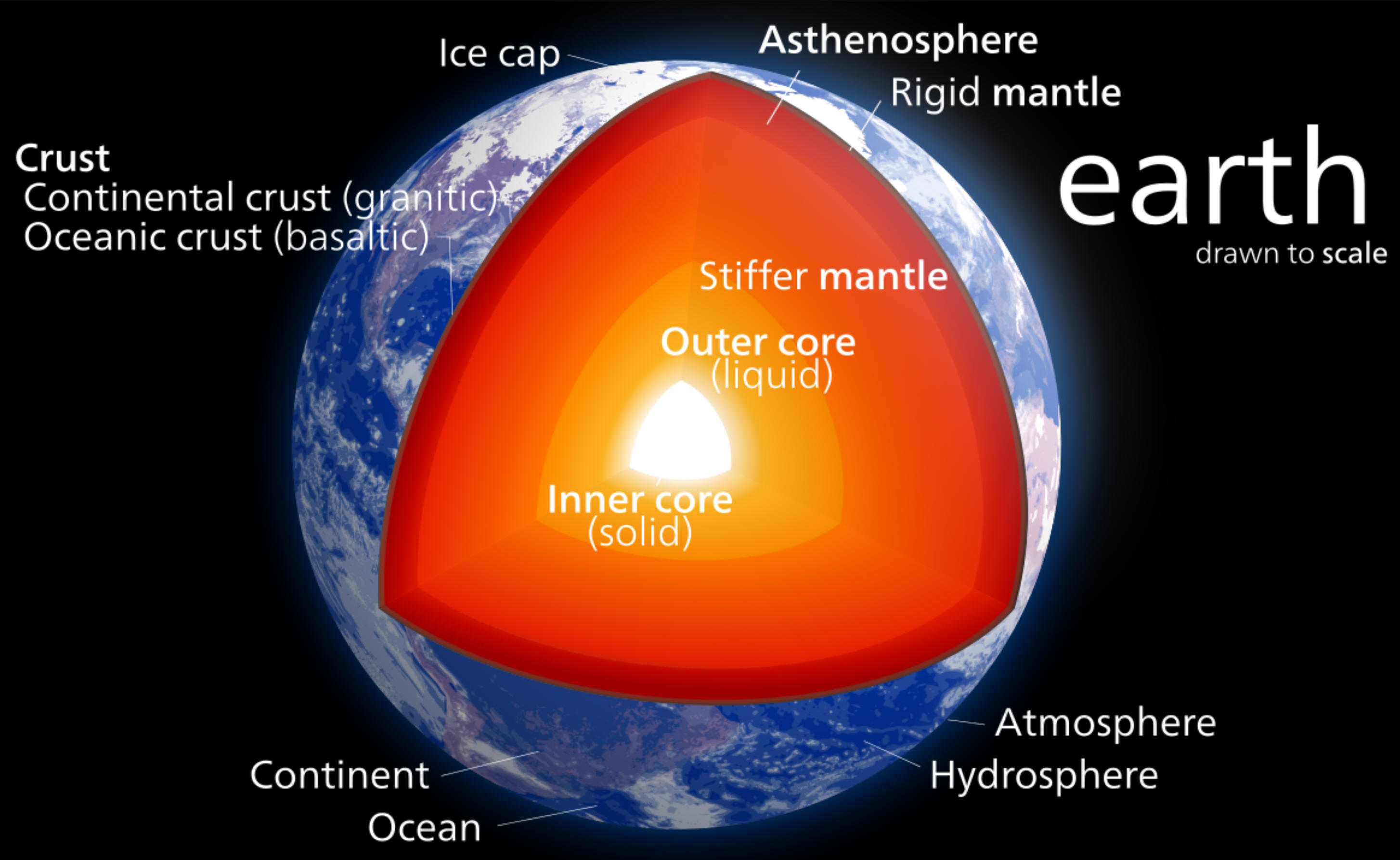 Class
36:
Monday,
11/2/2020
Class
36:
Monday,
11/2/2020Warm Up: We've talked about two different ways in which pressure is created, but we never compared them explicitly in our notes. So...
1) When you microwave a sealed container, pressure builds up in the container. What causes that pressure?
2) What causes the pressure inside the Earth?
3) If you have a sealed 2-liter bottle full of air, how can you quickly increase the pressure in the bottle, just by using your hands?
4) Which of the examples above is different from the other two? Why?
Today:
- All Students -- 8:00 Google Meet --
- Term 1 Review, part 1 pdf version Pages 1 & 2, Filled-in
- Homework: complete #13 of the review.
- Blue Students:
- Quiz -- Large Stars, H-R diagrams, Big Bang
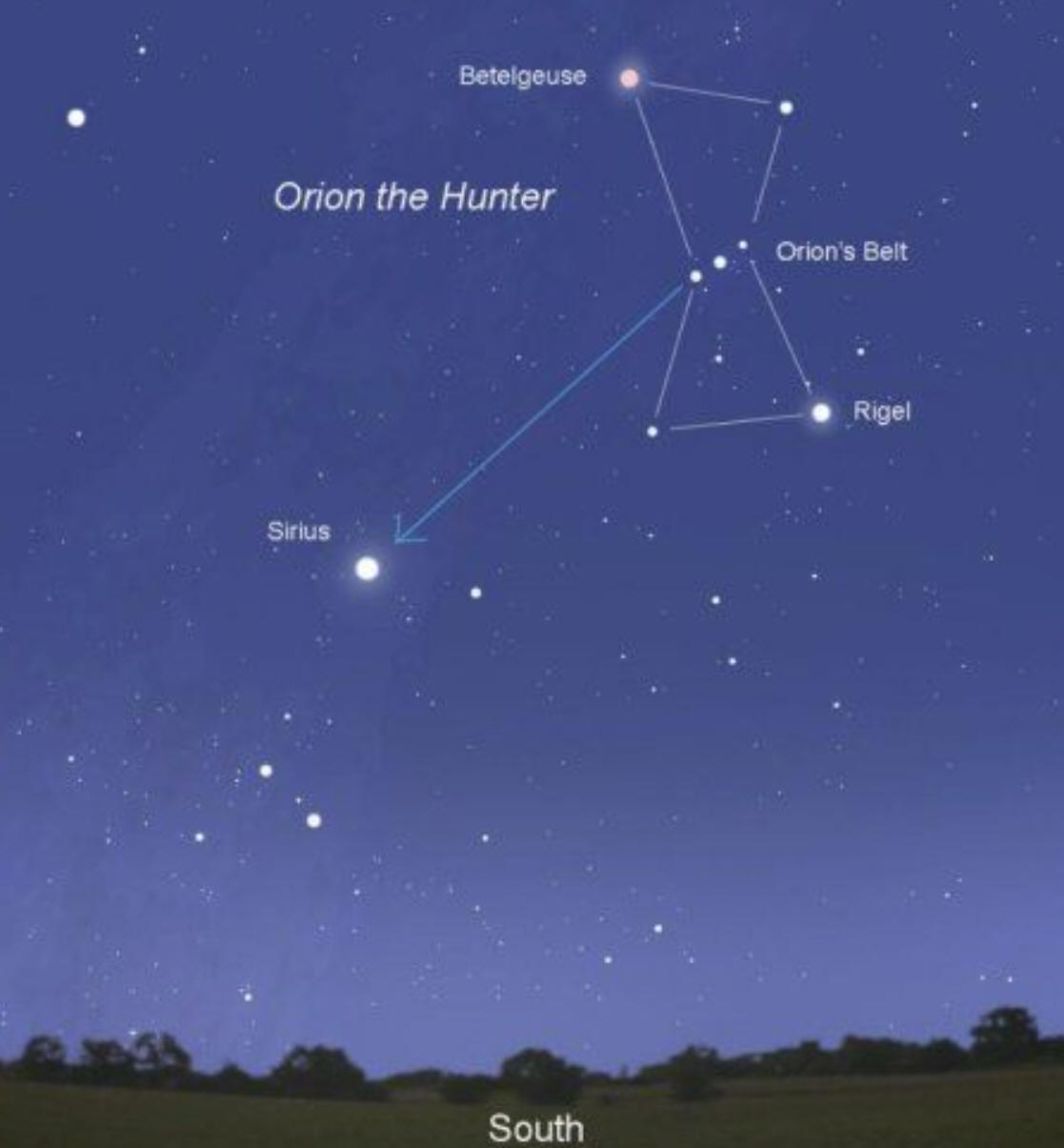
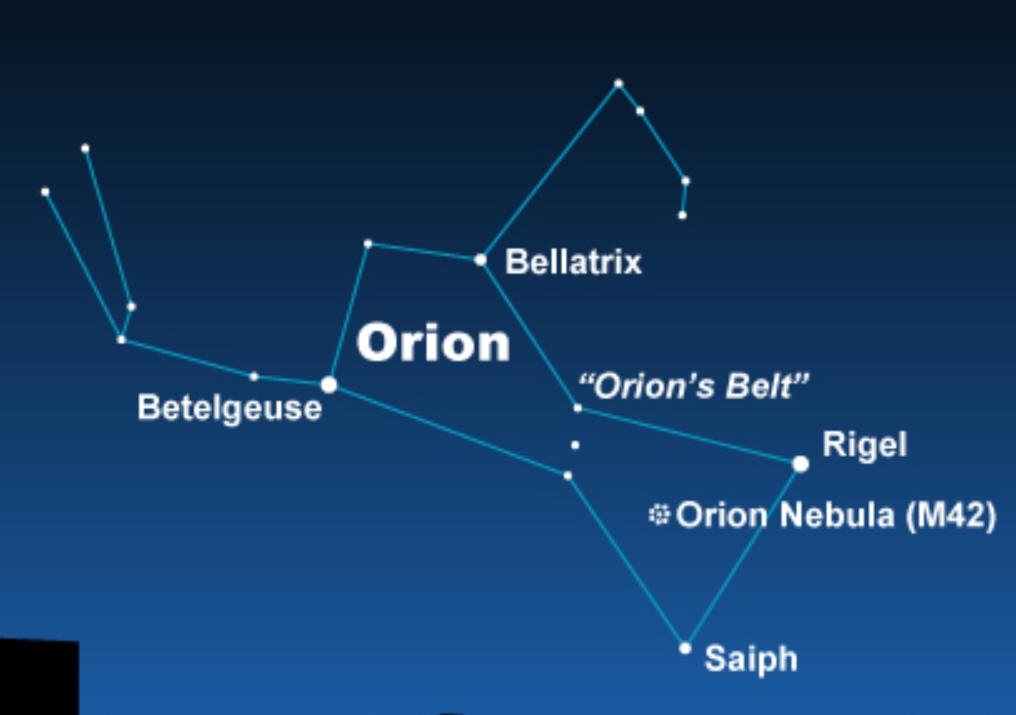 Class
35:
Friday,
10/30/2020
Class
35:
Friday,
10/30/2020Warm Up: Soon we will be able to see Orion in the southwest sky after dark.
1. Can you find two connections to Harry Potter in the figures on the right?
2. Can you find a red supergiant in the photos?
Today:
- All Students -- 8:00 Google Meet --
- Warm-up
- No homework
- Our Term 1 review begins on Monday
- Gold Students (and possibly some
students at home?):
- return quizzes
- take quizzes
- Play a game -- win fruit snacks!
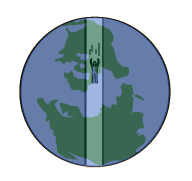 Class
34:
Thursday,
10/29/2020
Class
34:
Thursday,
10/29/2020Warm Up: This was the class #7 warm-up, but I forgot to discuss it.
1. What would happen if you made a hole through the center of the Earth, and you jumped in?
2. If you made it all of the way through, where would you come out? (antipodes map)
Today:
- All Students -- 8:00 Google Meet --
-
Try out my new monitor -- hopefully this will let me see
students at home without having to worry about them being in the
video!
- Do a little more quiz review
- Retake opportunities tomorrow and
Monday.
- Are you checking PowerSchool? Do you know which quizzes are missing? Have you done the stargazing assignment? Do you know which scores are low?
- Discuss how to prepare for a retake.
- Test some students on how to find study materials -- you get to direct me through the process.
- Who would like me to print a practice quiz? Which one?
-
Try out my new monitor -- hopefully this will let me see
students at home without having to worry about them being in the
video!
- Gold Students:
- return old quiz.
- take Quiz
- All Students: Prepare to retake any quiz. You can do it tomorrow. Blue people can retake a quiz on Monday.
Warm Up: Riddles totally unrelated to Earth science...
1. How much dirt is in a hole that is 1 foot deep, 2 feet long, and 2 feeet wide?
2. How many 4 cent stamps are there in a dozen?
3. Daddy bull weighs 1,000 pounds. Baby bull weighs 100 pounds. How much does Mama bull weigh?
4. Pat was standing outside with no umbrella, no raincoat, and no hat, but not one hair on his head got wet. How is this possible?
5. An ancient device allowed people to see through solid walls. What was the device?
Today:
- All Students -- 8:00 Google Meet --
- All Students: Study for the quiz. Gold students have the quiz tomorrow. Blue students have it on Monday.
 Class
32:
Tuesday,
10/27/2020
Class
32:
Tuesday,
10/27/2020Warm Up:
The picture on the right shows an explosion. This explosion shares some similarities with the Big Bang theory of the Universe's formation.
1. In the picture, which bits of matter are traveling fastest? How can you tell?
2. One result of this explosion is the movement of bits of matter. What are some other results of this explosion?
The expansion of the Universe after the Big Bang was not like the expansion after the explosion above. It was more like the expansion of the surface of a balloon.
3. If we drew some waves between the coins, what would happen to the wavelengths as the balloon expanded?
Today:
- All Students -- 8:00 Google Meet --
- Blue Students: return quizzes
- All Students:
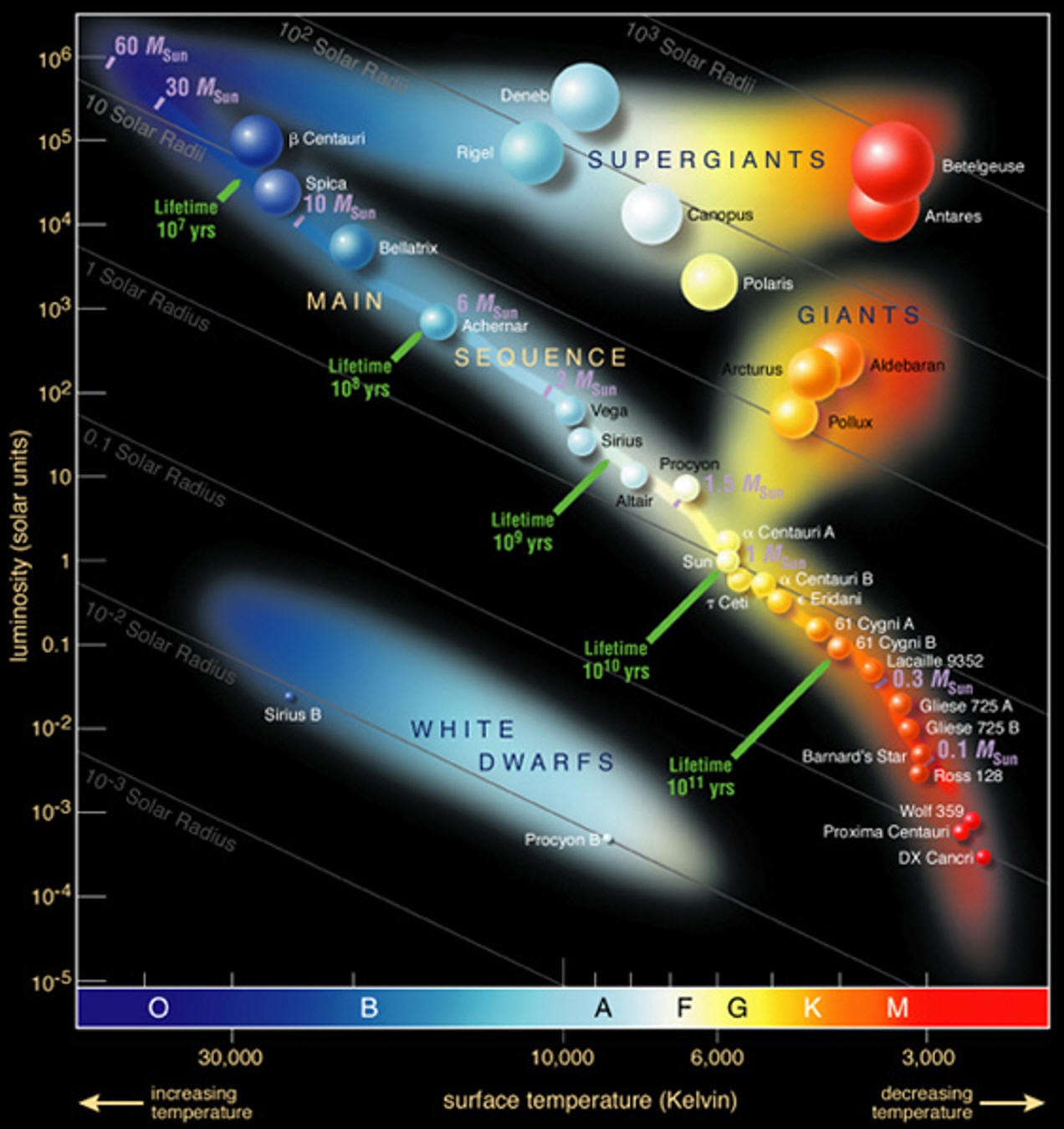 Class
31:
Monday,
10/26/2020
Class
31:
Monday,
10/26/2020Warm Up: The diagram on the right is called an H-R (Hertzsprung-Russell) Diagram. An H-R diagram groups stars in a variety of ways. What are some ways that stars are grouped on the diagram?
Today:
- All Students -- 8:00 Google Meet --
- Blue Students:
- Quiz: Medium Star Life Cycles
- All Students: Practice -- There are two Google Quizzes to take. One is over Life cycles of large stars. The other is over H-R diagrams.
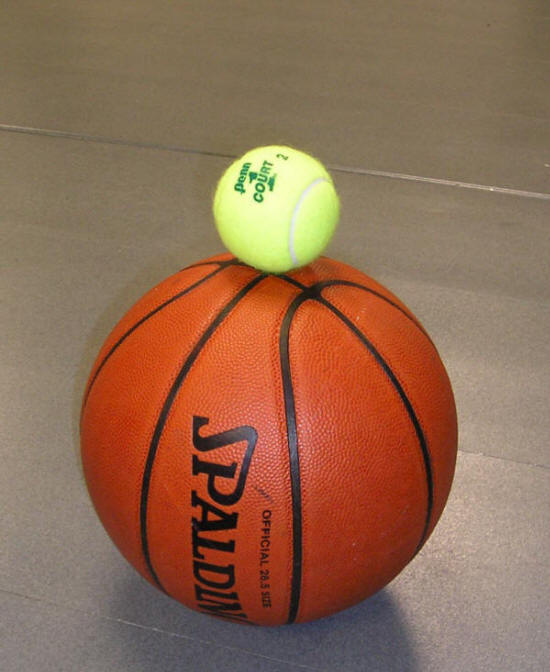 Class
30:
Friday,
10/23/2020
Class
30:
Friday,
10/23/2020Warm Up:
1. Do this: hold a tennis ball on top of a basketball and drop them to the floor together? See what happens.
2. Guess why it happens.
3. Watch this video to find the answers and to see how this relates to supernovas.
Today:
- All Students -- 8:00 Google Meet --
- Gold Students:
- Quiz: Medium Star Life Cycles
- No homework
- Blue Students: Study for the Medium Star Life Cycles quiz
 Class
29:
Thursday,
10/22/2020
Class
29:
Thursday,
10/22/2020Warm Up:
How can you demonstrate static electricity with ordinary clear tape? Good YouTube demo
Today:
- All Students -- 8:00 Google Meet --
- Practice quiz -- Medium star life cycles and Earth Formation pdf version answers
- Tomorrow -- life cycles of large stars
- All Students (practice): Study for a quiz that is very similar to today's practice quiz
-
Gold Students:
- Quiz: Formation of the Solar System
 Class
28:
Wednesday,
10/21/2020
Class
28:
Wednesday,
10/21/2020Warm Up:
1. Why don't these diagrams have color?
2. Which of the pictures on the right represents a main sequence star?
3. Which represents a red giant?
4. Which represents a white dwarf?
5. Explain how you can tell which is which.
6. Explain why the helium and the fusing hydrogen are located where they are.
Today:
- All Students -- 8:00 Google Meet --
- Go over the rest of the Birth of The Earth questions
- Go over the homework.
- What's left this term...
- 3 short units:
- Life Cycles of Large Stars
- HR Diagrams
- The Big Bang
- A big review and test over Everything!
- 3 short units:
- All Students (practice): Study your notes on Star Life Cycles. We will have a practice quiz tomorrow and a quiz on Friday (or Monday, for Blue People).
-
Gold Students:
- Quiz tomorrow over the formation of the Solar System
- Quiz on Friday over life cycles of medium stars (like our Sun)
- Blue Students: Quiz on Monday over life cycles of medium stars.
 Class
27:
Tuesday,
10/20/2020
Class
27:
Tuesday,
10/20/2020Warm Up: The diagram on the right shows the life cycle of a star like our Sun. What's wrong with the diagram?
Today:
- All Students -- 8:00 Google Meet --
- We will talk about the Birth of The Earth video tomorrow. The Blue people still haven't finished it.
- Notes: Medium Star Life Cycles pdf version filled-in version
- All Students (practice): Star life cycle practice (Google Quiz) in Classroom
- Blue Students:
- Finish Video
- Quiz retakes?
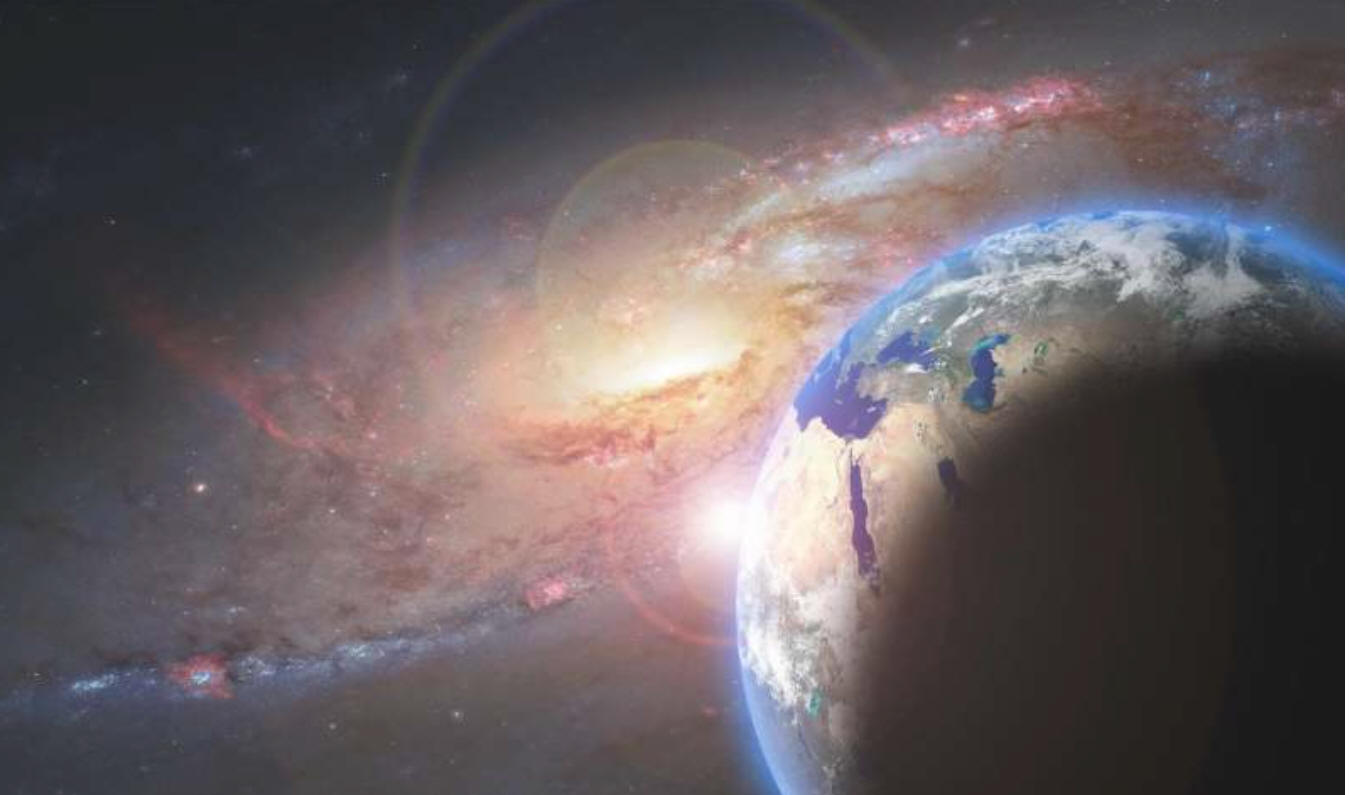 Class
26:
Monday,
10/19/2020
Class
26:
Monday,
10/19/2020Warm Up:
What was the hottest temperature ever produced on the Earth's surface? What produced that heat?
Today:
- All Students -- 8:00 Google Meet --
Discuss today's assignment -- Birth of The Earth video
- Answer the questions (Google Doc, below) while you watch
the video. Put your answers in the boxes. Each question tells
you when, in the video, the answer will be provided.
If you're asked for a username and password, here they are...
Username: ehscte
Password: hornets - Video Link
- Google Doc Questions Link -- make a copy and fill out the answers while you watch the video
- Answer the questions (Google Doc, below) while you watch
the video. Put your answers in the boxes. Each question tells
you when, in the video, the answer will be provided.
- Blue Students: Quiz -- Formation of The Solar System. Retakes? See last class
 Class
25:
Friday,
10/16/2020
Class
25:
Friday,
10/16/2020Warm Up:
1. How can you generate "static electricity" using a balloon?
2. How does static electricity work?
3. How is the concept of static electricity related to the Solar System's formation?
4. How can we relate static electricity to nuclear fusion?
Today:
- All Students -- 8:00 Google Meet -- Use the link at the top of the page in Google Classroom (or watch the recording later -- class YouTube playlist).
- All Students (practice): Quiz next class -- study your notes and the practice quiz.
- Gold Students: Quiz retake opportunity -- any quiz you choose (waves, physical properties, objects in space)
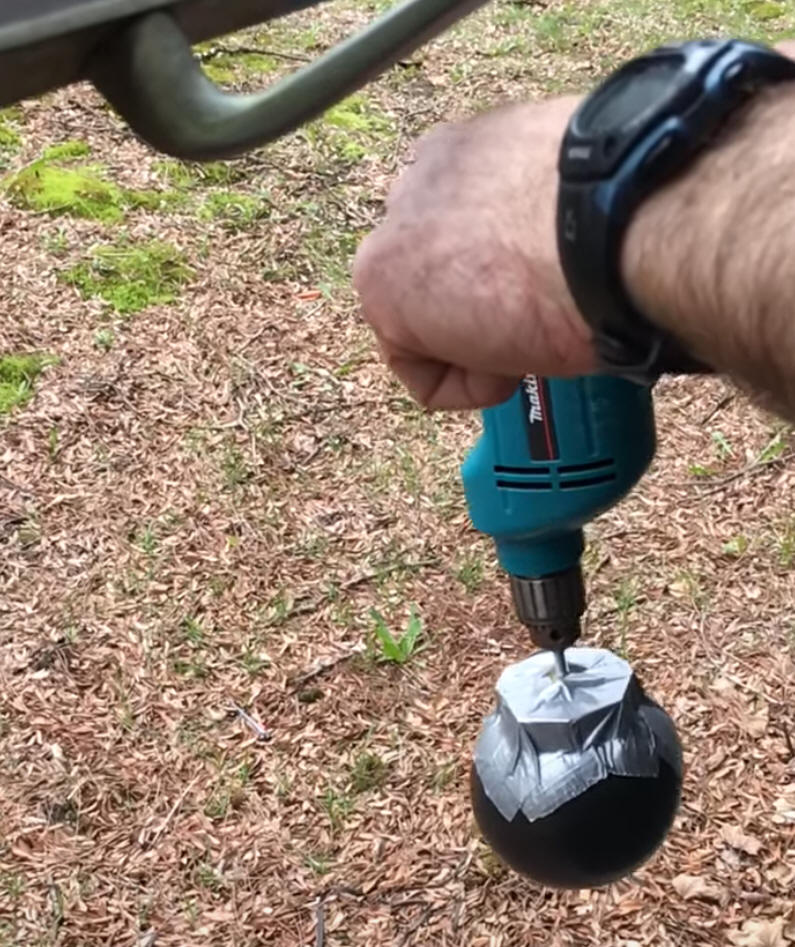 Class
24:
Thursday,
10/15/2020
Class
24:
Thursday,
10/15/2020Warm Up:
1. What will happen if I spin a water balloon using a drill (as shown in the photo on the right)?
2. Explain why.
Video
Today:
- All Students -- 8:00 Google Meet -- Use the link at the top of the page in Google Classroom (or watch the recording later -- class YouTube playlist).
- All Students (practice): Complete the Solar System formation questions in Google Classroom. Then check your answers by watching my video.
- Gold Students: Return quizzes. Anyone who wants to retake any quiz can do that tomorrow.
 Class
23:
Tuesday,
10/13/2020
Class
23:
Tuesday,
10/13/2020Warm Up:
1. The first diagram on the right shows four hydrogen
atoms that combine to make one
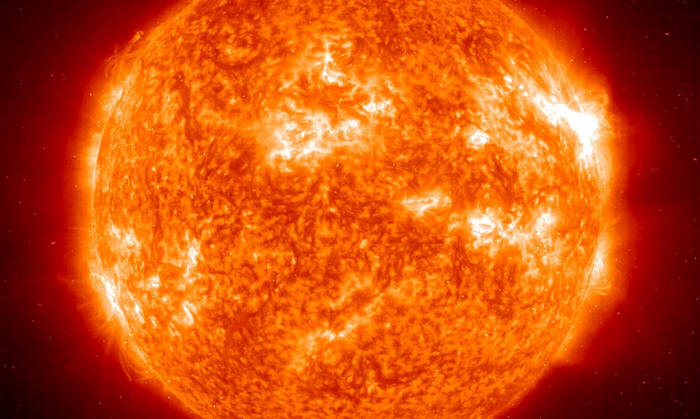 helium atom. What looks
wrong?
helium atom. What looks
wrong?
2. E = mc2 is a famous equation. What do each of the letters in the equation represent?
3. Why does the sun shine? Why does it really shine?Today:
- All Students -- 8:00 Google Meet -- Use the link at the top of the page in Google Classroom (or watch the recording later -- class YouTube playlist).
- Blue Students:
- Waves Quiz
- Take other missing quizzes -- or retake quizzes with low scores (Physical Properties and/or Objects in Space)
- All Students: No new homework! But it would be a good idea to review your notes and study for a retake if you're hoping to take one.
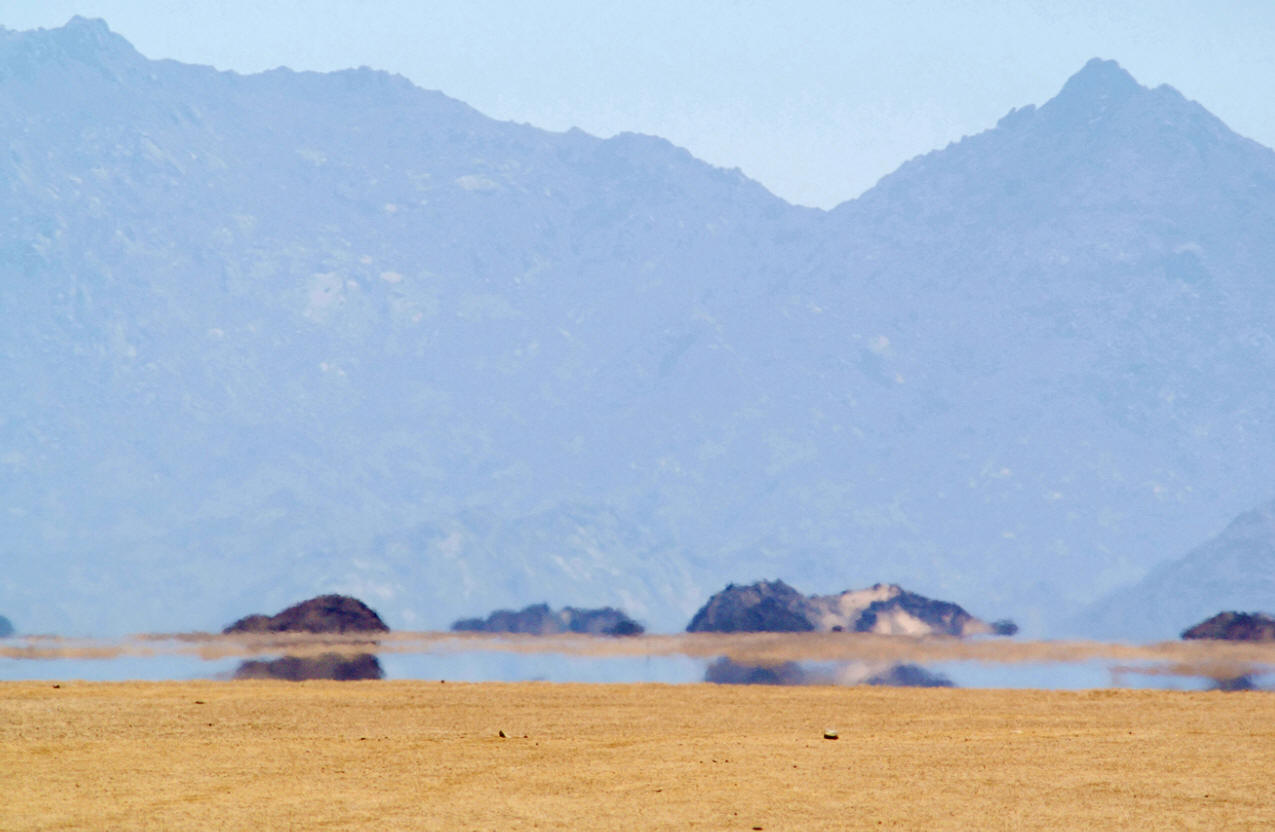 Class
22:
Thursday,
10/8/2020
Class
22:
Thursday,
10/8/2020Warm Up:
What is a mirage? What causes mirages?
Today:
- All Students -- 8:00 Google Meet --
Use the link at the top of the page in
Google
Classroom (or watch the recording later --
class YouTube playlist).
- Super-brief preview of the next units...
- Solar System Formation
- Earth's formation
- Star Life Cycles
- Formation of The Universe
- Super-brief preview of the next units...
- Gold Students:
- Throw the Doppler ball.
- Waves Quiz
- Optional retakes of other quizzes (Physical Properties and/or Objects in Space)
- All Students (practice):
- No homework! Enjoy your long weekend.
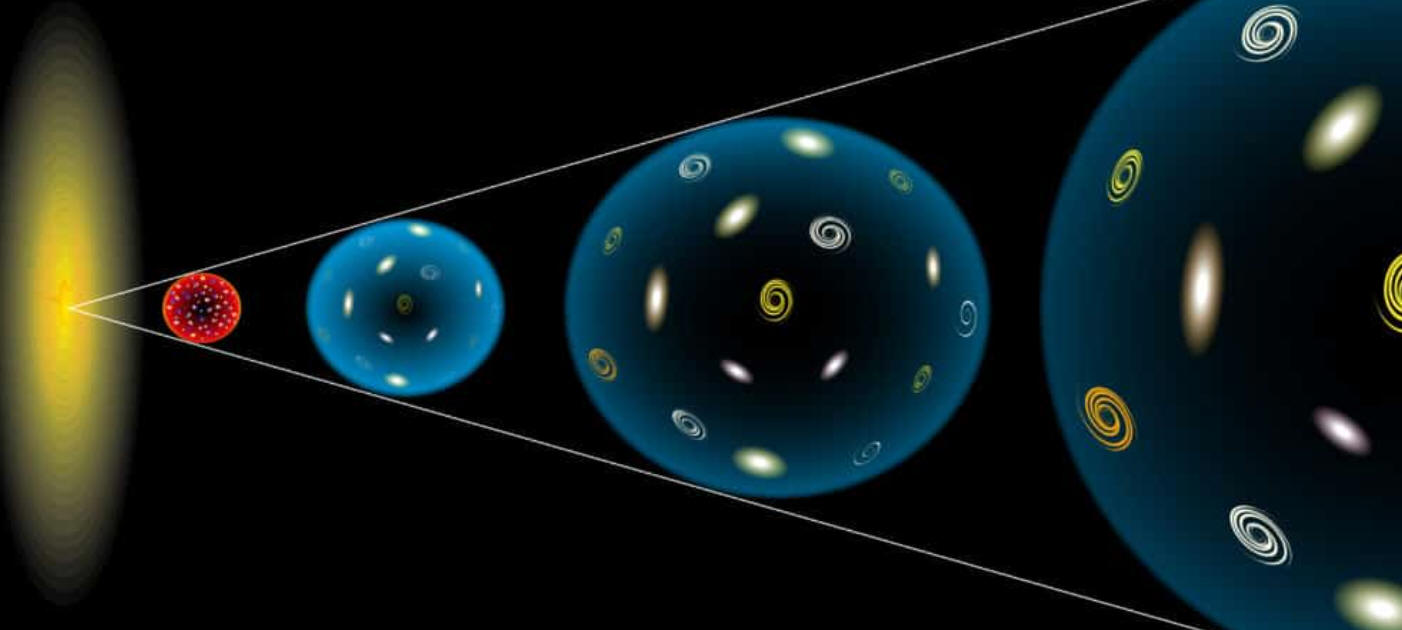 Class
21:
Wednesday,
10/7/2020
Class
21:
Wednesday,
10/7/2020Warm Up:
The Universe is expanding. We know this because of the Doppler Effect. When we look at stars in distant galaxies, we see a _________ (blue-shift or red-shift).
Today:
- All Students -- 8:00 Google Meet --
Use the link at the top of the page in
Google
Classroom (or watch the recording later --
class YouTube playlist).
- Go over the homework.
- Take the Waves practice quiz. pdf version Answers
- All Students (practice):
- Study/review for the Waves Quiz. Take the quiz over and over. Ask yourself how the questions might be reversed or modified, and how that would change your answer.
- Quiz tomorrow -- Gold will take it in person. Remote will take it during the Google Meet. Blue can take it during the Google Meet, or you can wait until next Tuesday and take it in class.
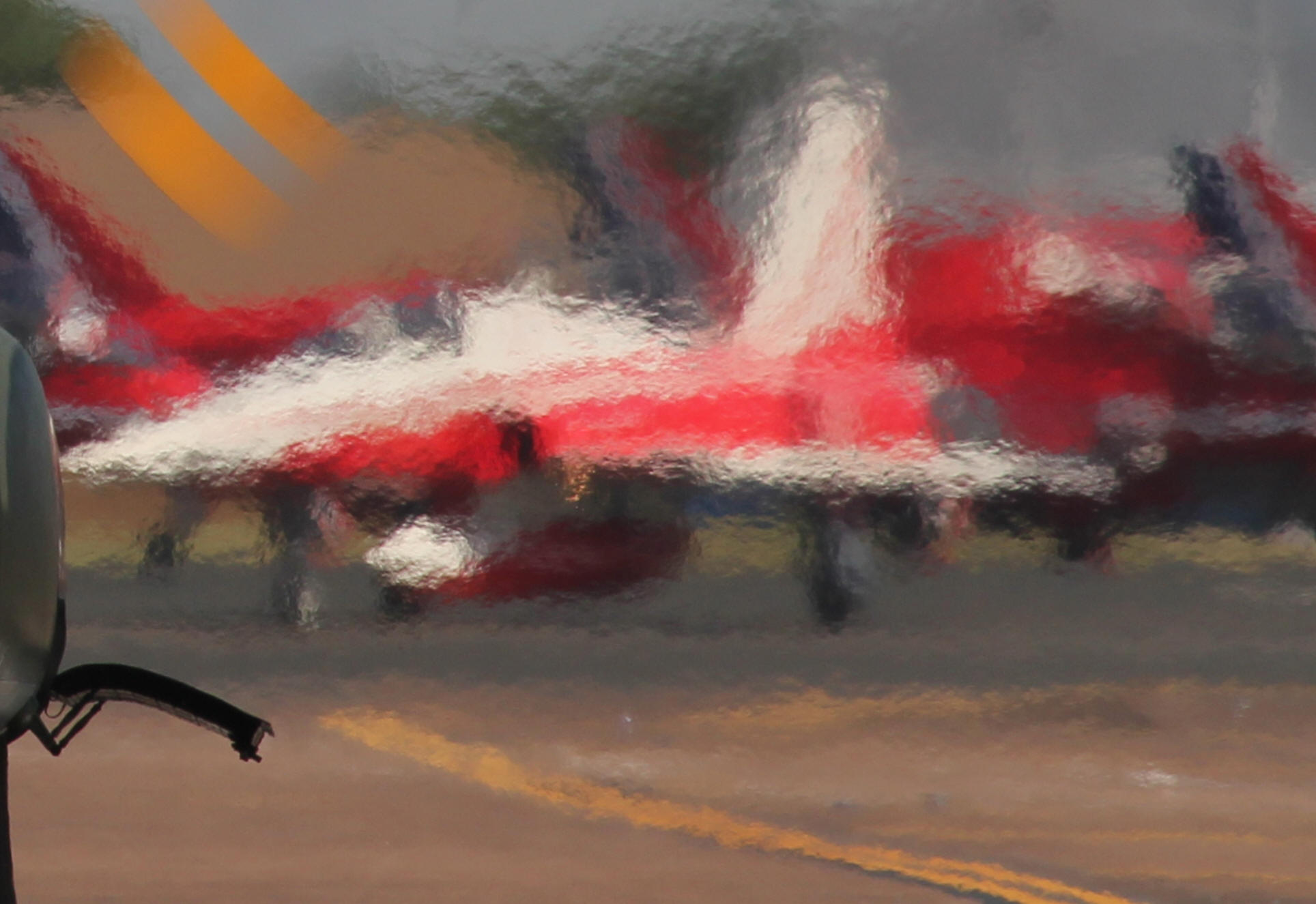 Class
20:
Tuesday,
10/6/2020
Class
20:
Tuesday,
10/6/2020Warm Up:
1.What are we seeing in the top picture on the right? link
2. How is this related to stars twinkling -- and planets not twinkling?
3. If you're standing next to a race track, what do you hear as the cars pass you?

a. Their pitch changes from high to low.
b. Their pitch changes from low to high.
c. There is no change in pitch.
Today:
- All Students -- 8:00 Google Meet --
Use the link at the top of the page in
Google
Classroom (or watch the recording later --
class YouTube playlist).
- I added a point to everyone's quiz grade, because I miscounted the number of questions on the back (due to my weird numbering).
- Review the Quizlet -- do some quizzing.
-
Notes: Doppler Effect pdf version filled-in notes
-
Doppler Effect Videos and Simulations
-
-
Tomorrow we will review waves. Quiz on Thursday over waves. On Tuesday we will get back to Astronomy.
- All Students (practice): Study this Quizlet (Wave Behaviors)
-
Blue Students:
- Retake opportunity -- if you want it. You will get another chance tomorrow.
-
Gold Students:
- If you want to retake either of your first two quizzes, you can do that on Thursday. But don't retake your quiz without studying!
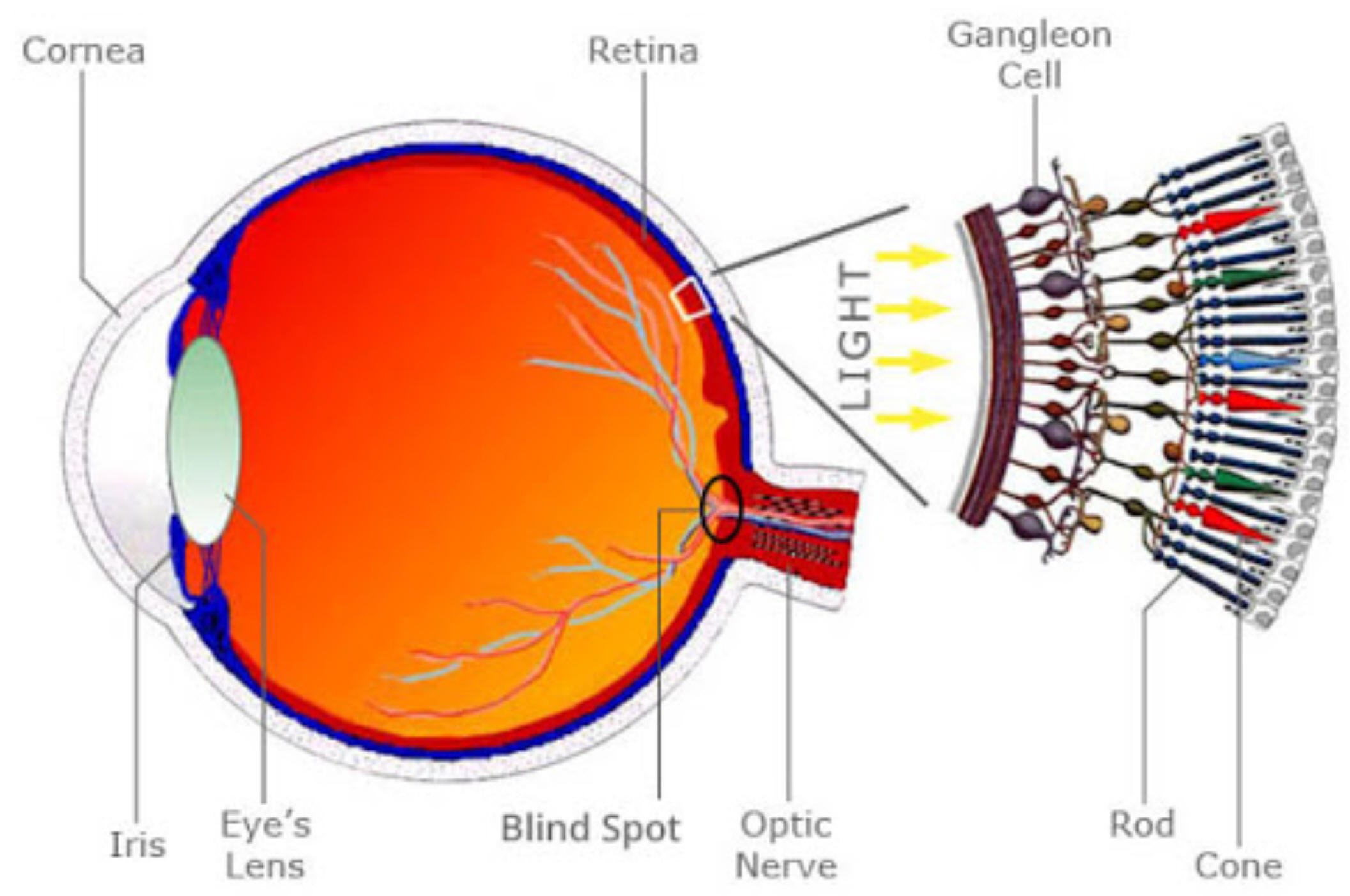 Class
19:
Monday,
10/5/2020
Class
19:
Monday,
10/5/2020Warm Up: Did you know that you have a two blind spots? Lets find them!
Today:
- All Students -- 8:00 Google Meet --
Use the link at the top of the page in
Google
Classroom (or watch the recording later --
class YouTube playlist).
- Review the homework. There are 18 students in this class. Thank you to the 7 of you who did the homework. Why didn't the other 11 of you do it? If you want a good grade and a low stress level, you are going to need to study/practice in this class. Be consistent.
-
Notes:
Wave Behaviors
pdf version
filled-in version
- Why is the sky blue? Why are sunsets and sunrises red? Why doesn't the Sun ever look white?
- How can I burn paper with a flashlight?
- How does a prism work?
- We have one more thing to learn about waves (I think) -- Doppler Effect. Then there will be a quiz -- probably on Thursday. We will review on Wednesday.
- All Students (practice): Study this Quizlet (Wave Behaviors)
-
Blue Students:
- Retake opportunity -- if you want it. You will get another chance tomorrow.
-
Gold Students:
- If you want to retake either of your first two quizzes, you can do that on Thursday. But don't retake without studying!
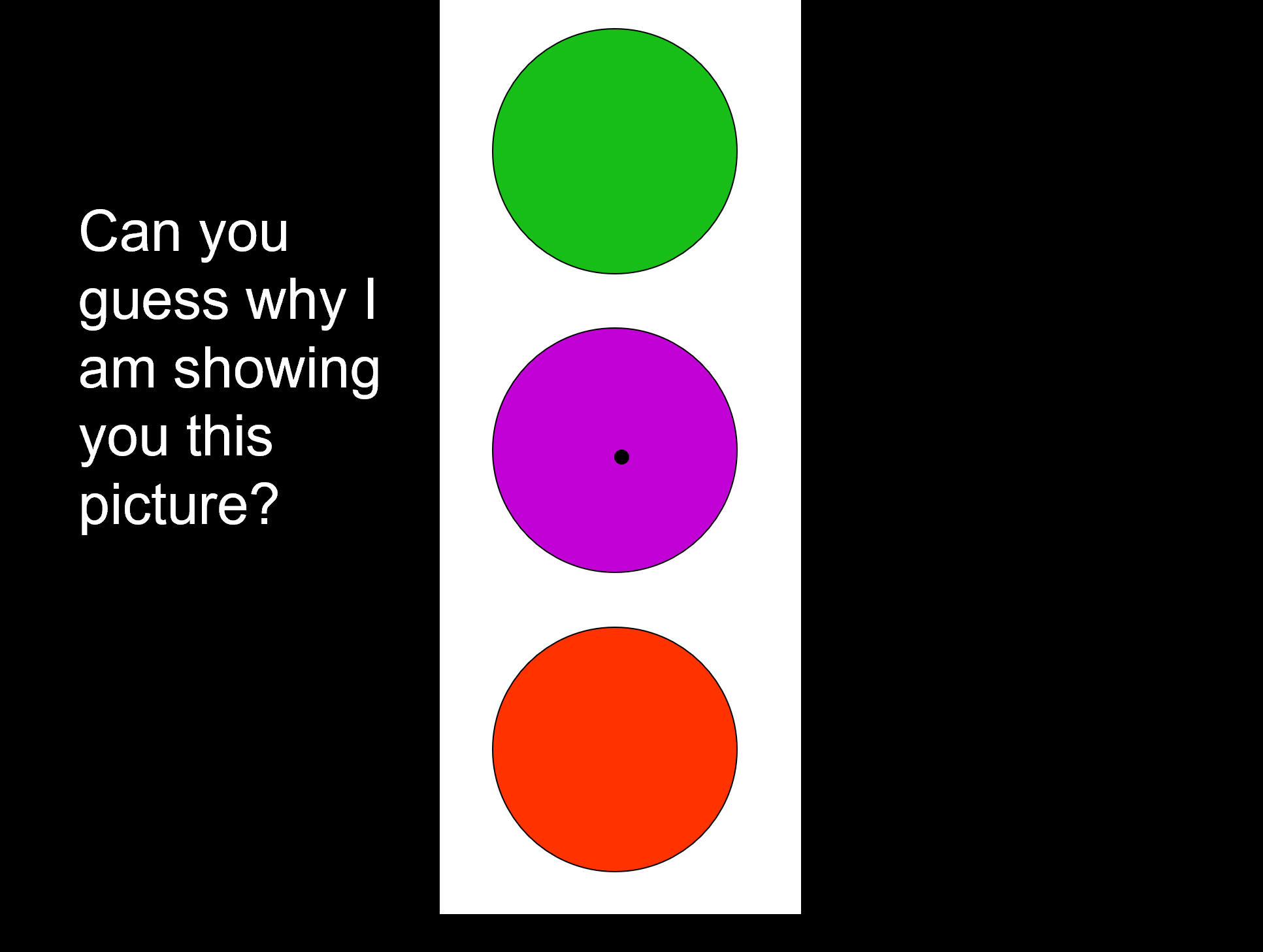 Class
18:
Friday,
10/2/2020
Class
18:
Friday,
10/2/2020Warm Up: See picture
Today:
- All Students -- 8:00 Google Meet --
Use the link at the top of the page in
Google
Classroom (or watch the recording later --
class YouTube playlist).
- Return and discuss quizzes. Come up with strategies for doing better next time.
-
Finish
Notes:
2nd page of Waves part 1
pdf version
Filled-in notes
- Powerpoint: Waves, Stars, Etc.
- RGB color model -- adding light
- CMYK color model -- adding pigment (paints)
- All Students (practice):
- Complete the practice questions ("Waves Practice") in Google Classroom
- If you would like to retake yesterday's quiz, study. Watch today's class video for reminders about how to prepare.
- Here's a quizlet that should help you prepare for a retake. I plan to add to it later today. Do not use it in reverse mode. Shuffling the deck is fine.
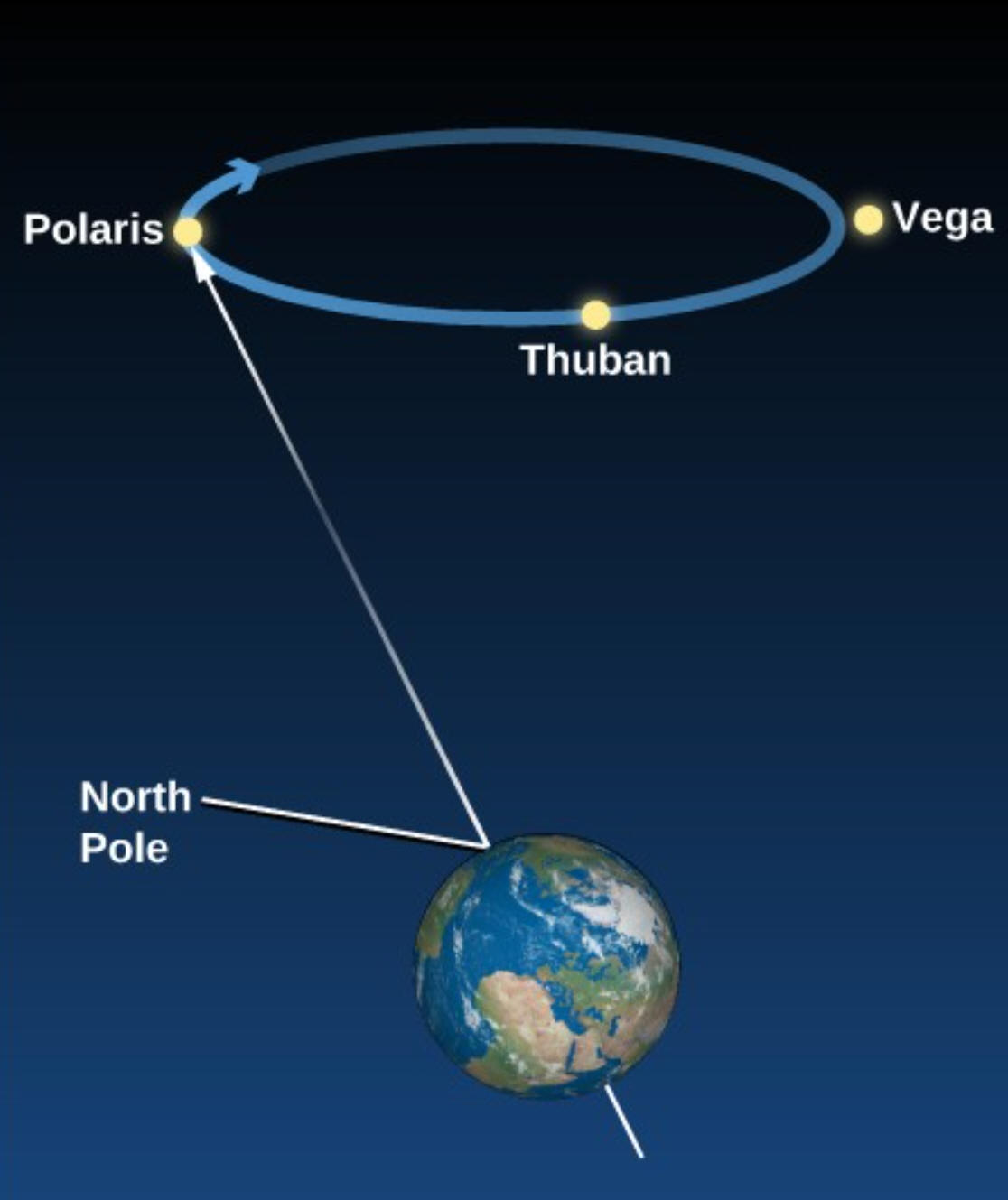 Class
17:
Thursday,
10/1/2020
Class
17:
Thursday,
10/1/2020Warm Up:
Your assignment was to measure the altitude of Polaris.
1. What altitude would Polaris have if you lived at the North Pole?
2. What if you lived at the equator?
3. How can we find the altitude of Polaris (here in Essex, VT) without going out and looking at Polaris?
4. Sadly, in 12,000 years, you won't be able to use the Big Dipper to find the North Star. Why not?
future and past pole
stars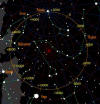 Period of Earth's precession.
Period of Earth's precession.
Today:
- All Students -- 8:00 Google Meet --
Use the link at the top of the page in
Google
Classroom (or watch the recording later --
class YouTube playlist).
- New stargazing option (if you have a zero for finding Polaris)
- Brief Notes: First page of Waves part 1 pdf version Filled-in notes
- Blue and remote begin Quiz
- No homework!
- Gold Students:
- Return old quizzes and film canister submarine answers. Multiple choice retakes tomorrow for anyone who wants one.
- Quiz
- Time for clouds in bottles?
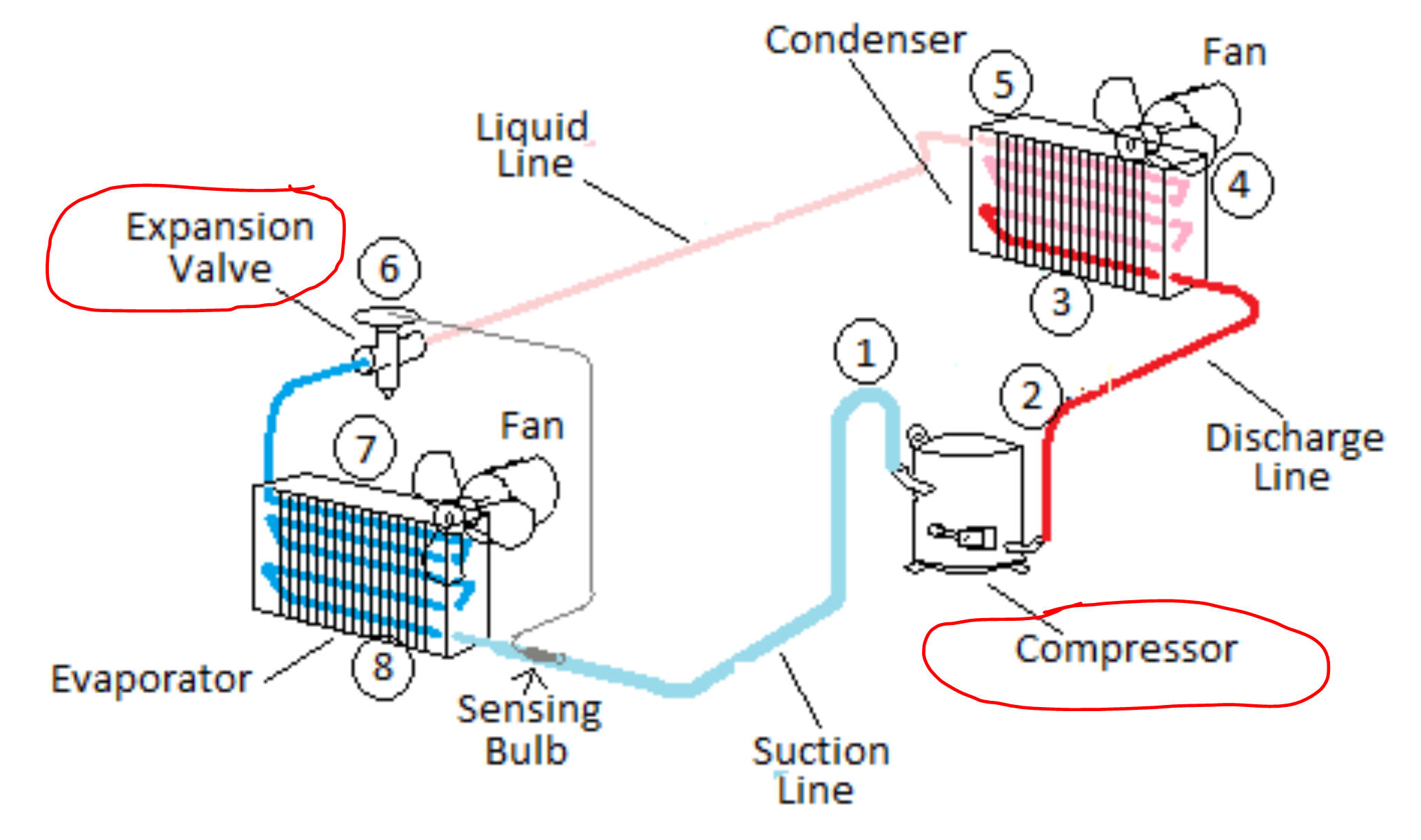 Class
16:
Wednesday,
9/30/2020
Class
16:
Wednesday,
9/30/2020Warm Up:
The diagram on the right shows a basic refrigeration unit. I have circled the compressor and the expansion valve. In this system, a substance called a refrigerant, moves through the pipes.
1) What happens to the temperature of the refrigerant when it is compressed?
2) What happens to its temperature when it is allowed to expand?
3) In which direction is the refrigerant flowing through the pipes?
4) Can you guess the purposes of the fans and radiators? Do you know what a radiator does?
Today:
- All Students -- 8:00 Google Meet --
Use the link at the top of the page in
Google
Classroom (or watch the recording later --
class YouTube playlist).
- Go over the practice quiz.
- All Students -- Practice:
- Study for the quiz. If you're Gold, you will take the quiz tomorrow in class. If you're Blue or Remote, you will take the quiz tomorrow during class. Blue and Remote students must check into our Google Meet. Turn on your camera and point it at you while you're completing your quiz. Turn on your mic. At the end, sign this honor pledge... "On my honor, I have not received any aid on this quiz. [your signature]."
-
Important Concepts:
- Definitions of mass, volume, density, and weight
- How temperature relates to motions of molecules and pressure
- How squeezing and releasing a gas can cause its temperature to change.
- Here are some things you can review:
 Class
15:
Tuesday,
9/29/2020
Class
15:
Tuesday,
9/29/2020Warm Up:
1. What are clouds made of? Why don't they fall?
2. How fast will a piece of chalk fall?
Today:
- All Students -- 8:00 Google Meet --
Use the link at the top of the page in
Google
Classroom (or watch the recording later --
class YouTube playlist).
- Go over the homework... Temperature, Pressure, and Stars practice.
- Take another look at Phet States of Matter Simulation. Let's squeeze a gas and see what happens.
- All Students -- Practice:
- Practice Quiz: Physical Properties of Matter. pdf version
- The actual quiz over this material will take place on Thursday -- for Blue, Gold, and Remote.
- Blue Students:
- Film canister submarines with a twist. I will tell you how to operate them. Your job is to observe your submarine and tell me how it works.
- Make clouds in bottles
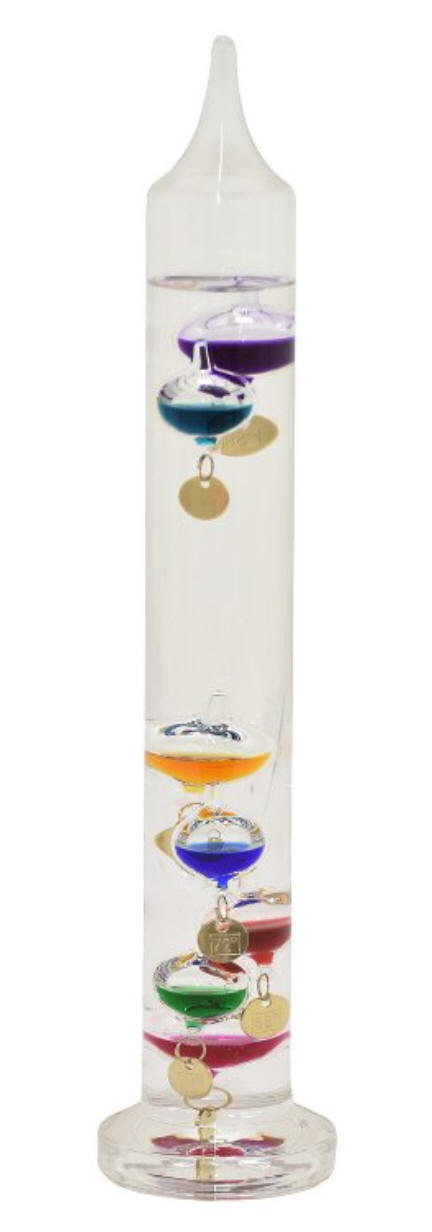
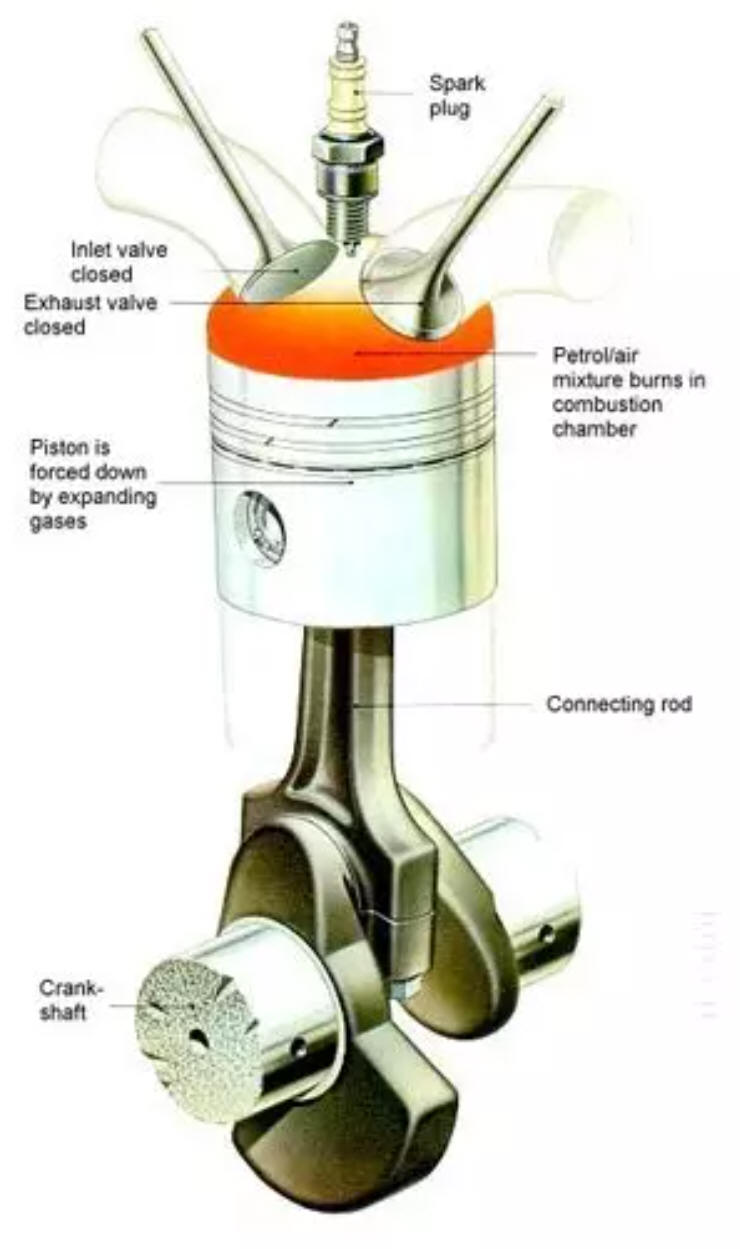 Class
14:
Monday,
9/28/2020
Class
14:
Monday,
9/28/2020Warm Up:
1. I forgot to point out that the Fall Equinox happened on Tuesday. What is the Fall Equinox? What's important about it?
2. What kinds of cars don't have spark plugs? What is the purpose of a spark plug?
3. There are all kinds of thermometers. We (all of us) often use water as a thermometer. Explain.
Today:
- All Students -- 8:00 Google Meet --
Use the link at the top of the page in
Google
Classroom (or watch the recording later --
class YouTube playlist).
- Notes: Changing Temperature by Squeezing and Releasing -- Making a cloud thermometer. Filled-in notes
- pdf version
- Gold students -- your quiz grades should be in PowerSchool. We will go over the answers tomorrow.
- All Students -- Practice: Complete Temperature, Pressure, and Stars practice.
- Blue and Remote Students:
- Quiz Retake opportunity
- If there's time... Film canister submarines with a twist. I will tell you how to operate them. Your job is to observe your submarine and tell me how it works.
 Class
13:
Friday,
9/25/2020
Class
13:
Friday,
9/25/2020Warm Up:
1. Why can't we "see our breath" right now?
2. When we do see our breath, what are we actually seeing?
3. I made a video showing how I can make my breath visible at will. Can you tell how I did it?
4. I forgot to point out that the Fall Equinox happened on Tuesday. What is the Fall Equinox? What's important about it?
Today:
- All Students -- 8:00 Google Meet --
Use the link at the top of the page in
Google
Classroom (or watch the recording later --
class YouTube playlist).
- Go over last night's homework -- the
Temperature and Pressure Practice Questions (Google Quiz
Format)

- Brief lesson/demos -- Topic: How pressure changes can cause temperature changes
- Pumping up a bottle
- Unfortunately, our fire piston has broken o-rings. Here's a video of one at work.
- Next class -- making clouds in bottles?
- Go over last night's homework -- the
Temperature and Pressure Practice Questions (Google Quiz
Format)
- Blue and Remote Students:
- Study for your quiz retake. We will do it on Monday.
- If you haven't done it already, find the altitude of Polaris!
- Gold Students:
- Quiz Retake opportunity
- If there's time... Finish the film canister submarine
activity.
- Try to explain how/why the submarine's density changes
- Discuss the answers
- No homework -- unless you still need to find the altitude of Polaris!
 Class
12:
Thursday,
9/24/2020
Class
12:
Thursday,
9/24/2020Warm Up:
1. I have a peeled, hard-boiled egg that's a little too big to fit in a milk bottle. How can I get it to go in without destroying it?
2. If I can get the egg inside, how do I get it out?
3. Can you think of any other solutions to #1 or #2?
Today:
- All Students -- 8:00 Google Meet --
Use the link at the top of the page in
Google
Classroom(or watch the recording later --
class YouTube playlist).
- We never discussed Monday night's homework! Let's do it now.
- **Note, I have set a deadline for finding the altitude of Polaris. The deadline is Sunday night. If you don't complete it by Sunday, I will be entering a zero for this grade. You can make up the zero with an alternative assignment.
- Quizlet Quizzing
- More demos -- candle in water; hovering egg?
- All Students (practice):
- Complete the Temperature and Pressure practice exercise in Google Classroom.
- In-Person Only (Blue students):
- Return Quizzes.
- Finish the film canister submarine activity.
- Retake tomorrow.
Optional Google Meet @ 8:05. I will be re-doing yesterday's Google Meet for anyone who missed it (since the recording from yesterday didn't have sound).
 Class
11:
Tuesday,
9/22/2020
Class
11:
Tuesday,
9/22/2020Warm Up:
1. What will happen if I put a balloon over a flask of water and then boil the water?
2. What will happen if I put the flask on ice?
3. Will the balloon behave differently if I put it on after the water is already boiling?
4. What will happen if I inflate a balloon, tie it off, and then place it in cold water?
5. Why does all of this happen?
Today:
- All Students -- 8:00 Google Meet --
Use the link at the top of the page in
Google
Classroom(or watch the recording later --
class YouTube playlist).
- No Google Meet Tomorrow! Today's assignment isn't due until tomorrow night at midnight.
- Discuss new option for the quiz retake -- For Gold/Remote people, it will be on Friday. I will give your quizzes back (for you to keep, this time) on Thursday.
- Discuss the homework
- Begin learning about kinetic molecular theory (and its relationship to temperature, pressure, phase changes, and properties of matter)
- All Students (practice):
- Study this Quizlet -- Physical Properties I may be calling on you to answer some of these during class.
- Gold students -- Study for a quiz retake (Objects in Space Quiz) on Thursday
- In-Person Only (Blue students):
- Return Quizzes. Take pictures if you want, but I want to keep them, so I know what your scores were on each section. That way I can give you the right grade if you retake a section and get a better score.
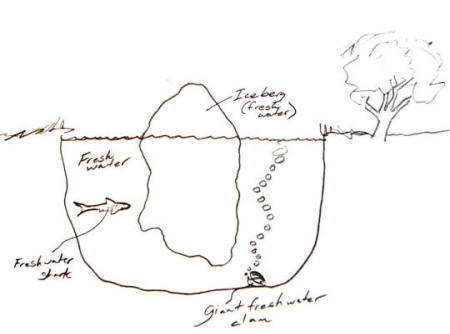 Class
10:
Monday,
9/21/2020
Class
10:
Monday,
9/21/2020Warm Up:
1. An iceberg is floating in a lake. What will happen to the water level if the iceberg suddenly melts? Why?
2. Does the weight of an object (e.g. a rock, a boat, an ice berg) change when you put it in water? Explain how you know.
3. What does change when you put something in water? Why does the weight feel different?
Today:
- All Students -- 8:00 Google Meet --
Use the link at the top of the page in
Google
Classroom(or watch the recording later --
class YouTube playlist).
- Announcement -- I won't always be organized enough to give you a handout ahead of time. And if you don't have a printer at home, that's okay!
- Finish the rest of Physical properties of matter Physical Properties Notes -- Filled-in
- Remote students -- stay on the Google Meet for the quiz.
- All Students (homework):
- Complete the properties of matter practice quiz pdf version Here's a video of me explaining the answers If you can't print this, just write the answers on a sheet of paper.
- In-Person Only (Blue students):
- Objects in Space Quiz -- I will share the quiz with the remote people. Make a copy and put your name in the title. Then share your copy with me.
- Remote students, please complete the quiz at the same time as the blue students. Stay in Meet with the microphone on, and point your camera at yourself while you work. As soon as you are finished, take a picture of your quiz pages and email me the pictures (jstapleton@ewsd.org).
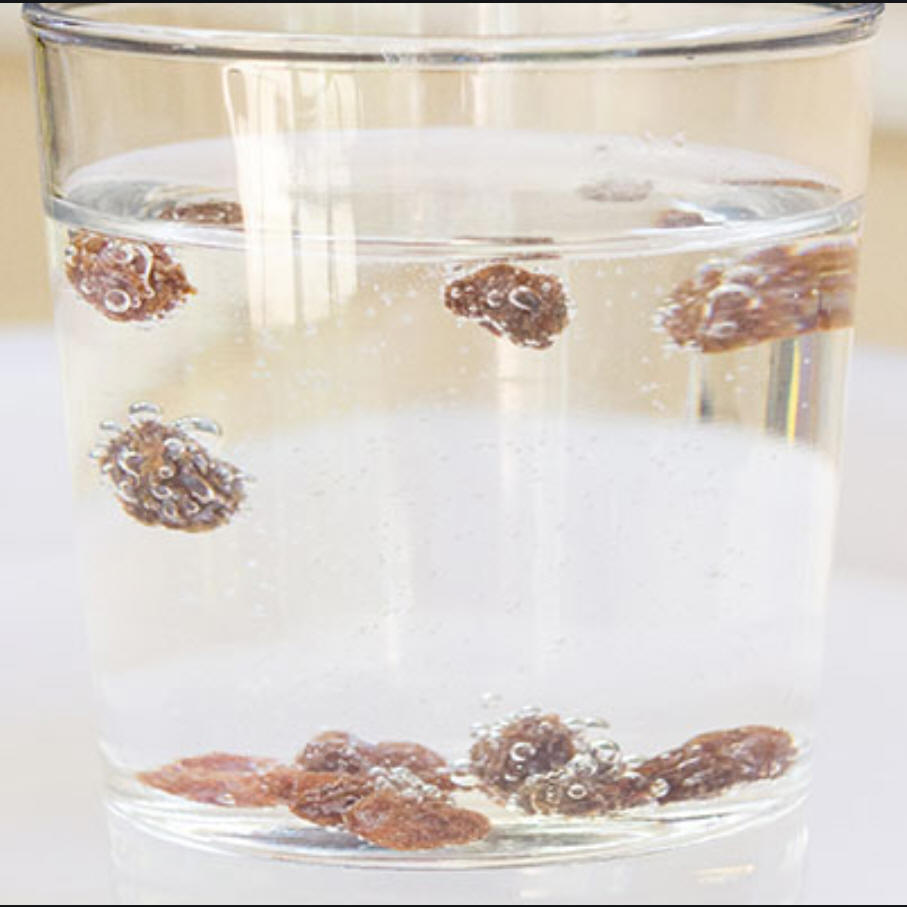 Class 9:
Friday!!!!,
9/18/2020
Class 9:
Friday!!!!,
9/18/2020Warm Up: Why do raisins "dance" when you put them in carbonated water? What is carbonated water?
Today:
- All Students -- 8:05 Google Meet --
Use the link at the top of the page in
Google
Classroom(or watch the recording later --
class YouTube playlist).
- Go over the homework in Physical properties of matter Physical Properties Notes -- Filled-in
- Introduction to film canister submarines
- Remote and Blue Students:
- Study for your quiz on Monday. It will be a different mix of questions than the ones on the Gold group quiz.
- In-Person Only (Gold students):
- Return Quizzes. Take pictures if you want, but I want to keep them, so I know what your scores were on each section. That way I can give you the right grade if you retake a section and get a better score.
- Film canister submarine activity
- No homework!
- AR
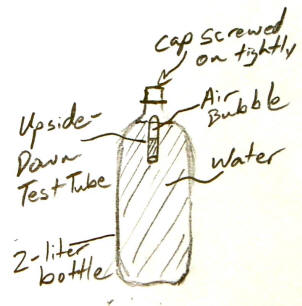 Class 8:
Thursday, 9/17/2020
Class 8:
Thursday, 9/17/2020Warm Up:
The bottle on the right contains a "cartesian diver." The diver dives when the bottle is squeezed, and the diver rises when the bottle is released. Why does this happen?
Today:
- All Students -- 8:05 Google Meet --
Use the link at the top of the page in
Google
Classroom(or watch the recording later --
class YouTube playlist).
- Begin New Unit: Properties of Matter
- Work throuh this...
- All Students -- Practice/Homework:
- Complete #19-21 of the physical properties handout. If you're remote, and you don't have a printer, you can write the answers on any kind of paper.
- In-Person Only (Gold students):
- Quiz over the Unit 1 Objects in Space facts (Quizlet information)
- If there's time... Mr. Stapleton's Slideshow
 Class
7:
Wednesday,
9/16/2020
Class
7:
Wednesday,
9/16/2020Warm Up:
1. What would happen if you made a hole through the center of the Earth, and you jumped in?
2. If you made it all of the way through, where would you come out? (antipodes map)
Today:
- All Students -- 8:05 Google Meet --
Use the link at the top of the page in
Google
Classroom(or watch the recording later --
class YouTube playlist).
- Discuss the fact that I forgot to put the Class #6 assignments in Google Classroom.
- Practice Test
- All Students -- Practice/Homework:
- Review all of the Unit 1 Quizlets.
- Gold students have a test tomorrow in class. You can retake any section(s) of the test and keep your higher score.
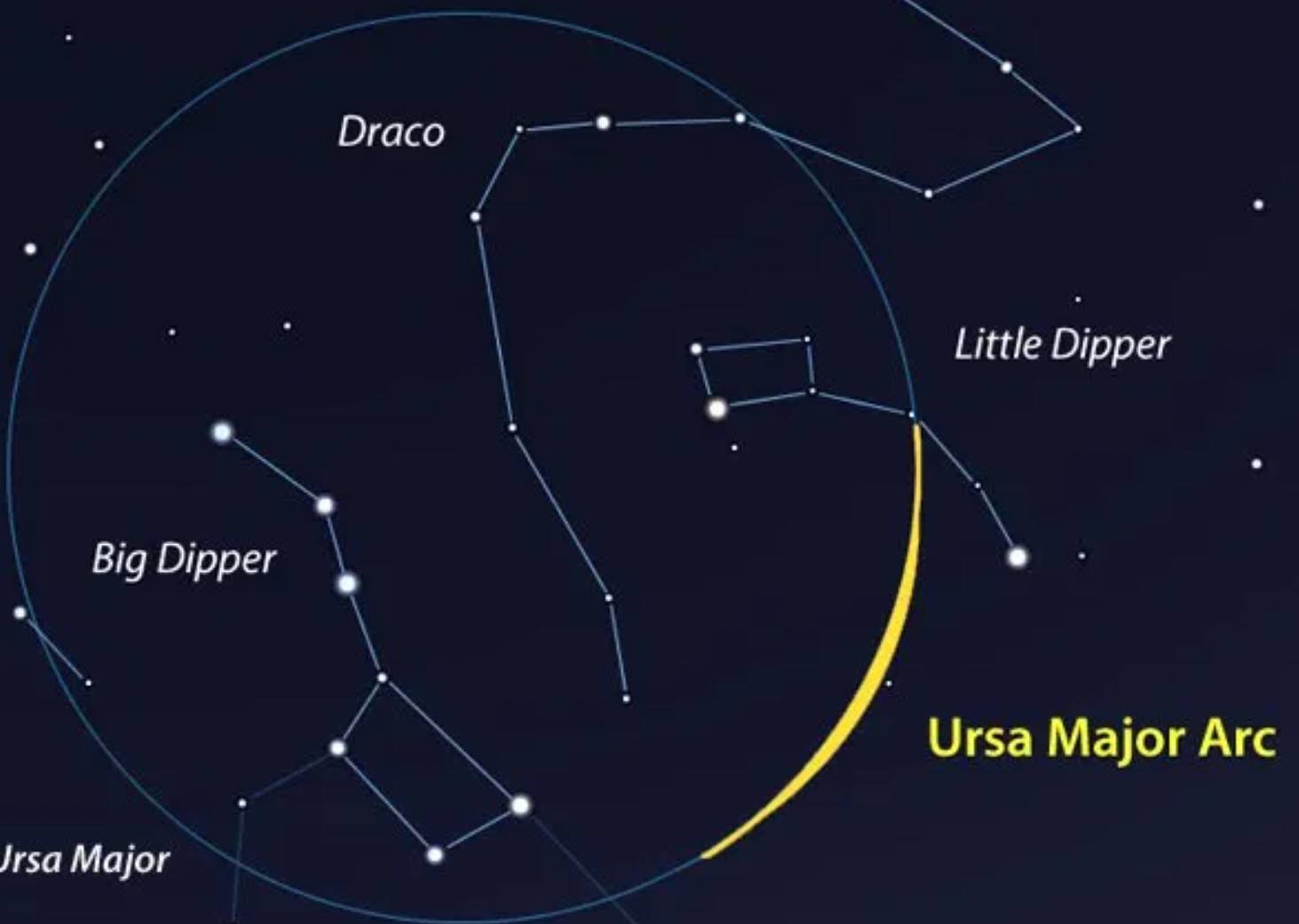 Class
6
Tuesday,
9/15/2020
Class
6
Tuesday,
9/15/2020Warm Up:
1. Find Polaris (the North Star) in the picture on the right.
2. Why might Polaris be harder to find tonight?
3. Suppose you went out last night and looked at the night sky, and it looked like the picture on the right. What time was it? Follow these directions for telling time with the Big Dipper.
I just learned that the Big Dipper isn't a constellation, it's an asterism.
- All Students -- 8:05 Google Meet --
Use the link at the top of the page in
Google
Classroom (or watch the recording later --
class YouTube playlist).
- The last topic for this Unit --
Beyond The Solar System
Mr. Stapleton's teaching links
- Fix some things on the hard copy sheet (delete some and switch some to bonus facts).
- Watch
- The last topic for this Unit --
Beyond The Solar System
Mr. Stapleton's teaching links
- All Students -- Practice/Homework:
- Quizlet Practice -- Beyond The Solar System
- In-Person Only:
- Work time or Solar System walk -- lets see how we feel.
Warm Up:
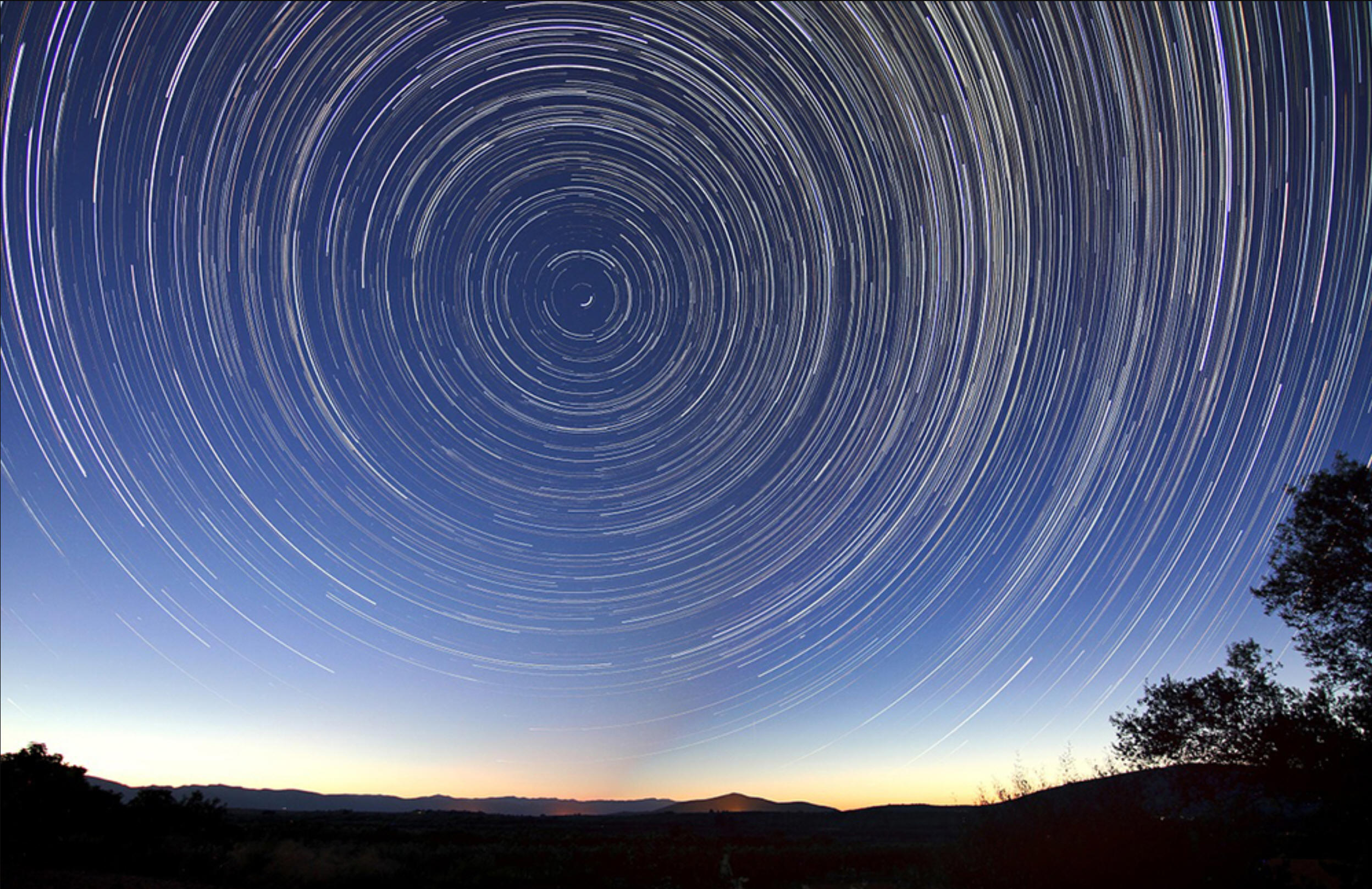
- What are the lines in the sky?
- How was the picture created?
- Why are the lines arranged in a circular pattern?
- If this picture was taken in the Northern Hemisphere, in which direction did the circles form? (clockwise or counter-clockwise)
- Which stars are moving faster, the inner ones or the outer ones? ** this is a trick question**
- If there is a star near the center, what is its name?
- Why did the photographer have to stop the picture before the stars made a complete circle?
Today:
- All Students -- 8:05 Google Meet --
Use the link at the top of the page in
Google
Classroom (or watch the recording later --
class YouTube playlist).
- Learn about The Sun and Other Stars. Mr. Stapleton's teaching links
- Take a look at quizlet -- review how to get into flashcard mode. Did you know you can use quizlet on your phone? There's an app.
- All Students -- Practice/Homework:
- Quizlet: The Sun and Other Stars. Practice the flash cards until you know all of the terms.
- Fill out this student information survey
- In-Person Only:
- Mr. Stapleton slideshow.
- Work time or Solar System walk -- lets see how we feel.

